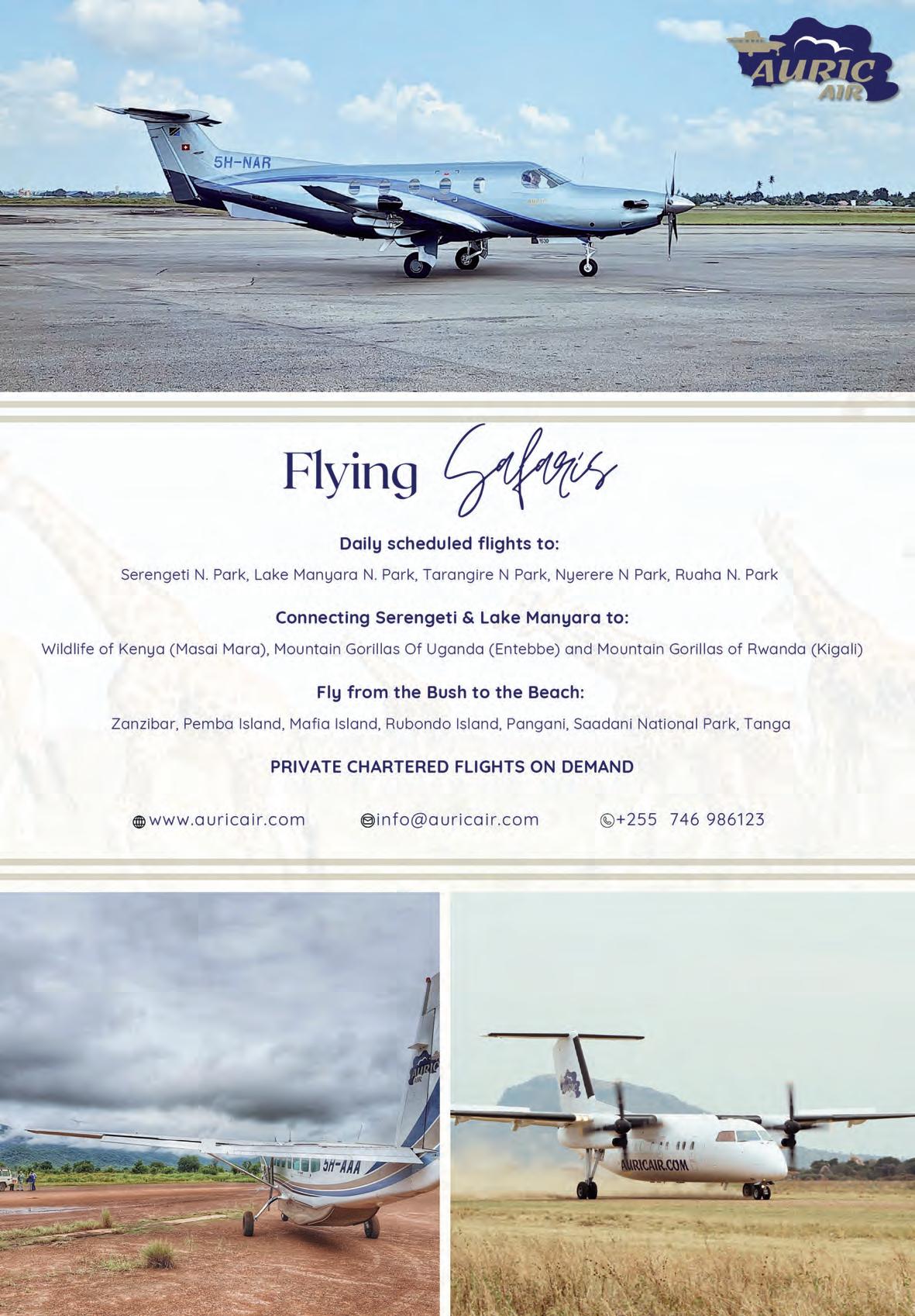












As the Minister of Natural Resources and Tourism of the United Republic of Tanzania, I am pleased to invite you to the 8th Edition of the Swahili International Tourism Expo - S!TE 2024, scheduled to take place from October 11th to 13th, 2024 in Dar es Salaam. This event celebrates our nation's magnificence, hospitality, and vibrant tourism industry, offering valuable business connections in travel and hospitality.
Tanzania, with its stunning natural landscapes, diverse wildlife, and vibrant cultural heritage, stands as a unique and leading tourist destination in Africa. It plays a crucial role in the country's economy, contributing to 17.2% of the GDP, 25% of foreign exchange earnings, and creating over 1.6 million jobs. The government of Tanzania has implemented several initiatives to enhance the performance of the tourism sector. These include launching the "Tanzania - The Royal Tour" program by Her Excellency Dr. Samia Suluhu Hassan, President of the United Republic of Tanzania. The program promotes the country's abundant tourist attractions and investment opportunities. Additionally, the government has focused on improving destination connectivity by revitalizing the national carrier, Air Tanzania, to connect the country with its source markets better. Furthermore, efforts have been made to enhance tourism services and infrastructure, including roads and airports in key tourist destinations.
We express our sincere gratitude to all exhibitors, buyers, and esteemed sponsors for your invaluable support and dedication to our upcoming event. The Ministry of Natural Resources and Tourism holds your contributions in the highest regard and recognizes your pivotal role in advancing our tourism sector. Through S!TE 2024, our primary objective is to foster stronger partnerships with all stakeholders in the tourism industry, inspire innovation, and establish a solid framework for enduring and mutually beneficial business relationships. Furthermore, we cordially invite you to collaborate with us in conserving our precious natural and cultural heritage while promoting sustainable and responsible tourism practices.
We sincerely thank all our esteemed international guests, partners, and exhibitors for their valuable participation in S!TE 2024. Your presence not only underscores the worldwide significance of this expo but also exemplifies your commitment to nurturing a prosperous global tourism future.
We welcome you to the Swahili International Tourism Expo - S!TE 2024. Karibu sana. Asante!

Amb.
Dr. Pindi Hazara Chana (MP) MINISTER OF NATURAL RESOURCES AND TOURISM
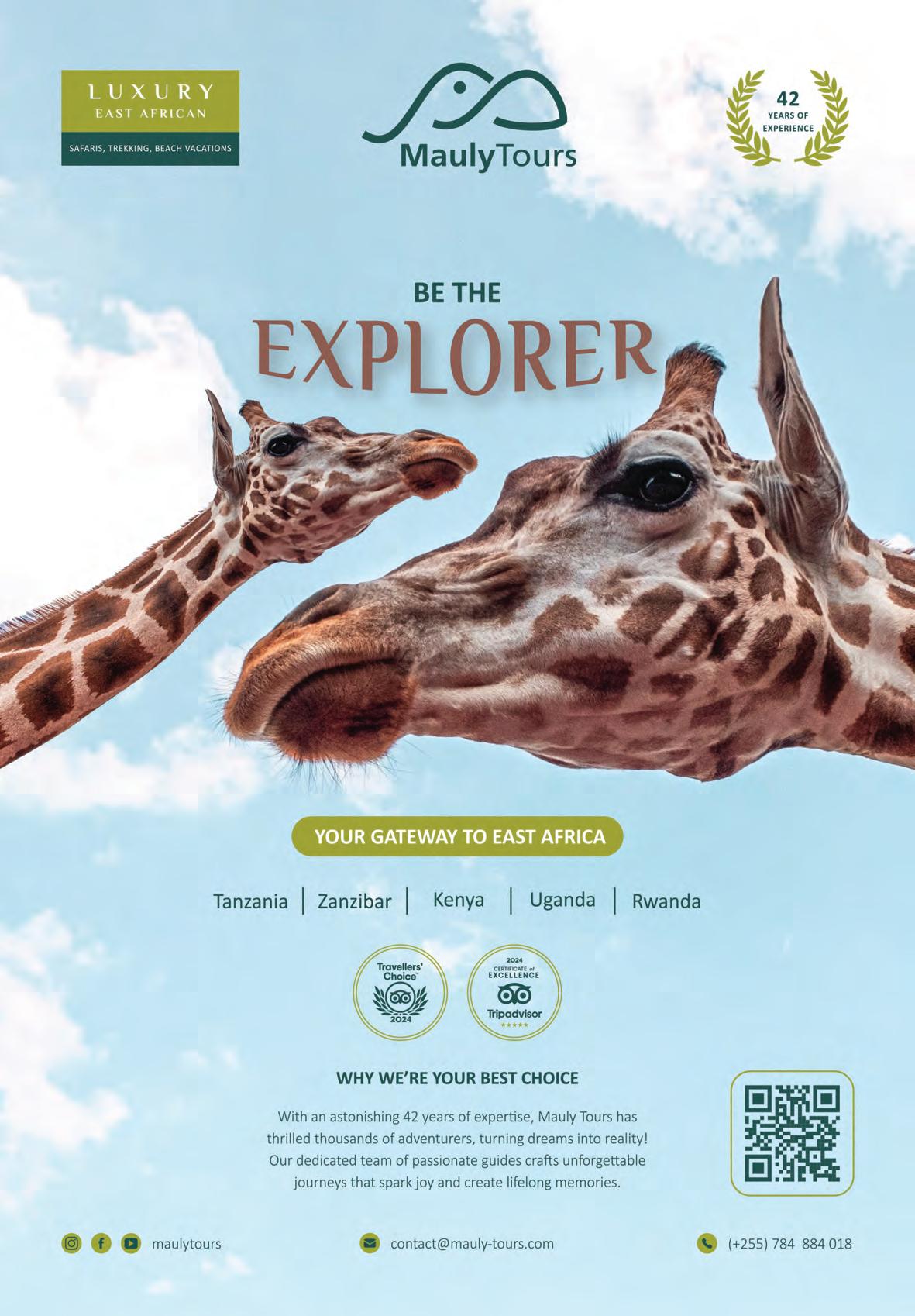


Esteemed Guests and Tourism Stakeholders,
It is with great pleasure that we extend a warm welcome to the 8th Edition of the Swahili International Tourism Expo (S!TE 2024), held from October 11th to 13th, 2024, in the dynamic coastal city of Dar es Salaam, Tanzania. This year, we are honored to anticipate the participation of over 240 exhibitors and numerous international buyers from more than 33 key markets across the globe.
S!TE 2024 is not just another expo. It's a unique opportunity for professionals within the tourism sector to connect and participate in valuable business networking. More than that, it's a platform to explore Tanzania's varied and abundant tourist attractions and exceptional investment prospects.
The upcoming expo will feature informative familiarization trips highlighting the lesser-known attractions of our destination. Attendees will have the opportunity to discover the expansive Nyerere National Park, the historically significant Kilwa Ruins (a UNESCO World Heritage Site), the captivating whale shark habitats of Mafia Island, the fragrant Spice Island of Zanzibar, the primate-rich Gombe National Park, and the picturesque landscapes of Mikumi, Udzungwa, and Ruaha National Parks. These destinations offer a unique blend of cultural and wildlife experiences complemented by Tanzania's renowned hospitality.
It is with great pleasure that I extend a most sincere and gracious invitation to all of you on behalf of the Tanzania Tourist Board. We are wholeheartedly committed to facilitating and supporting your exploration of Tanzania. Our utmost priority is ensuring that your participation at S!TE 2024 is enriching and highly productive.
With warm regards,

Mr. Ephraim B. Mafuru DIRECTOR GENERAL TANZANIA TOURIST BOARD (TTB)









Promoting Tanzania as a Leisure & Adventure


Travel Destination

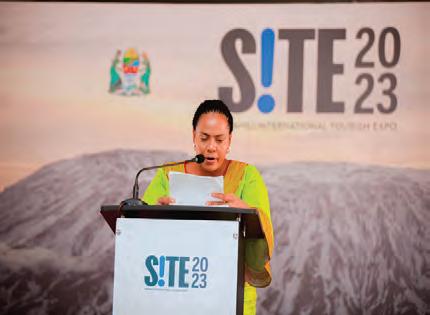
















The 7th Edition of Swahili international Tourism Expo (S!TE) had received a massive thumbs up from literally everyone. Credit goes to the organisers of the event, especially the Tanzania Tourism Board (TTB) for setting up a not only a wonderful trade show, but going as far as attracting a growing number of hosted buyers and exhibitors that meant business and were keen on engaging with the business community within the travel, tourism and hospitality sectors across Tanzania and the entire region.





FThe event aimed at promoting Tanzania’s tourism to international markets and also facilitated linking of companies based in Tanzania, Eastern and Central Africa with tourism companies from other parts of the world.
Minister of Natural Resources and Tourism Angellah
Kairuki officially opened the 7th edition of the Swahili International Tourism Expo and pledged the government's continued improvement of the country's infrastructure of tourism services.
S!TE 2023 was attended by more than 200 domestic and overseas exhibitors, over 100 international hosted buyers from more than 27 countries worldwide, and more than 5,000 trade visitors. The expo has attracted stakeholders in the tourism industry from countries including China, Russia, Indonesia, India, the United Kingdom, Oman, Mozambique, Uganda, Malawi, Algeria and Zimbabwe.
The opening ceremony of the three-day tourism expo, themed "Responsible Tourism for Inclusive Growth," featured cultural performances by students from the Chinese Confucius Institute at the University of Dar es Salaam, as well as participants from India, Indonesia, Rwanda, Mozambique and the host country, Tanzania leaving the invited guests, buyers and exhibitors practically amazed.
Since the inception of S!TE, the event has successfully drawn in approximately 980 international buyers, representing 50 major tourism companies worldwide.
Our strategy is to expand the expo to become a continent-wide showcase, bringing together all African countries. This is possible given the type of attractions that we have and the existing infrastructure. These expos have consistently generated a positive response, leading to an increase in both tourist arrivals and national income.
- By Damas Mfugale, the Director-General of TTB
The expo also featured business exhibitions, speed-networking sessions and familiarisation trips to unique tourist attractions across Tanzania and also hosted Investment Forum to bring together investors from both public and private sectors. They shared knowledge and experiences on the business and investment climate in Tanzania, and investment opportunities with potential investors around the world.
The forum was jointly organised by Tanzania Investment Centre (TIC), Zanzibar Investment Promotion Authority (ZIPA), Tanzania Tourist Board (TTB), and Tanzania Private Sector Foundation (TPSF).
S!TE 2025 plans to be more successful event next year, and hopes to enhance the cultural aspect of tourism even further. S!TE also hopes to have more regional tourism organisations and associations participate.
or the past years we have been attending the S!TE trade fair as exhibitors and this show has been a great platform for us, especially the 2023 S!TE. Apart from promoting domestic tourism we also met buyers from all over the world who have shown interest in our products and some have already started selling Tanzania. We are looking forward to meeting more buyers in the upcoming S!TE event and to promote more domestic tourism.
- Zainab Ansell, Managing DirectorZara Tanzania Adventure
““We attended the show S!TE 2023 and we were really amazed to see the set up and organization as the show was a world class travel show with tranquillity. It was very professionally organised with good management. S!TE is a good platform to promote domestic tourism in Tanzania and also overseas markets. We would really love to participate in the show every year and will recommend to all Tanzania Tourism stakeholders to participate”
- MR. Firoz Dharamshi, Managing Director – Simba Safaris Ltd
I“would like to compliment the organisers of S!TE 2023 for delivering an exceptional event. The fair provided a fantastic opportunity to connect with tourism professionals and stakeholders to come together to network, share and expand our understanding of important issues, and look into the future as to where our industry is heading. Topical issues addressed by high quality keynote speeches, well-informed presentations, and interactive forums inspired motivation and dynamic interaction throughout the event. Congratulations again to all involved. Also S!TE gave us the perfect platform to showcase our products and interact with people from around the world in related sectors.
- Ms Jigna Shanghavi, Business Development Manager - Onomo Hotel DSM
T“he primary goal for us at S!TE 2023 was to establish valuable connections with overseas agents, and we can confidently say we exceeded expectations. We engaged in productive discussions, fostering relationships with key industry players. These new contacts are poised to become pivotal partners in expanding our global reach and customer base.
- Deepesh Gupta, Director of Sales - Auric Air Services Ltd





MINISTER OF NATURAL RESOURCES AND TOURISM (THEN), ANGELLAH KAIRUKI, OFFICIALLY INAUGURATED THE 7TH EDITION OF THE SWAHILI INTERNATIONAL TOURISM EXPO, REAFFIRMING THE GOVERNMENT’S COMMITMENT TO FURTHER ENHANCING THE INFRASTRUCTURE AND SERVICES THAT SUPPORT THE COUNTRY’S TOURISM SECTOR.
The S!TE’s theme this year is “Visit Tanzania for Sustainable Investment and Unforgettable Tourism”. The announcement took place during the launching of S!TE 2024 at Tanzania Tourist Board head office in Dar Es Salaam .


The expo’s objective is to create a dynamic value chain in the tourism sector, where service providers and potential buyers can forge meaningful connections. Over 145 stakeholders confirmed from 33 countries, including major markets like China, Denmark, Japan and South Africa, S!TE 2024 is poised to elevate Tanzania’s profile on the international tourism stage.
By Tanzania Tourist Board Director General, Mr Ephraim Mafuru


S!TE 2024 marks a significant milestone in the evolution of Tanzania’s tourism landscape. It will serve as a vital platform for industry stakeholders to connect and collaborate, fostering valuable partnerships that can drive innovation and growth.



He said that by highlighting the nation’s unique attractions ranging from its breathtaking wildlife and rich cultural heritage to its stunning landscapes, the expo is poised to enhance Tanzania’s reputation as a premier destination for both leisure travellers and investors seeking opportunities in the growing tourism sector.
Moreover, he said that the S!TE 2024 agenda is packed with engaging activities, including exhibitions of tourism products, business meetings that facilitate networking between local and international operators and seminars tailored for industry stakeholders.
Mafuru stressed the importance of collaboration, inviting public organisations and financial institutions to sponsor the event.
The expo will focus on the southern and western regions of Tanzania, along with Zanzibar, showcasing opportunities in areas often overlooked in favour of traditional wildlife experiences.
The exhibition will be styled as a business networking event for the tourism industry, with components of social dimensions to attract local people, families and experts during the weekend.
The event not only highlights Tanzania’s vast potential as a tourist destination but also its commitment to fostering an inclusive and sustainable tourism industry.
Issued
by
Apolinari Tairo







Serengeti Balloon Safaris is delighted to announce that they hosted their first flight over beautiful Tarangire National Park on 12th June. The flight saw the group of 22 guests fly in two balloons from the launch site located on the North West corner of the Silale swamp and then they flew over the ridge to a verdant Tarangire valley, landing for a sumptuous Out of Africa breakfast done in the usual elegant style of Serengeti Balloon Safaris under an acacia tree. With its diverse wildlife and exceptional birdlife, Tarangire offers a great alternative flight location to the Serengeti as revealed in this maiden flight. Consistently at the forefront of ballooning in Tanzania, Serengeti Balloon Safaris (SBS) are always looking to develop and improve their customer experiences and this new route over Tarangire is testament to this ambition. Tarangire is the 4th national park in which SBS fly.
Karibu
Camps & Lodges are excited to announce the opening of Tarangire Elephant Springs, the fifth and newest addition to the Karibu Camps & Lodges family. Nestled in the stunning landscapes of Tarangire National Park, this new property offers an exquisite blend of luxury and nature. Designed for an immersive safari experience, every detail at Tarangire Elephant Springs brings you closer to the park’s natural beauty. At Tarangire Elephant Springs, you’ll find spacious luxury suites, each offering stunning views of the nearby elephant springs. The camp’s location is ideal for game viewing, with the park’s renowned elephant herds often seen right from the comfort of your private balcony. After a day of adventure, relax by our infinity pool, enjoy a sundowner at the lounge, or indulge in gourmet dining under the African sky.
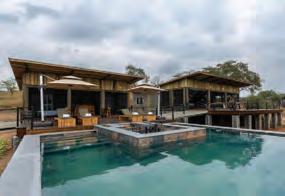

Ngorongoro Conservation Area Authority has been nominated to compete for the World Travel Award in the African Leading Tourist Attractions 2024 category. Acting Conservation Commissioner, Victoria Shayo, said NCAA won the world’s travel award last year and this year they look forward to scooping the award again. NCA has officially launched this year’s voting campaign which will be led by the slogan: ‘you vote we win’, and the voting will end on September 28 this year. She asked the stakeholders of tourism, conservation and all people in the country to vote for the NCAA because if it wins the award it will continue to promote the country in the world. Each of us should vote for the Ngorongoro Conservation Authority. If we win this competition, the award will help our country to bring in more tourists, bring in foreign currency and also to improve the country’s economy.
According to the World Tourism Barometer Report of September 2024, Tanzania has seen a 49% surge in tourist arrivals in the period January to July 2024. The Report is published by the UN Tourism and it regularly monitors tourism trends to provide global tourism stakeholders with up-to-date analysis. The Report’s information is updated several times a year and includes an analysis of the latest data on tourism destinations (inbound tourism) and source markets (outbound tourism). In Africa, Tanzania led the surge in tourism arrivals with a 49% increase in January-July 2024 compared to the same period in 2019 (pre-Covid). It was followed by Cabo Verde with (+34%), Morocco (+32%), and Kenya (+10%). The African continent welcomed 7% more tourists in January to July 2024 than in the same months of 2019.


Tanzania National Parks (TANAPA) is taking steps to address overcrowding at wildebeest migration viewing sites in Serengeti National Park. Deputy Conservation Commissioner Massana Mwishawa announced new initiatives to combat issues like reckless driving, overcrowding, and delays at entry points, particularly at the popular Kogatende site. The park sees up to 600 vehicles and 4,200 tourists daily during peak seasons. TANAPA plans to upgrade infrastructure, deploy new patrol vehicles, and conduct awareness sessions for tour guides. The goal is to protect the delicate balance of the wildebeest migration while maintaining tourism revenue. The initiative aims to redefine wildlife conservation and tourism management in the Serengeti, balancing ecological preservation with sustainable tourism practices for the iconic wildebeest migration.
AirTanzania (TC) took delivery of its third Boeing 787-8 Dreamliner, christened “The Great Serengeti Migration,”at Zanzibar’s Abeid Amani Karume International Airport (ZNZ). The aircraft was welcomed by the President of Zanzibar and Chairman of the Revolutionary Council, Hon. Dr. Hussein Mwinyi, on behalf of the President of the United Republic of Tanzania, Hon. Dr. Samia Suluhu Hassan, along with government officials, airline staff, and other dignitaries. The B787-8 Dreamliner accommodates 262 passengers, including 22 business class and 240 economy class. ATCL currently boasts of a fleet of 16 aircrafts; one Dash 8-Q300, five Dash 8-Q400, four Airbus A220-300, two Boeing 737 Max 9, three Boeing 787-8 Dreamliner and one Boeing 767-300F (Cargo Freighter).
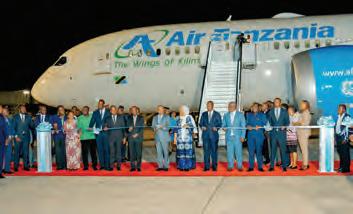

The Tanzania Airports Authority (TAA) has announced plans to reconstruct VIP lounges at Mwanza, Kilimanjaro, and the two Arusha airports this financial year. The upgrades aim to accommodate the growing influx of international tourists and business travellers. TAA's Director General, Mussa Mbura, revealed that each state-of-the-art VIP lounge will cost approximately 600 million Tanzanian shillings (£190,000). The government has allocated funds for these improvements, expecting returns within a year. This initiative follows the recent 600-million-shilling renovation of the VIP lounge at Julius Nyerere International Airport (JNIA) in Dar es Salaam. In response, ground handling service provider Swissport has invested in two new Mercedes Benz vehicles, each worth 350 million shillings (£110,000) to transport VIP passengers at JNIA.
Zara Tanzania Adventures has emerged the Africa’s Leading Tour Operator of the year 2023 at a prestigious World Travel Awards recently held in Dubai, United Arab Emirates. This is a second time in a row for Tanzania's female-owned tour company, based on the southern slopes of Mount Kilimanjaro, Africa's highest peak, to be overwhelmingly voted for the highest prize. This year, Zara Tanzania Adventures has also been named Tanzania’s leading tour outfit in recognition of its excellence in destination marketing and effective engagement of both communities and travellers. “Africa’s leading Tour Operator 2023, goes to Zara Tanzania Adventures for the second year in a row. Zara Tours, with more than three decades of experience, has been offering hassle-free mountain climbing, wildlife safaris, beach holidays, and cultural excursions to individual tourists as well as groups. Zara Tanzania Adventures (Alias Zara Tours) is a local company Ms. Ansell founded and established in 1986 in Moshi, Tanzania, providing high quality travel and tour services in East Africa. Zara has over 30-year experience in the region’s Travel and Tourism industry.


T
anzanian President Samia Suluhu Hassan officially launched the commercial operation of the country's electric standard gauge railway (SGR) passenger train service from Dar es Salaam to Dodoma, the capital of Tanzania. The anticipation was palpable as dignitaries, the public and journalists from around the country gathered at the Dar es Salaam Train Station (now Magufuli Station), Morogoro Train Station (now Kikwete Station), and Dodoma Train Station (now Samia Station) for the grand launch of the Standard Gauge Railway (SGR) services. This momentous event was not just another ribbon-cutting ceremony; it was a symbol of Tanzania's leap into a new era of infrastructural development and economic transformation. The ceremony was not confined to a single location; it was a journey itself, a testament to the transformative power of connectivity and infrastructure.
The Tanzania Wildlife Management Authority received a ship of about 230 tourists from various countries in the world who arrived at the World Cultural Heritage Park of Kilwa Ruins on the island and Songo Tower for tourism activities. The ship known as "Silver Clouds" anchored in the park carrying tourists from Australia, Belgium, Brazil, Canada, Chile, China, Germany, Ireland and Norway while other tourists came from Italy, Portugal, Africa South, Spain, Sweden, Switzerland, Ukraine, Great Britain and the United States. This is a continuation of the trips of tourists from different corners of the world to see for themselves the pride of the world heritage of culture, history and antiquities that exist in the park managed by TAWA. It should be noted that this Park has been receiving many visitors from inside and outside our country where recently the Park received more than 900 foreign tourists from different parts of the world for tourism activities, a number that is said to break the record in the park.

Mikumi National Park plans to reintroduce rhinos, which were wiped out from the park by poaching in the 1980s. The planned reintroduction is part of efforts to attract more visitors to tourism’s Southern Circuit. Located in Morogoro Region, Mikumi is one of the 22 national parks managed by Tanzania National Parks (Tanapa) and attracts the highest number of local visitors, according to the park’s head of tourism section, Mr Herman Mtei. The rhino, which is endangered, is the only member of the “Big Five” that is missing from the park. The last rhino was spotted in Mikumi more than three decades ago and its disappearance from the park has been attributed to rampant poaching, which decimated Tanzania’s rhino population in the 1980s and 90s. Tanapa now wants to reintroduce rhinos in Mikumi, which is ranked ninth by size in the country, to boost tourism in the Southern Zone.
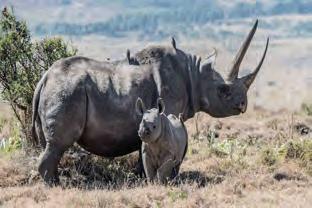

The Guinness World Record has declared 5895 m (19340.55 ft) registered by an Irish; Siobhan Brady on Mount Kilimanjaro on 27 July 2023 was the highest altitude harp performance in history. Siobhan performed this record to raise money for Cystic Fibrosis Ireland. Her performance becomes the second in history after DJ Joozey reaching it from Africa’s rooftop. The accomplished harpist arrived in Tanzania on July 27, accompanied by 19 fellow musicians, ready to break the world record by entertaining the world at the top of Mt Kilimanjaro. She broke her record of the highest Harp concert, having first achieved it on top of Singla pass on the Himalayas, which is elevated at 4,954 meters (16,253 feet), in 2008. The 24-year-old musician from Co Limerick reached the 5,895-metre summit of Mount Kilimanjaro in Tanzania in July early in the morning and performed a 20-minute concert with fellows including Ed Sheeran’s Little Bird in a Tanzanian jig.
At Kearsleys, we believe that every journey should be as unique as the traveller embarking on it. Our passion for Tanzania’s natural beauty drives us to offer experiences that go beyond the ordinary, creating trips that are rich in culture, wildlife, and personalized luxury. We pride ourselves on offering more than just a safari; we craft unforgettable memories that our clients cherish for a lifetime. Through our commitment to excellence, we strive to ensure that every detail of the trip is perfectly tailored to meet our clients' preferences. From the awe-inspiring landscapes of the Serengeti to the cultural richness of Zanzibar, we ensure each journey reflects the true essence of Tanzania. Our vision is to continue being a trusted partner in luxury travel, delivering unparalleled service and extraordinary experiences, all while maintaining our deep commitment to sustainability and responsible tourism.


Tanzania’s President, Samia Suluhu Hassan in a latest cabinet reshuffle, has reassigned Pindi Hazara Chana to head the country’s Natural Resources and Tourism ministry. Chana, who moves from her portfolio as Constitution and Law Minister, had previously served as the tourism minister and led Tanzania’s successful hosting of the 65th UN Tourism Commission for Africa meeting in 2022. She takes over from Angellah Jasmine Kairuki, who has been appointed as the President’s Advisor. Chana is expected to draw on her wealth of knowledge and experience to further consolidate the country’s tourism gains which has been on an uptick trajectory in recent years.
Tanzania is set to construct Africa’s longest bridge, a 31-mile project costing £2 billion, linking the mainland to Zanzibar in a move to boost trade and tourism. The bridge will connect Dar es Salaam, Tanzania’s largest city, with the Indian Ocean archipelago, renowned for its tourism-driven economy. Upon completion, the bridge will serve as a vital infrastructure link, improving access to Zanzibar, a group of islands that includes the popular Unguja (Zanzibar) and Pemba. The initiative is expected to further fuel the tourism boom, with visitor numbers reaching nearly 638,500 in 2023. The project is being developed with interest from the China Overseas Engineering Group Company (COVEC), which is currently in discussions with stakeholders to bring this ambitious plan to life. This landmark development will not only set a new record for Africa but also strengthen Tanzania’s economic growth.
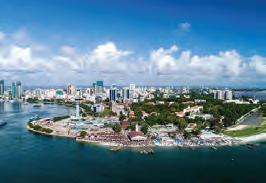

The Tanzanian government has announced a £1.08 million investment to develop infrastructure at Ibanda-Kyerwa National Park in the Kagera Region. This move aims to boost the western tourism circuit, less popular than the northern circuit, reflecting the country’s commitment to enhancing tourism. Musa Juma Kuji, Conservation Commissioner at Tanzania National Parks, revealed plans for a modern entrance complex and staff housing. The project, currently 55% complete, includes new offices, road networks, and essential facilities. The initiative, expected to finish by November, will improve operational efficiency and visitor experience. It also emphasises sustainable conservation efforts for future generations. Kuji praised park officers and rangers as the "pillar" of conservation, assuring them of their rights to education, allowances, and career advancement.













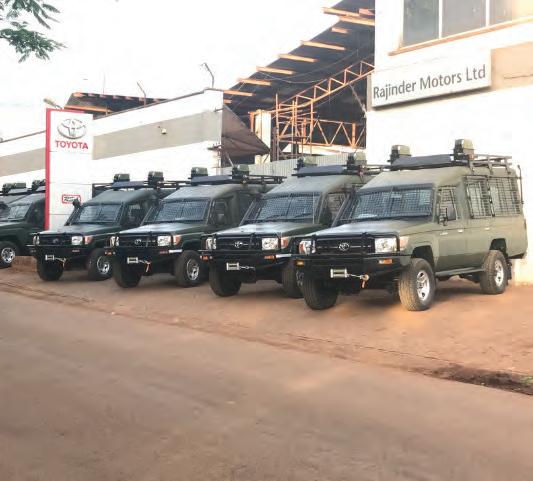








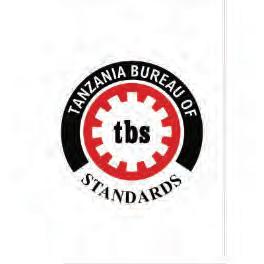


A unique Conservation Area with Volcanic Crates, Cultural Heritage and Abundance of Wildlife include the “Big 5”. It is a UNESCO World Heritage Site, Biosphere Reserve and Global Geopark hosting the famous Ngorongoro Crater, Ndutu the Calving ground, Empakai Crater, Olmoti Crater, Olduvai Gorge, Olkarien Gorge, Shifting Sand, Laetoli Footprints, Nasera Rock, Endoro Waterfalls, Elephants Caves, Shifting Sand and Mount Lolmalasin a third highest mountain in Tanzania.
Contact person: Mariam Kobelo
Tel: +255 767 118 163
Email: Mariam.kobelo@ncaa.go.tz
Website: www.ncaa.go.tz

We invite you to explore and invest in Tanzania's Southern parks, where nature feels untouched and adventure knows no bounds. From the largest National Park Nyerere, Ruaha, and Katavi to the lush Udzungwa, Mikumi, and Kitulo, each park offers a unique, authentic experience. And of course, no trip is complete without witnessing the iconic beauty of Mount Kilimanjaro and the Serengeti. Discover these treasures this is more than a journey, it’s a lifetime investment in nature's wonders.
Contact Person: Conservation Commissioner
Tel: +255 (0) 272 970 4042
Email: Info@tanzaniaparks.go.tz
Website: www.tanzaniaparks.go.tz

A collection of hotels, resorts, safari lodges and camps in the most evocative, exotic and enchanting destinations. Live a well-travelled life in style and experience authentic cuisines, indigenous aesthetics and spectacular delights in some of the world’s most extraordinary locations with Serena Hotels.
Contact Person: Seraphin Lusala
Tel: +255 786 303 038
Email: slusala@serena.co.tz
Website: www.serenahotels.com

ATCL Air Tanzania Company Limited (ATCL) is the national airline of Tanzania, carrying with it the national treasure and pride of Mt Kilimanjaro as its slogan - ‘The Wings of Kilimanjaro’, ATCL maintains its position as the leading airline in Tanzania, providing extensive domestic and international connectivity with over 120 weekly flights to more than 15 destinations.
Contact Name: Jerry Ngewe
Tel: +255 754 787 737
Email: jerry.ngewe@airtanzania.co.tz
Website: www.airtanzania.co.tz
Situated on an idyllic private beach, just 25km north of Dar es Salaam and Julius Nyerere International Airport. Dar es Salaam is one of the largest cities in East Africa, nestled along a natural harbour on the Indian Ocean. The resort is on Mbezi Beach, one of the long white sandy beaches that makes Tanzania a haven for beach lovers.
Contact Person: Maua Ojina
Tel: +255 767 156 419
Email: sales2@hotelwhitesands.com Website: www.hotelwhitesands.com

Founded in 2008, celebrates Africa’s rich diversity through art, culture, and hospitality. Our hotels offer comfort, design, and a warm, genuine African experience. With properties across East Africa and ambitious expansion plans, we aim to be the largest Pan-African hotel chain by 2027.
Contact Person: Philemon Mwakanyamale
Tel: +255 677 462 771
Email: sales.daressalaam@onomohotel.com Website: www.onomohotels.com

We are an innovative creation studio producing content that tells stories, crosses market boundaries and attracts customers for its brands, products and services.
Contact Person: Loth Makuza
Tel: 0625704995
Email: loth@smartfoundry.co Website: www.smartafrica.group

Luxurious accommodations, breathtaking views of the Indian Ocean, and 360 views of the Msasani Peninsula. The hotel offers a boutique setting with 61 unparalleled rooms, 2 board rooms, and a conference room with a capacity of 80 pax. Urban by CityBlue, Dar es Salaam, boasts the city’s hottest restaurants; a beautiful restaurant by the terrace; Metropole, and a trendy rooftop lounge; Vi.
Contact Person: Bindya Jetha
Tel: +255 717 125 389
Email: Sales.dar@citybluehotels.com
Website: www.citybluehotels.com

In the heart of Morogoro region, nestled amidst natural habitat, our beautiful resort provides tranquillity away from the chaos of urban life. Indulge in relaxation with our expansive swimming pool and dedicated children’s area, ensuring a refreshing escape for all.
Contact Name: Edga Mwambene
Tel: +255 768 164 740
Email: ask@campatupele.com
Website: www.Campatupele.com

Discovers a world of luxury and comfort at kingjada hotel, where every stay is a memorable experience. Whether you’re traveling for business or leisure, our dedicated team is here to ensure your stay exceeds expectations.
Contact Person: Happiness Silas
Tel: 0652466938
Email: sales@kingjadahotels.co.tz
Website: www. kingjada hotels.co.tz

Hanspaul Group has expertise stretching back to 40 years in various manufacturing fieldsbuilt Steel Structure Buildings/ Pre-Engineering Structures; handled Construction Projects; has expertise in manufacturing Paper Corrugated carton boxes and in fabrication of customized safari vehicle bodies for tourism industry as well as other special purpose vehicles for local markets in Tanzania.
Contact Person: Satbir Singh Hans Paul Tel: +255 756 888 864
Email: satbir@hanspal.co.tz Website: www.hanspaul.co.tz

A publicly listed Tanzanian airline, leading in providing scheduled flight services to 13 destinations within and outside Tanzania. From Dar es Salaam. The company operates on the principle of quick, comfortable, and reliable services. Precision Air flies to Arusha, Kilimanjaro, Mwanza, Bukoba, Kahama, Dodoma, Mtwara, Mbeya, Zanzibar, Seronera, Nariobi, Hahaya, and Anjouan.
Contact Person: Hilary Mremi Tel: +255 22 219 1000
Email: hmremi@precisionairtz.com Website: www.precisoinairtz.com

Located at the heart of Dar es Salaam. It is the only hotel in town, which has choices of 48 Suite rooms, and 94 standards. Peacock hotel has been in existence for more than 3 decades, hence, boast to have huge experience on serving both local and international guests.
Contact person: Zion Nkya
Tel: +255 713 559 627
Email reservation@peacock-hotel.co.tz
Website: www.peacock-hotel.com

The Wildlife conservation in Tanzania dates back in 1891, when laws controlling hunting were first enacted by the German rule. These laws regulated the off take, hunting methods and trade in wildlife, with some endangered species being fully protected. Selous Game Reserve was the first game reserve established in 1905 by the Germans and was gazetted in 1922.
Contact Person: Weja A. Lugendo
Email: lugendo@gmail.com
Tel: +255 784 428 789
Website: www.tawa.go.tz
TANZANIA FOREST SERVICES AGENCY

The Tanzania Forest Services Agency (TFS) is a government agency responsible for the sustainable management and conservation of forests and bee resources in Tanzania. TFS is also charged with promoting ecotourism and apitourism within nature forest reserves, as well as attracting the necessary investments.
Contact Person: Somen Mteleka
Tel: +255 784 319 373
Email: somen.mteleka@tfs.go.tz
Website: www.nature-reserves.go.tz
TBROOKLYN MEDIA

The indoor and outdoor billboard advertising
Company based in Dar es Salaam. Aimed to satisfy their clients through their strategic billboards by empowering their brands and rich out their customers. It comprises of the different billboard sizes to satisfy the customers need.
Company name: Brooklyn Media (T) Ltd.
Contact person: Josephina Minja
Tel: +155 763 643 329
Email: Josephina.minja@brooklynmedia.co.uk
Website: www.brooklynmedia.co.uk
KALAX PROMOTIONS LIMITED

A full-service Marketing and Advertising agency, serving local and international brands. We are an all-round agency with cogent expertise in Creative Campaigns, Marketing Strategy, ATL,BTL & Digital Media, Animation, Documentary, Apps Solutions & Development, search engine optimization, Outdoor Advertising, Printing & Branding, Corporate Branding, 3D visualization.
Contact Person: Tatyana Uwesu
Tel: +255 769 811 511
Email: admin@kalax.co.tz
Website: www.kalax.co.tz

Tanzania’s #1 Out of Home specialist, internationally awarded for its innovative digital and static advertising solutions. With the largest digital screen network in the country, including airports, roadside, malls, and iconic 3D billboards, Ashton Media delivers impactful campaigns.
Contact person: Wazeer Hyder
Tel: +255 622 222 910
Email: wazeer@ashtonmedia.co.tz
Website: www.ashtonmedia.ne

A leading Marketing and Communications agency based in Dar es Salaam, providing innovative strategies and creative solutions to drive growth for both established brands and emerging businesses. We help clients connect with diverse markets and audiences.
Contact Person: Mugaisi Bruce
Tel: +255 713 701 051
Email: mugaisi@hesaafrica.co.tz
Website: www.hesaafrica.co.tz/2

A Tanzanian registered company that is primarily engaged with Advertising services in Tanzania. Our team is dedicated in planning, design and execute client’s campaigns with the aim of promoting their products or services to the target audience.
Contact Person: Valerian F. Mafarassa
Tel: +255 765 671 212
Email: valerian.mafarassa@briansgroup.co.tz
Website: www.briansgroup.co.tz
TBC

A broadcasting entity, with the aim of providing information, education, and entertainment to the community. Its establishment was associated with legal and operational changes being made in the broadcasting sector in Tanzania.
Contact Person: Giliady Hezekiah Maina
Tel: +255 621 447 472
Emails: tbcsales.Marketing@gmail.com Website: www.tbc.go.tz
TTCL

Serves as a central hub for communication both within Tanzania and internationally. TTCL has successfully connected various areas through the National ICT Broadband Backbone (NICTBB), which links Regions, Districts, as well as neighboring countries such as Kenya, Uganda, Rwanda, Burundi, Malawi, and Zambia.
Contact Person: Janeth Maeda
Tel: +255 783 262 819
email: janeth.maeda@ttcl.co.tz.
website: www.ttcl.co.tz2


A dynamic production company dedicated to creating compelling content that elevates brands and tells their unique stories. With a deep understanding of the evolving media landscape, KANGO specializes in developing innovative visual and audio content that resonates with target audiences across various platforms.
Contact Person: Jerry Onasaa
Tel: +255 768 770 395
Email: business@kango.co.tz2
Website: https://kango.co.tz/

Sunny Palms Beach Resort Zanzibar is the most ideal venue for your vacation and weekend getaway to enjoy with your family and loved ones and indulge a unique experience.
Contact Person: Sifa Hezron Pangani
Tel: +255 775 113 344
Email: info@sunnypalmsresort.com
Website: www.sunnypalmsresort.com


An associate company of IPP Limited. ITV started its operations in
1994 with one television station and one radio station namely ITV-Independent Television and Radio One respectively. In 2009 the company launched Capital Television and Capital Radio to fill in gaps in demand from viewers and listeners.
Contact Person: Ernest Dilli
Tel: +255 713 217 955
Email: ernest.dilli@itv.co.tz Website: www.itv.co.tz

Kili Med Air Aviation Limited provides most reliable, affordable and efficient
Helicopter services in Tanzania. We provide helicopter services for search and rescue missions on Mt. Kilimanjaro as well as medical evacuations, wilderness clinics, private chartered flights for scenic adventures and private functions.
Contact Person: David Minja
Tel: + 255 652 246 129
Email: info@kilimedair.co.tz
Website: www.kilimedair.co.tz
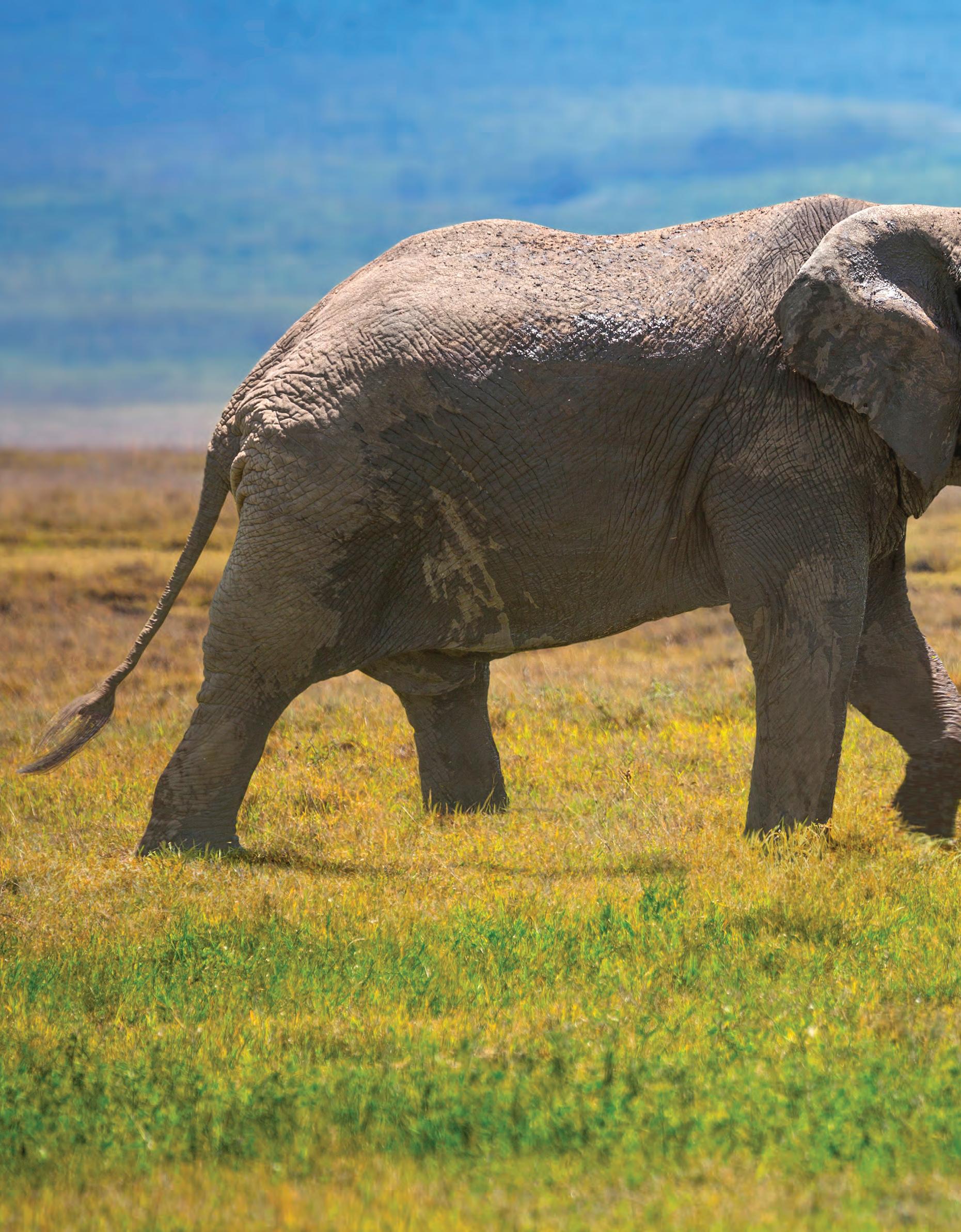
Best place to enjoy authentic African experience
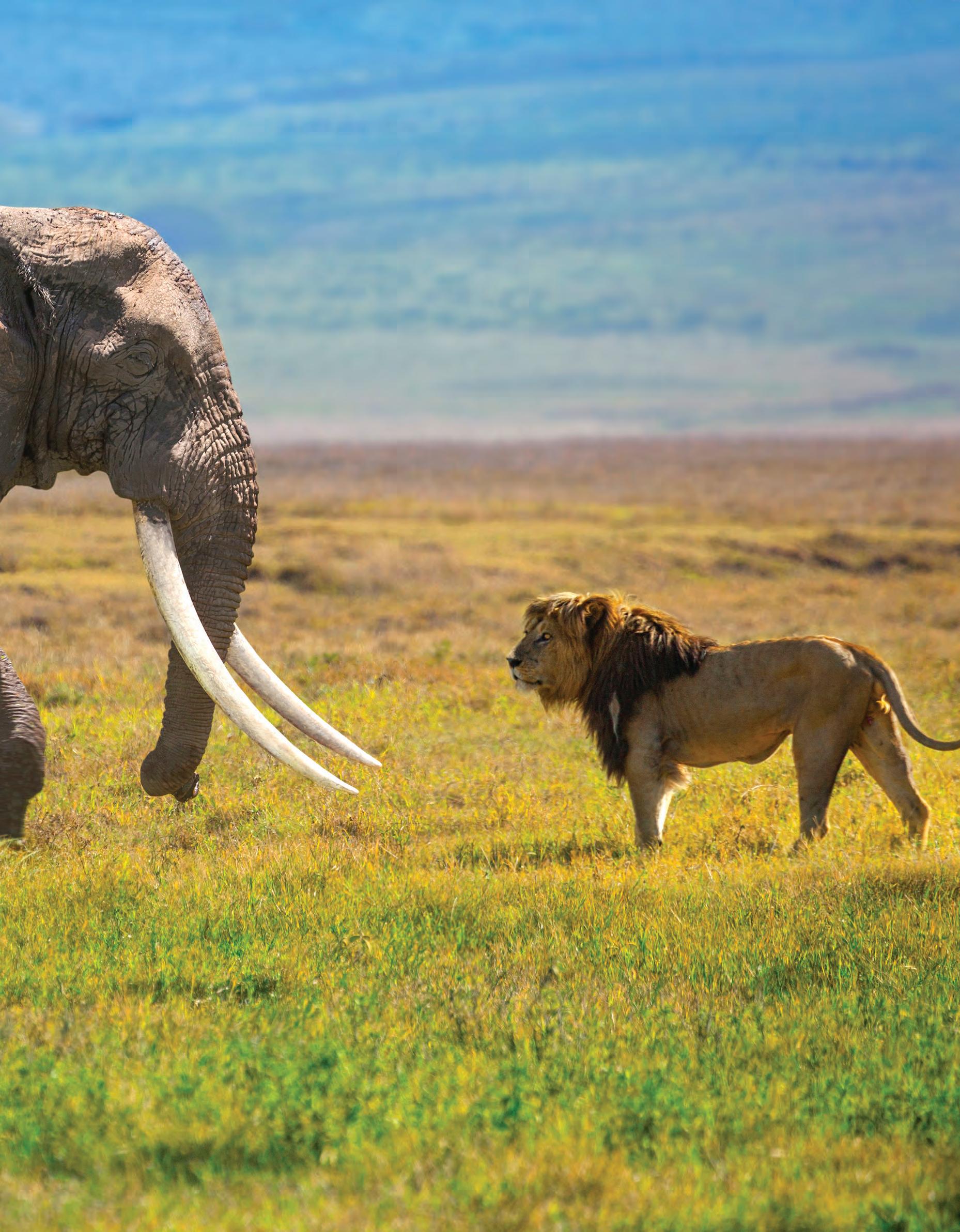
The United Republic of Tanzania is one of Africa’s most peaceful countries. Home to a flourishing democracy and prospering economy, the country is known for its peace and stability. A well-maintained infrastructure and three international airports connect its bustling commercial centres and ensures easy transportation, whether by road or by air. Tanzania’s people are a diverse mix of traditional people, village farmers and cosmopolitan professionals united by a common language, Swahili, and a strong sense of national community.

Tanzania has played an essential part in the life of the African Continent. The great wildebeest migration alone comprises the largest movement of land animals on the planet. With over 25% of the country’s totallandmass dedicated to wildlife parks and conservation areas, Tanzania remains wholeheartedly committed to the preservation of Africa’s great wilderness and incredible range of animal species.
Tanzania was recently voted the best safari country in Africa by both international visitors and by specialised safari operators. Even more recently, and after a four year worldwide search, it now also boasts the top three ‘Natural Wonders of Africa’. The Serengeti National Park, Mount Kilimanjaro and the Ngorongoro Crater outvoting the River Nile, the Red Sea Reef, the Sahara Desert and Botswana’s Okavango Delta.
Tanzania has also been named as one of the world’s top five ‘most stunningly beautiful countries’ by Fox TV News. The country’s 16 national parks, which protect more than 25% of its land, are home to 20% of the African continent’s larger mammals so it is little wonder game viewing experiences are the best in Africa.

Serengeti National Park, one of the most well-known of all wildlife areas, attracts thousands of visitors each year for the annual wildebeest migration, and Ngorongoro crater – often called the 8th Natural Wonder of the World – is a must see for it’s sheer beauty. Deep within the ancient caldera, herds of gazelle roam beside sated lions, and endangered black rhino and elusive cheetah can be spotted through the early morning mist. Still, the big-name parks aren’t all the country has to offer. The elephants of Tarangire National Park and the tree-climbing lions of Lake Manyara also reward the discerning traveler. The Saadani Game Reserve, famed for its views of elephant playing in the Indian Ocean surf, is just one of many lesser-known national parks that offer equally rewarding experiences for guests willing to wander off the beaten track.
But the magic of safari isn’t all this great country has to offer. Tropical beaches, coral reefs and Swahili culture along the Indian Ocean coast are also a major attraction for visitors who want to end their experience of Africa’s natural wonders with some wellearned relaxation.
For the more intrepid adventurers, a climb

to the rooftop of Africa, Mt Kilimanjaro, is the highlight of a safari itinerary. Longer treks through the Ngorongoro Conservation area, through the magical Gol Mountains, up the active volcano of Ol Donyo Lengai or down Lake Tanganyika are a fantastic way to experience lessvisited parts of the country in a new way.
Tanzania has a wealth of diverse groups that make up it’s national community. Huntergatherer groups and Maasai herders coexist in the Northern wilderness, and lesser know communities like the Wadorobo and the Iraqw also make up the collage of the country. Cultural tourism has become a popular choice for many visitors to Tanzania, with different programmes and itineraries on offer around the country. From dayhikes on the slopes of Mt Meru to honey collecting in the Usambaras, discovering local culture is a highlight for any visitor to Africa.
So welcome to Tanzania – experience the warmth of our people, the magic of our wilderness, and the splendor of our wildlife.
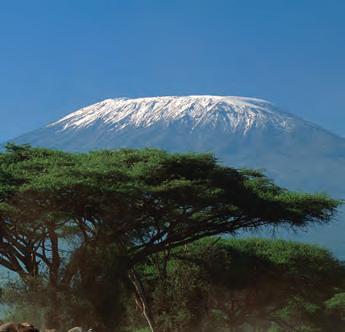



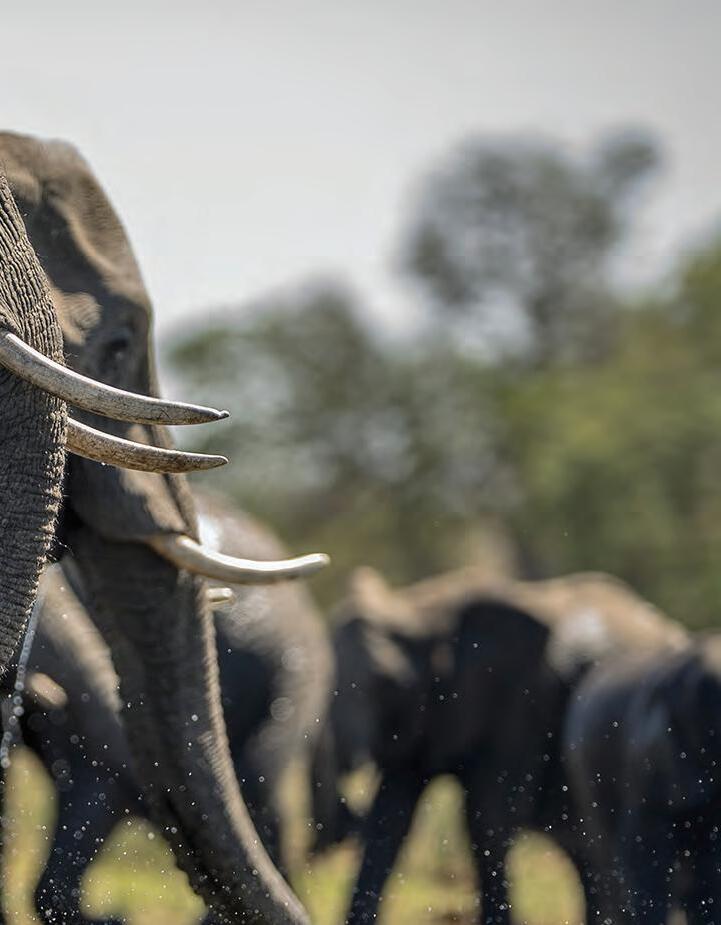
Promote Tanzanian Tourism in the World!
The President of Tanzania, Hon. Samia Suluhu Hassan unveiled the Royal Tour, a historical tourism movement and later become a documentary whole sole goal is exposing the mustsee destinations found in this ever-beautiful country. It was launched at New York in the United States, targeting the big spenders and goers of the west to showcase the natural and cultural heritage that Tanzania do possess. It was firstly premiered in New York on April 18th 2022 and Los Angeles on April 21st 2022. The Royal Tour was then unveiled at various cities in Tanzania, including Arusha, Dar Es Salaam and Zanzibar. The Royal Tour has also been streamed in a number of local TV channels for free throughout the country, meanwhile being broadcasted even on reputable international TV shows across the globe.

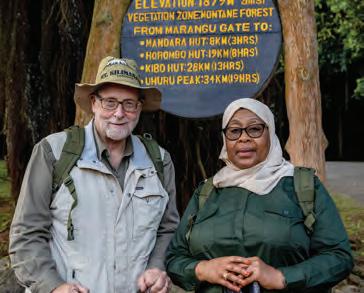



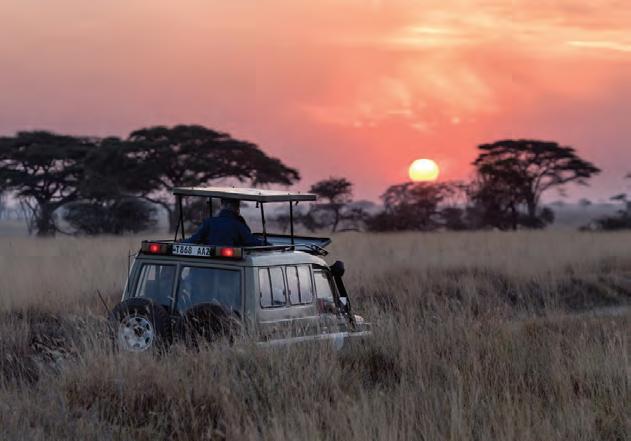
Royal Tour in Swahili, Royal Tour Documentary, Royal Tour Movie, Samia Suluhu Royal Tour. This follows her visit to the US, one of the world’s strongest economy of which she unveiled The Royal Tour documentary as well as signing several investment projects that will soon be implemented in Tanzania.
She said upon arriving home that she and her high-powered delegation had reached out to a number of potentials investor in New York and Dallas.
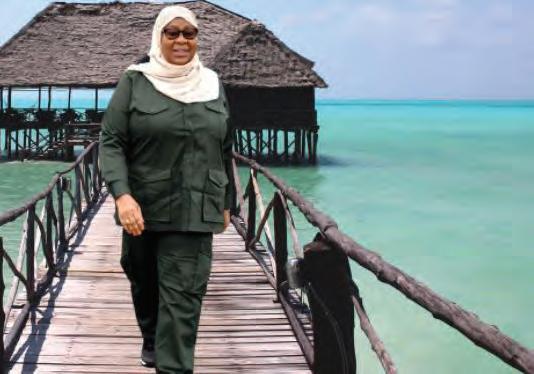
“We have signed investment projects worth Sh11.7 trillion,” she said upon arrival through the Kilimanjaro International Airport (KIA).
Though she could not reveal the nature of investments but hinted that they will create at least 301,000 jobs if successfully implemented. She said her trip has generally been successful in that besides launching the documentary she reached out to the international financing agencies which included the International
Monetary Fund (IMF) and the World Bank where the two pledges to extend more support to Tanzania.
Discussions were held between her delegation and an American multinational involved in manufacturing of high-tech cleaning supplies.
The giant private entity pledged to support the National Institute for Medical Research (NIMR), the Ifakara



Health Institute and an insect control institute in Tanga.
On tourism, she said the response of the American market since The Royal Tour film was premiered has been positive.
“Of course, not much was known on some Tanzania tourism insights but the market response was generally good,” she told a crowd at the airport.
She lauded the private sector players within and outside the tourism sector for their contribution to the successful shooting of the film.
“We should expect goodies,” she said as she headed for Arusha city where she later launched the documentary at the Arusha International Conference Centre (AICC).
According to President Hassan, tourism, which was severely battered by Covid-19 three years ago, was on the recovery path.
Foreign visitors tumbled three times to 620,000 in 2020 from upwards
of 1.3 million the previous year but picked up to 922,992 last year.
This, she said was a 48.6 percent increase while revenue earnings for 2020 was $714 million, rising to $1.2 billion
In 2021.
Tanzania is an extremely best tourist destination in the world where visitors can enjoy mixed feelings such as climbing, Tanzania wildlife safari, cultural exploration, various adventurous activities, and chilling on idyllic sandy beaches of the Indian Ocean. The tourism condition of Tanzania was all good until when it got struck by a sudden and a never expected downgrading factor.
“This was a 76 percent increase. Now we are ready for the influx of tourists,” she said, beaming with confidence. The shooting and premiering of the film has won the support of the tourism
industry players in and around Arusha.
“She has made us proud! Tanzania is a premier destination. It just needed little support as the one Honorable President has done,” said Mr Andrew Malalika, a tour operator.
“We, stakeholders, have a role to play too. We should emulate the President’s efforts”.
Mr Malalika, who is the director of Arusha-based Jackpot Safari and Tours, called on fellow players in the industry to “push even harder the tourism wheel that the President has brought in”.
Guided by some of the most dynamic and powerful heads of State, Peter journeys deep inside each country to offer viewers access to extraordinary locations, historical landmarks and cultural experiences
Everything shown within the onehour program is accessible to viewers who wish to travel to these amazing destinations themselves.


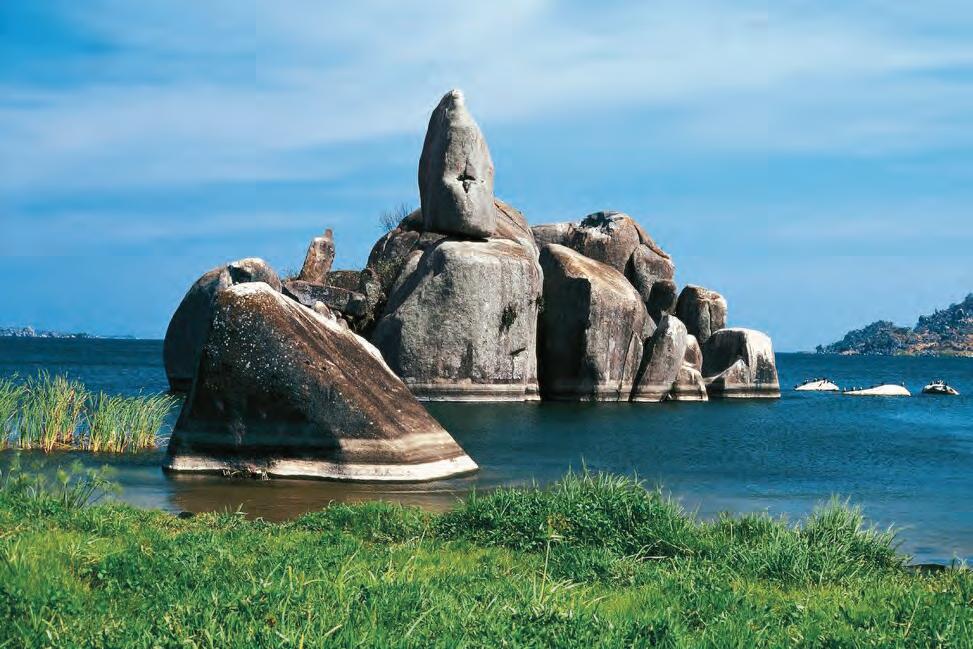


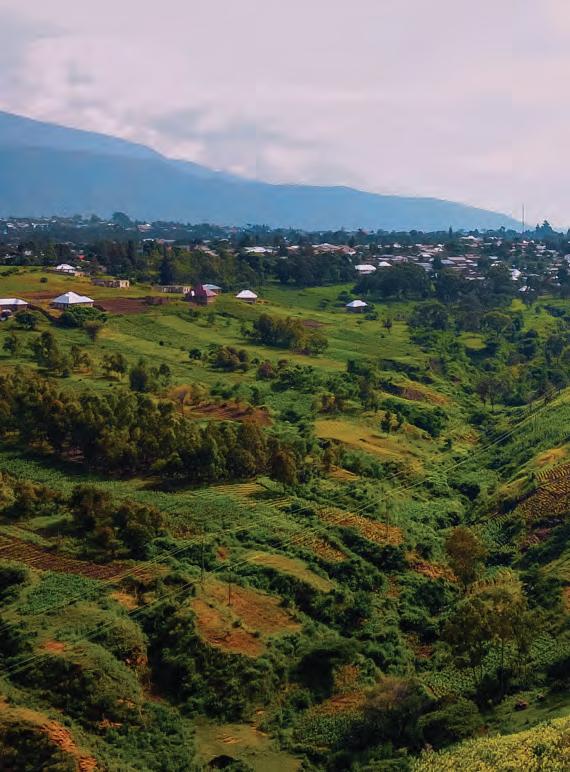


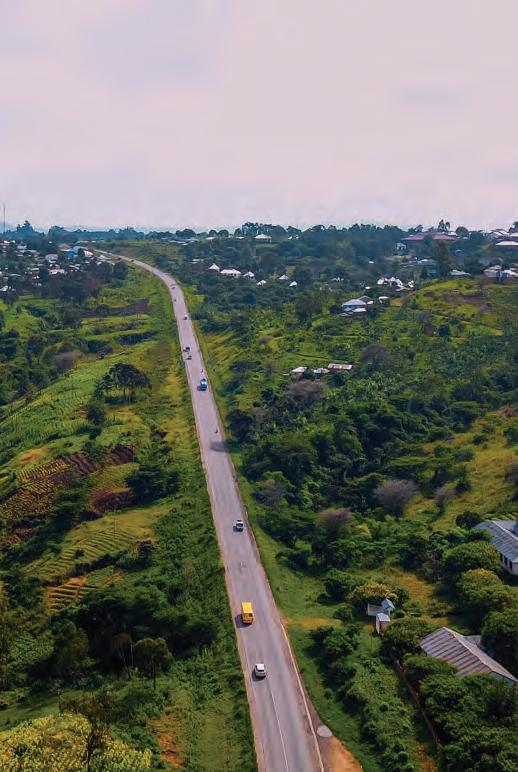

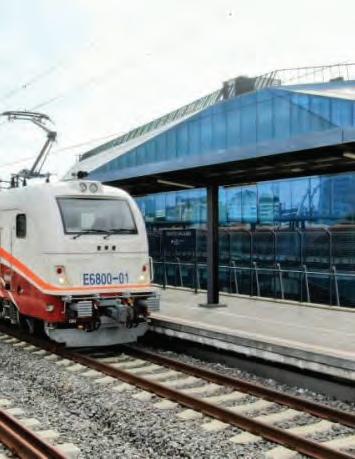
Located in the north of Tanzania, in the shadow of Mount Meru, Arusha is the safari capital of the country. Tourists usually overnight here before their safari around the Northern Circuit. Built by the Germans as a centre of colonial administration, Arusha is now one of the country’s most prosperous towns. The site for the United Nations Criminal Tribunal and the headquarters for the tripartite Commission for East African cooperation, Arusha is also the centre for the trading of Tanzanite, a rare gemstone only found in Tanzania.
The National Natural History Museum, with its collection of antiquities demonstrating Tanzania’s natural heritage, is housed in an old German Fort in the centre of Arusha while the nearby Cultural Heritage centre and its adjacent, four storey Art Gallery are also well worth a visit.
Bagamoyo is a centre for dhow sailboat building on the Tanzanian coast. A quiet village with a few German colonial buildings still standing, it was once one the most important trading ports on the East African coast, and the penultimate stop of slave and ivory caravans travelling on foot from Lake Tanganyika on their way to Zanzibar. Missionaries active in abolishing the slave trade made Bagamoyo a centre for their activities. The name ‘Bagamoyo’ means ‘lay down your heart’ in Kiswahili, this is particularly poignant given that the town was the last stop on the mainland before captured slaves were sent to destinations unknown from Zanzibar, never to return.
Located in the heartland of Tanzania, Dodoma is the nation’s official political capital and the seat of Government in the country. Comparably much smaller and less developed than the country’s commercial centre, Dar es Salaam, Dodoma remains a centre for national politics. Situated on the eastern edge of the southern highlands, the city is surrounded by a rich agricultural area and pleasant scenery. It is the centre of Tanzania’s growing wine industry. Historically, Dodoma was a stopover on the overland caravan route that travelled from the Swahili Coast inland towards Lake Tanganyika. Early in the 20th Century, the city became a major point on the Central Line Railway, which carried agricultural crops for export to the harbour in Dar es Salaam.
The bustling town of Kigoma is the regional capital of western Tanzania and a central port in the area. Located on the eastern shores of Lake Tanganyika, Kigoma is surrounded by rugged mountains and forests that make it a pleasing and beautiful location. In the past, Kigoma has been in competition with nearby Ujiji, but over the last few decades Kigoma has gained a strong economic foothold in the region and its port is of central importance to the activities of the area.
The town makes a good overland base for visting the Chimpanzee Safari to the Gombe Stream National Park and Mahale Mountains National Park.
Near the Zambian border deep in the southern highlands, the city of Mbeya is the major agricultural capital in the country’s southwest region. The Mbeya Mountain Range lies to the north, and the Poroto Mountain Range lies to the southeast. Coffee, tea, bananas and cocoa, all of which are grown in the region, are sent to Mbeya for packaging and transporting. Mbeya’s location also make it an ideal transit point with goods and people travelling by road, rail and boat between Tanzania and neighbouring Zambia and Malawi. In addition to its agricultural prosperity, Mbeya’s mineral wealth has attracted investment and provides the country with a good source of income.
The town was originally founded in the 1930s, when gold was discovered and a ‘gold rush’ ensued. The Mbeya gold supply turned out to be large giving for the city an opportunity to become properly established and saved it from becoming a ghosttown status as so often happened after the gold ran out. The city continues to supply the country with a regular amount of gold. Its mountain views and pleasant weather make it a good stopover point for over land travellers heading south.
Nestled at the base of Mt Kilimanjaro, Moshi is the coffee-producing centre of the country. Vast plantations of coffee blanket the area, surrounding the town and rising up the slopes of Kilimanjaro. Coffee is the mainstay of life in Moshi, and the seasonal coffee auctions, where international buyers bid for wholesale coffee, is an event not to `be missed if you’re in town.
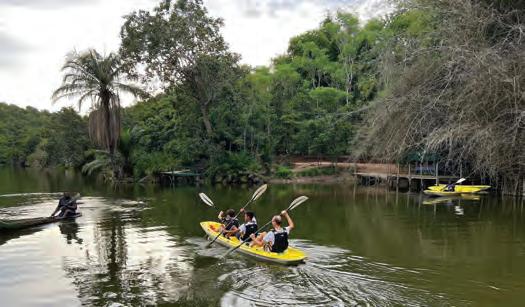
Sugar plantations are also of central importance to the region’s economy, and can be seen outside the town.
Cultural tourism programmes can arrange short hikes and day-trips to local villages, and also tours to nearby coffee farms. The main reason visitors come to Moshi is to climb Mt Kilimanjaro, the mountain whose thick clouds and snow-capped peak tower over the agricultural town. Climbing expeditions depart for Kilimanjaro National Park early in the morning, before the clouds that cluster daily around the mountaintop have risen, and when the air is fresh and cool. Whether you’re in Moshi to scale to the top of Africa or learn more about coffee growing and production, Moshi is a quiet haven of tranquil peace, its sedate streets offer a warm welcome in a beautiful setting.
Situated on the southern shores of Lake Victoria, in the north west of the country, Tanzania’s second city is the perfect base from which to visit nearby Rubondo National Park, Saanane Island and the Bujora Sukuma and Nyerere museums. It also offers easy access to the Serengeti being only a 2 ó hour drive from the Western Grumeti. Other attractions include lake cruises, canoeing safaris and fishing for tilapia or giant nile perch. Mwanza is also known as Rock City because of the gigantic rock outcrops jutting out

of the lake and strewn around the city. The most famous of these are the Bismarck Rocks, named after the German chancellor under whom this originally small town was established as the administration centre of German East Africa.
Oncea centre of Swahili trade with the African mainland, the town of Pangani is now a sleepy backwater that remembers little of its splendorous past. An old German administrative boma still stands behind a colonnade of tall shade trees and the former prison, painted a fading ochre red, looks over the river’s lazy waters. Old houses along the main road offer lived-in examples of colonial and traditional Swahili architecture, with buildings slowly crumbling against the monsoon winds. Visitors passing through the area would do well to explore what remains of the old town on foot. Even a short walk rewards visitors with a glimpse of quiet life in the old trading towns along the Swahili Coast.
The sleepy town of Tabora, in the hinterland of western Tanzania, remains a key transit point in the country. The Central Line railway branches at Tabora to both Kigoma and Mwanza, and visitors travelling by train often use Tabora as a stopover

point during their journey. The regions around Tabora are famous for the honey they produce, and large jerry cans and bottles of the famous nectar can be bought in the village market.
Tabora was once a major trading point and stopover for caravans that connected Lake Tanganyika and Central Africa with the coastal town of Bagamoyo to the northeast. Its historical importance is illustrated by the fact that the infamous slave and ivory trader Tippu Tip, who lived during the 19th Century, made extensive use of Tabora as a centre of his vast trading empire.
Thebustling port of Tanga is Tanzania’s second port after the urban centre of Dar es Salaam. Although the port is a centre of marine export, import, and trade, the town of Tanga still has a quiet, laid-back feel to it, as if not much has changed over the decades. Indeed, along the older sections of the town, examples of old colonial architecture and a few Arab houses still give testament to the area’s importance during the heyday of Indian Ocean trade.
The fish market and beaches make a pleasant stop during a day trip, and the city is a good place for buying supplies if you’re headed to one of the more remote areas of beaches on the northern coast.
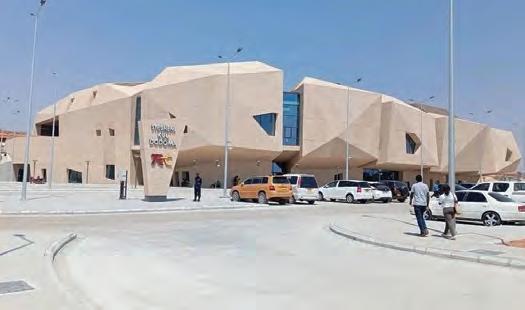


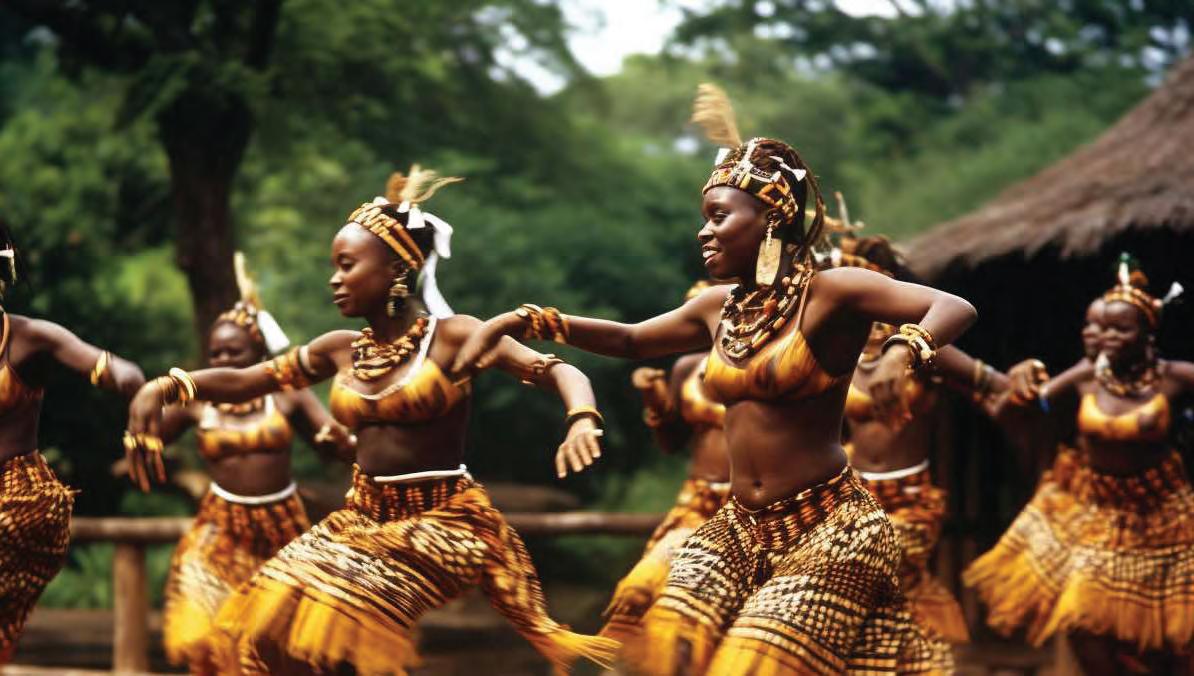
Tanzania’s people are among the most welcoming and approachable on earth with diverse and unique cultures ready to be shared with visitors. The Tanzania Cultural Programme was launched in 1997 to give local communities the opportunity to improve their economic livelihood by participating in tourism activities.
Co-ordinated by the Tanzania Tourist Board, supported by the Ministry of Natural Resources & Tourism, there are currently some 60 initiatives operating in various parts of the country. Tanzania is endowed with the rich heritage of 120 ethnic tribes and the Cultural Tourism Programme provides visitors with an authentic cultural experience and a unique insight into the daily lives of the local people.
The Cultural Tourism Enterprises offer visitors the opportunity to leave the safari vehicle behind and spend time in local villages interacting with the people. The activities offered are as diverse as the villages, and include preparing local cuisine, making wine, helping to process coffee beans, learning how to make local handcrafts, and learning traditional games and dances. The cultural enterprises also host a number of music and dance
festivals that attract many visitors because of their authenticity.
Leave your vehicle behind and walk through the tropical slopes of Mount Meru and Mount Kilimanjaro. Meet the Maasai and learn of their almost forgotten traditions and a way of life that is so closely linked to nature and wildlife. Listen to drumbeats and interpret music and dances inherited from ancient ancestors.
“Cultural Tourism is beneficial to everyone… the tourists get unforgettable and unique experience while the local people generate income that improves their standard of living….”
Learn the history of the Swahili Coast. Explore the savannahs on camelback. Boat down a river, or row on one of the many lakes. Paddle between mangroves, learn about traditional plants and medicines, experience a camel ride, or sail to pristine sandy islands. Climb a holy mountain and benefit from the diagnostic methods of a traditional healer.
TASTE THE LOCAL CUISINE
Tanzania has a unique and varied cuisine. There is an extensive use of coconut milk and spicy foods. Other
distinctive foods include Kisamvu (cassava leaves), Maharange (beans), Nyama choma (grilled meat), Wali (rice), Ugali (maize porridge) and Goats Meat.
In Zanzibar take a Swahili Cooking course and shop for ingredients at the local markets. Here you can find all types of bananas, mangoes, and countless other fruits and spices.
And then, in the evening, listen to ancient legendary tales around an open fire. An experience you will never forget. And sample the local brew! In one of the newly opened cultural enterprises, Lyamungo Sinde, a village in the foothills of Mount Kilimanjaro, tourists can enjoy the scenery of the highest mountain in Africa while staying with villagers to make handcrafts out of banana leaves or fish in the Weruweru River. In Kahawa Shambani, visitors are hosted by local families at coffee plantations and learn the entire coffee process from the coffee growers’ cooperative, their history and fair trade, to picking, grinding, roasting and making their own fresh coffee.
Tourism to these villages directly supports the local community. Over 4,000 Tanzanian people benefited from a direct income in 2016 due to the success of the Cultural Tourism
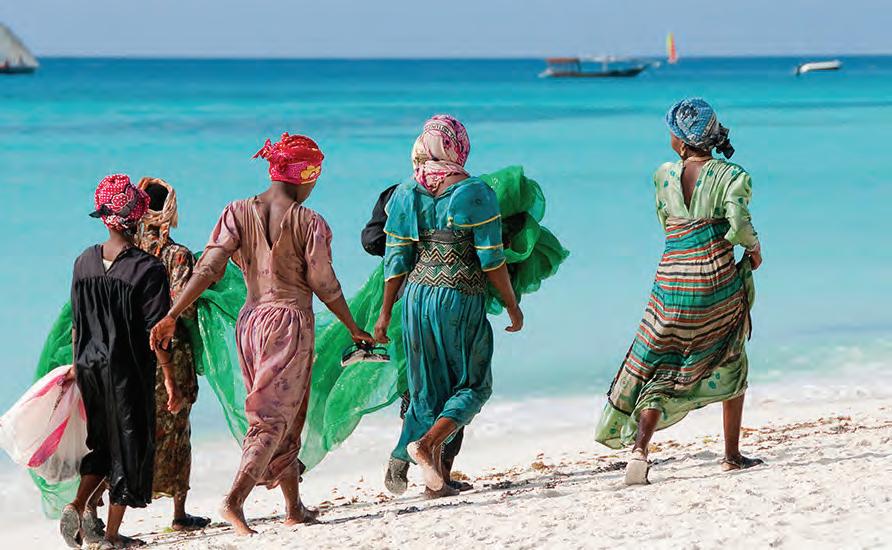
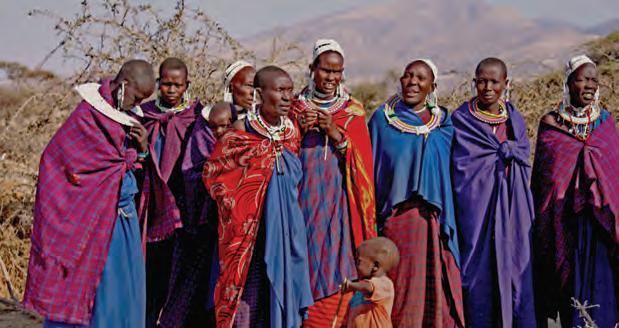
Program. A portion of the income from tourism for each enterprise is used for community development such as renovating schools, providing books for students, tree planting projects, and water tap project.
NINE NEW CULTURAL TOURISM ENTERPRISES INCLUDE
• Bujora Cultural Tourism Enterprise (Mwanza Region)
• Kiliman Cultural Tourism Enterprise (Moshi Rural-Kilimanjaro Region)
• Kisesa Cultural Tourism Enterprise (Mwanza Region)
• Liuli-Pomonda Cultural Tourism Enterprise (Mbamba Bay-Ruvuma Region)
• Rau Eco & Cultural Tourism Enterprise (Moshi-Kilimanjaro region)
• Ukerewe Cultural Tourism Enterprise (Ukerewe-Mwanza Region)
• Lyamungo (Hai-Kilimanjaro Region)
• Meru Forest Eco-Tourism (Arumeru- Arusha Region)
• Momela Cultural Tourism & Campsite (Arumeru-Arusha Region)
RUNDUGAI CULTURAL TOURISM
Welcome to the land of astonishing hot springs. Spend a day at Rundugai Village and learn about the socio –economic activities of the village. Visit

“With over 120 resident different tribes, there is plenty of local history and colour to be found in all areas of Tanzania”

the Maasai market, sample and prepare traditional foods and swim in the warm blue waters of Chemka hot springs. Located between Moshi and Kilimanjaro Airport.
IFULONG CULTURAL TOURISM
The people of Njoro and Poli Villages welcome visitors to experience real African rural life. Activities include a cultural walk, a Coffee experience, local beer brewing and a banana experience Tours. Overnight stays are also possible at the homes of local families when can learn Swahili. Located near Usa River between Arusha & Kilimanjaro Airport.
ILKIDING ‘A VILLAGE
Learn about Maasai culture. Visit different families and experience the real lifestyle of the Maasai. Great views of Engaro Narok river valley. Activities include a visit to a traditional healer; Hiking; mountain bike riding; bird watching and a visit to a handicrafts centre. 6 Kms from Arusha in the South West Mount Meru area.
CULTURAL TOURISM
An area rich in Maasai culture where they continue to practice their ageold pastoral ways. Activities include Hot springs and Waterfall tours, visit
the Flamingo breeding sites at Lake Natron, learn how to herd cattle and the Oldonyo Lengai Trekking tour Located 220kms north west of Arusha at Lake Natron.
ILKUROT VILLAGE MAASAI
CULTURAL TOURISM ENTERPRISE
Activities include Camel riding, visit to a Maasai boma, meet the Maasai mid wife; learn about Maasai dances, weddings and their history. Ilkurot also offers a Volunteer programme for visitors interested to work in the health and educational sectors. Situated 28 kms north of Arusha on the road to Nairobi.
Spend part of your time to meet friendly faces of Africa and learn about their ways of life.
For further information contact: Cultural Tourism Programme cpt@tanzaniaculturaltourism.go.tz culturaltourism@habari.co.tz www.tanzaniaculturaltourism.go.tz Tel +255 272050025
Tanzania Association of Cultural Tourism Operators (TACTO) E mail info@tactotanzania.org or tacto2000@gmail.com www.tactotanzania.org


Dar Es Salaam, literally “the residence of peace”; or simply Dar, formerly Mzizima) is Tanzania’s largest and richest city, the largest city in eastern Africa by population, and is a regionally important economic centre. The city is the largest and most populous Swahili speaking city in the world. It is the capital of the Dar Es Salaam Region administrative province and consists of three administrative districts: northern Kinondoni, central Ilala, and southern Temeke.
There is a fusion of cultural influences. Arab, Indian, German and British influences can be found in the
city’s architecture. Sikhs, Muslims, Hindus and Christians co-exist peacefully, with the wail of the Azaan blending into the sound of church bells in the mornings. The locals are very friendly and most of them speak English, however it is useful to download a Swahili dictionary on your phone or carry a pocket dictionary to assist you with basic translations.
Dar Es salaam is Tanzania’s most prominent city in arts, fashion, media, music, film and television. Down at Kariakoo, cheerful Tingatinga paintings are stacked next to folded piles of khangas and kitenges, traditional medicines sit alongside near pyramids
of fruit and vegetable as shopkeepers sell their goods.
Visitors are well catered for, with a choice of accommodation for all budgets, from backpacker hostels to five star hotels. For the business traveler, there are a number of hotels offering world-class conference and accommodation facilities. There’s a wide array of restaurants offering Thai, Indian, Italian, Japanese, Ethiopian cuisine and more. Of course, you can also find local restaurants serving chipsi (French fries), ugali and nyama choma (freshly grilled meat). If you are a street foodie you can try the Mishkakis (grilled beef of chicken skewers) and




Dar Es Salaam means haven of peace. The name was bestowed on the city during the time of Sultan Seyyid Majid, who chose the sleepy fishing village of Zaramo to have his summer palace, Band`ur ul Salaam, the palace of peace. The village thrived and grew under the Sultan’s presence, becoming a centre of trade for ivory and slaves and transforming over time into the bustling city of Dar Es Salaam.

fried Mohogo (tapioca) dipped in spicy chili sauce sold at the street kiosks at the Oysterbay Beach located on the peninsula.
Dar Es Salaam has an electric live music scene. Traditional taarab orchestras rub shoulders with dance bands playing jazz, salsa and afro funk. Rap, hip-hop and bongo flava artists collaborate and perform around the city.
For the art and history aficionados, the Nyumba ya Sanaa (Nyerere Cultural Centre) exhibits art and handicrafts throughout the year and give visitors the chance to take part in workshops on painting, batik and etching. The
National Museum and Botanical Gardens are also another diverting way to spend a day, tracing the history of Tanzania, from prehistoric fossils through to the relics of colonialism.
Beyond the museums, music and art found in the city centre, Visitors could cross over to Kigamboni by a 10 minutes ferry ride where they spend the morning at the Waterpark or just relax and catch a tan at the popular Mikadi Beach. Dar Es salaam has its own selection of spectacular beaches at Kunduchi, Mjimwema and Jangwani. At Jangwani, there’s snorkeling and diving on offer, with the chance to see tuna, king fish and even the white tipped reef shark.


Dar Es Salaam is the main city that most visitors will encounter and the arrival point for most visitors off their international flight.
Dar Es Salaam is also the nearest location to the safari circuits in the South of the country, as well as being next door to Zanzibar.
In the North of Tanzania, the far more rural town of Arusha is the start point for most safaris to the North of the country.
One of the most entertaining things to do in Dar Es Salaam is swim in the beautiful warm tropical Indian Ocean. Bongoyo Island is a small island off the coast of Dar that makes a fantastic day trip of lazying on the beach, snorkeling and dining on fresh fried fish and chips. Since becoming a marine reserve a few years ago, fees have severely increased, but it’s still worth it. Get to the island by taking a boat from The Slipway shopping center.
Tanzanian’s have long been famous around Africa for their artwork. The modern movement of Tingatinga painting is one favorite styles of Tanzanian art. An artistic movement that began with Edward Said Tingatinga, the style is characterized by extremely bright oil colors and cartoon imaginative figures. The Tingatinga center is a rainbow of color and artistic inspiration. You can browse around and buy anything you see!
Coco Beach, also known as Oyster Bay, is a stretch of beach located on the Msasani Peninsula of Dar Es Salaam. If you are looking for fun things to do in Dar Es Salaam, head over to
Coco Beach on the weekend when it’s packed full of local Tanzanians. There are plenty of street food snacks and sometimes live music. The open area is also a place where frequent concerts and parties take place – check the city events guide. Swimming is not really recommended at Coco Beach, though some choose to wade in the water.
ASKARI MONUMENT
One of the most well known historical statues of significance in Dar Es Salaam is Askari Monument. Depicting a soldier with his bayonet pointing to the harbor, the monument is a reminder of the soldiers that fought as the Carrier Corps in World War I. The cast bronze Askari Monument is supposedly located in the precise center of Dar, in the middle of the roundabout that bisects Samora Avenue with Maktaba Street.
TANZANIAN BEVERAGES
Everywhere you travel you’ll encounter a new and unique set of local beverages. When you are in Tanzania you may want to sample the selection of locally brewed beer, have a few cups of Dar street coffee and especially guzzle a pungent Stoney Tangawizi.
NATIONAL MUSEUM
If you want to learn more about the
history and culture of Tanzania or see some of the fossils that have been uncovered in the country, you’ll be interested in visiting the National Museum.
MWENGE CARVERS’ VILLAGE
Located on the outskirts of town, Mwenge Carvers’ Village is a great attraction in Dar Es Salaam if you are in the market for Tanzanian souvenirs. Though there is a lot of the same-same type of things, if you take the time to browse around you’ll come away with some unique and quality Tanzanian handicrafts.
ZANZIBARI MIX
There is one dish in Dar Es Salaam that is rare, but is a gem of an example of an expertly prepared dish that sums up the realm of cultures and traditions of the city: Zanzibari Mix. The makeshift Mama Mumtaz restaurant is not easy to find – in fact, you’ll probably have to walk to Kariakoo market and ask someone to direct you to it. Zanzibari mix is incredible – a comforting combination of deep fried fritters in a coconut milk curry and garnished with fresh chutneys and chili sauce.
North of Dar Es Salaam there are a few lovely beaches and islands to enjoy as well. From White Sands hotel in Jangwani, you can take a boat to Mbuja Island, a great place to unwind and eat freshly caught Indian Ocean seafood.
With a sizable population of Indians, there’s a decent selection of delicious Indian food available in Dar Es Salaam. The Upanga area, in central Dar Es Salaam, is one of the best areas of town to locate good Indian food.
PUGU
Pugu Hills is a designated nature reserve located around 25 kilometers from the center of Dar Es Salaam. Along with an opportunity to hike the trails, you can also choose to bird watch or visit the cave which is famous for its colony of bats. You can either get to Pugu Hills on your own or take a day tour.
One of the busiest and most thrilling markets in Dar Es Salaam is the local Kariakoo market. This is the place to go if you are hunting for the best bargains in town or wish to see the authentic side of local style Tanzanian shopping. Make sure you haggle to get the best deals.
If you are walking around downtown Dar Es Salaam, take a stroll down Temple Road where you’ll find a selection of religious temples. You can visit a few of the temples and have a look around.
A popular thing to buy in Dar Es Salaam are the colorful pieces of wrap around cloth known as kangas. These brightly dyed rectangles of fabric are available in infinite colors, with infinite patterns and often include a message written in Kiswahili. Head over to Uhuru Street in downtown Dar Es Salaam for a huge distribution selection of kangas.


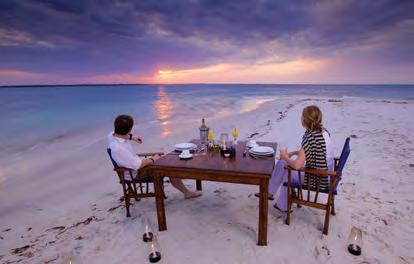





Originally built by German missionaries in Tanzania, the Azania Lutheran Church is an iconic structure located at Dar Es Salaam’s harbor front. From the cathedral you’ll have easy access to other tourist attractions around town.
Nyama choma (roasted meat – often goat) is wildly popular – and incredibly delicious. Go to a local restaurant, order your choice of meat and wait for it to slowly roast. In Tanzania, nyama choma is served with a few chillies and sometimes a tomato and red onion garnish. Many Tanzanians choose to wash down their nyama choma with a few beers.
Whether it’s roasted maize or mama cooked Tanzanian chapatis also try Mishkaki which is the Tanzanian version of meat on a stick – street style shish kebabs!
Seclusion, peace and quietness is how I would describe the South Coast Beaches of Dar Es Salaam. There are a number of hotels that you can visit, or you can rent your own personal banda that covered hut for the day. The lanky palm trees rustling in the breeze and the rythmic wash of waves makes spending a day on the South Coast Beaches one of the most relaxing things to do in Dar Es salaam. One of the best things to do on the South Coast is to go horse riding on one of the best beaches you will ever encounter. The Dar Es Salaam Horse Club is located nearby to the world famous Ras Kutani Resort. Get there by personal vehicle or by local dala dala minivan. You’ll need to cross to the Kigamboni side of Dar Es Salaam by taking the ferry across the port.
In the evenings, Ali Kuku, Mamboz, Ten To Ten and Natasha are famous for its barbeque chicken and chips, located in the city centre. Other places to try matoke (green banana) are Chef’s Pride (Chagga Street in city centre) or Zahir Restaurants ( Mosque St in city centre).
Dar Es salaam has alot to offer when it comes to entertainment and relaxation especially at night. here is a collection of top venues to kick start your experience in this amazing city!
Akira is one the favourite rooftop bars
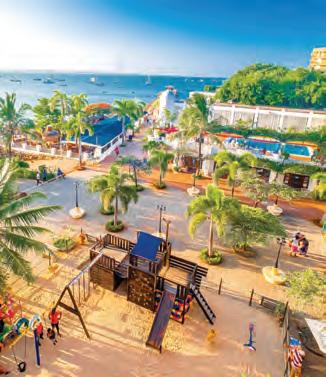

in Dar es Salaam. With a chilled out vibe and great music, it offers 360 degree sea views. Dar Live has a Zanzibari feel to it, being on the beach, and is open and very casual. The bar is on the beach, nestled among Dhow furniture in a most rustic fashion, open throughout the week. The George and Dragon has a very strong expat following with various activities every night to keep anyone entertained. Trinity is another place with a true Tanzanian feel with live bands and good vibe, located near Oyster Bay. Every saturday and sunday get entertained at Mediterraneo with live band, beach party and bikini party. There are more then five casinos in Dar such as, Sea Cliff Casino, Princess Casino, New Africa in the city where you can have fun, gambling experience and be entertained.
Latest on the block and with the best views of Dar by night is High Spirit Bar, Lounge & Nightclub located on the roof top of IT Plaza, Ohio Street and Havoc Nighspot is the freshest addition to Dar’s nightclub scene with spectacular views of the ocean and Dar’s skyline and offering a wide range of drinks and cocktails, dance the night away to the rythmic and eclectic beats by our DJs and special performers.
The Village Museum offers a chance to observe a number of typical style Tanzanian traditional huts and learn more about the tribes of the country. Dance and drum performances are held in the evenings on weekends.
One of the favorite things to do in Dar Es Salaam is wake up early in the morning and wander around the Dar fish market. People gather from around the city to purchase the fresh catch of the day. Arrive at around 6:30 am to catch the most energized fish auctions taking place.
The Slipway is Dar Es Salaam’s premier shopping and leisure centre. Here, you can shop, drink, dine or watch the sun set over the Indian Ocean. Parents can set their children loose in our waterfront playground, and travelers can relax in our lovely hotel rooms.
Bagamoyo town located north of Dar Es Salaam, is an ancient East African trade port. The town has been influenced by Arabs and Indians to create a uniquely Swahili culture. On a day trip to Bagamoyo, you can visit ancient ruins, old churches and mosques and tour one of Tanzania’s only college of arts known as Chuo Cha Sanaa. If you don’t have your own transportation, you can get to Bagamoyo by local bus or by taking a day tour
Latham Island (Fungu Kisimkasi) is a small, uninhabited oceanic island. The island and its associated reefs stick out the Indian Ocean in the middle of nowhere an insignificant pinhead in the Indian Ocean. This structure promotes currents, and provides haven for baitfish and their predators and is thus a great big game fishing destination. The Island lies 45 nautical miles East of Dar es Salaam so may be fished on a day trip or more advisably on an overnighter, during which the adventurous angler can try for the mighty Broadbill Swordfish.
There are several charter operators out of Dar Es Salaam, and they generally fish at Latham itself or for shorter and cheaper outings, work the Zanzibar Channel. Both fisheries can provide exciting sport – offering chances at Black and Striped Marlin, Sailfish, Wahoo, Yellow fin and Dogtooth Tuna, King Mackerel, Dorado, Giant Trevally, bottom fish such as grouper and Red Snapper, and many more. It is an angler’s paradise. If you have a day off in dar and love to hear a big reel scream, don’t hesitate to take off into the blue water, its right at your feet. Have fun in Dar Es Salaam!





Arusha National Park rolls out like a patchwork quilt of contrasting landscapes, verdant forest where Black-andWhite Colobus Monkeys chatter and play, Savannah and moorland, the Momella Lakes with acid pink flamingos, wallowing hippos, delicate herons, and shaggy waterbuck. Giraffe, elephant, and zebra roam the green foothills.
Eagles and buzzards soar above Ngurdoto Crater, buffalo and antelope wander through the forest fringed rim. Bushbuck pick their way through the ancient cedar trees,
volcanic cones lead the way up towards Mount Meru and Kilimanjaro stands proud and majestic on the horizon.
Mount Meru is Africa’s fifth highest peak, a dormant volcano, once worshipped as a rain god by the Arusha and Meru people. The mountain provides challenging climbing and breathtaking scenery as an affordable alternative to Kilimanjaro. The town of Arusha grew from a German settlement on the Boma Road, built by Maasai labour. Plantations of sisal, tea and coffee thrived and the city flourished.
The Kilimanjaro airport provides local and international transport links, making Dar es Salaam, Zanzibar and remote safari camps only a plane ride away.
If you need to do souvenir shopping, Arusha is a noted crafts centre. The Cultural Heritage Centre in town boasts

Arusha is the safari capital of the world but it is often unfairly overlooked in favour of its more glamorous, better known neighbours – Serengeti, Lake Manyara and Ngorongoro Crater. But Arusha has a wealth of experiences to offer tourists from safaris in Arusha National Park, to breathtaking hiking on Mount Meru, cultural tours, Tanzanite and more.”
an array of superb Makonde carvings, Tingatinga paintings, gifts and souvenirs. If you’re looking for a more exclusive gift, Arusha is the best place to buy Tanzanite, a brilliant blue gemstone found in the hills surrounding Arusha and Moshi. The gemstone is used by the Maasai to celebrate birth and gained international prominence after a Tanzanite was featured in the movie Titanic as the centre jewel to the Heart of the Ocean necklace.
There’s a relaxed atmosphere to Arusha in the evenings, with a good choice of restaurants offering Swahili, Indian and international cuisine. There’s live music in the evenings, with everything from jazz and salsa, to local hip-hop, traditional music and full moon parties in the bush.
So, if you’re heading out on safari, or returning from days of game driving, Arusha is well worth a visit.








To make it easier to plan your trip, Tanzania has been divided into regional taking landscapes, intriguing wildlife and a plethora of two main Tanzania safari circuits are northern and southern, but to give you a comprehensive guide, we will also cover the western safari circuit as well as the
THE SOUTHERN SAFARI CIRCUIT (S)
THE NORTHERN SAFARI CIRCUIT (N)
















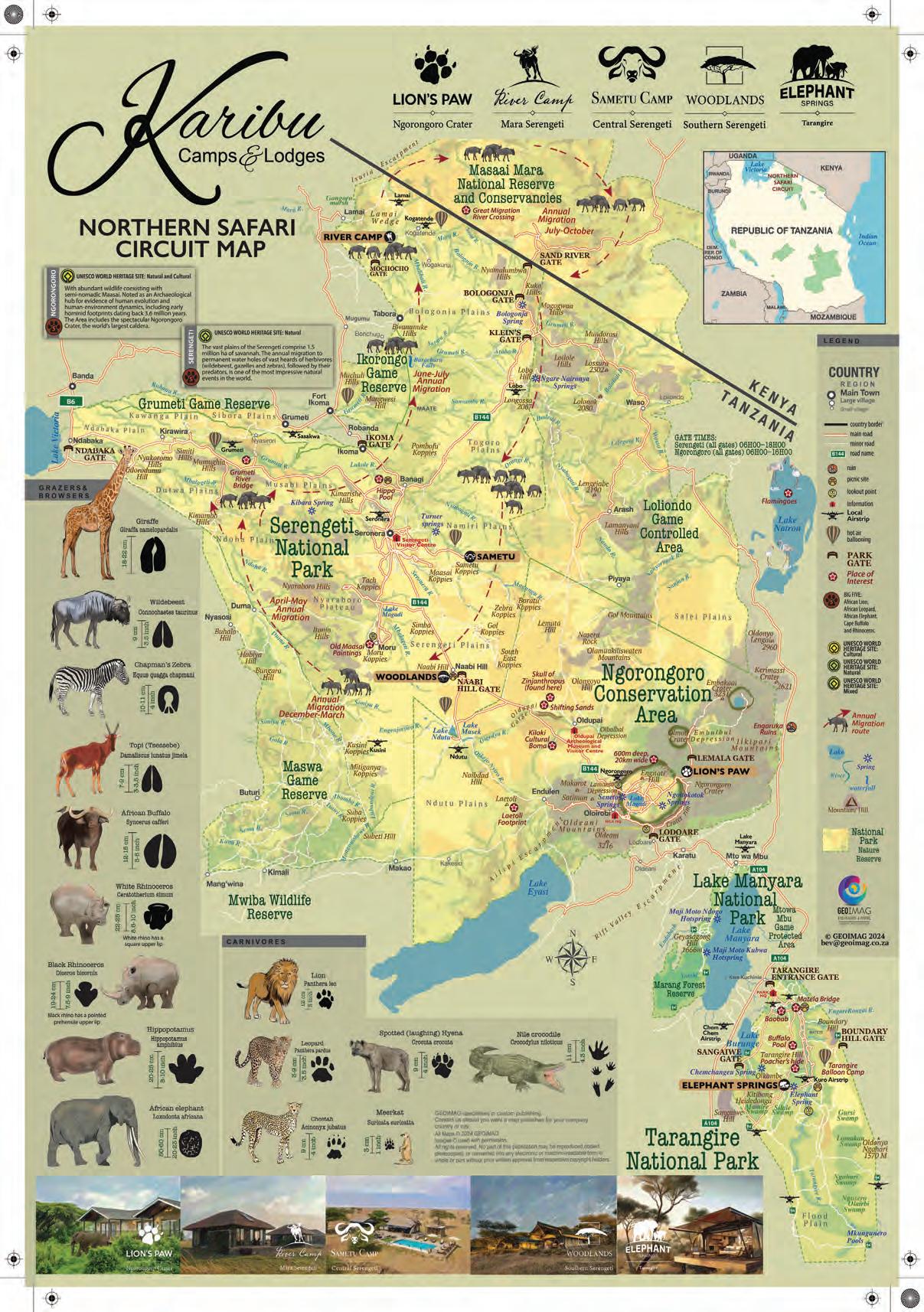

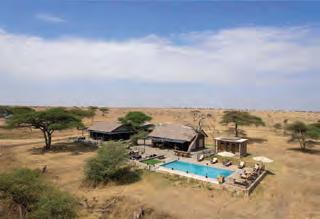





Serengeti National Park is undoubtedly the best-known wildlife sanctuary in the world, unequalled for its natural beauty and scientific value. With more than two million wildebeests, half a million Thomson’s gazelle, and a quarter of a million zebra, it has the greatest concentration of plains game in Africa. The wildebeest and zebra, moreover, form the star cast of a unique spectacular annual Serengeti migration.

Serengeti is approximately 27,000 square kilometres. It covers 14,763 km² (5,700 square miles) of grassland plains and savanna as well as riverine forest and woodlands. The park lies in the north of the country, bordered to the north by the national Tanzania and Kenyan border, where it is continuous with the Maasai Mara National Reserve.
To the south-east of the park is Ngorongoro Conservation Area, to the south-west lies Maswa Game Reserve, to the western borders are Ikorongo and Grumeti Game Reserves, and finally to the northeast lies Loliondo Game Control Area.
The Serengeti National Park is absolutely huge. If you are intent on viewing the Great Migration, then where you stay is as much dependent on the time of year you are travelling as it is the style of camp or hotel you are looking for. Get the location wrong and this park is so big that you will not see the herds.
The Serengeti is, therefore, broadly divided into four distinct areas: the
central Seronera Valley, the Western Corridor, the Northern Lobo and Kogatende areas, and finally the Southern Plains.
• The Center - Seronera Valley: In the heart of the national park, Seronera is a network of river valleys that ensure year-round water supplies and keep the region incredibly rich in wildlife throughout the year. Seronera has all the best features of the Serengeti and also, sadly, its worst. Scenically, it’s a lovely area – with open plains, occasional kopjes and lines of hills to add interest. The resident game here is phenomenal, with high densities of relaxed leopards, cheetah and lion. These live off the resident herbivores, as well as the migrating game. The migration passes through here in April/May, but Seronera is within reach of both the Southern Plains and the Western Corridor – so from about November to June, it can be used as a base to see the migration.
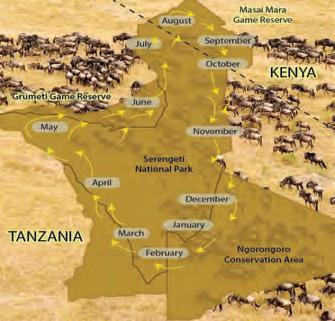
• Located in Tanzania, adjacent to Ngorongoro Conservation Area
• The Serengeti ecosystem includes 2 countries: Tanzania and Kenya
• In Kenya, the Serengeti ecosystem is renowned as Masai Mara National Reserve
• Serengeti National Park is 14,763 square kilometers
• First detailed research on the Serengeti ecosystem was undertaken by two German Nationals (father and son), Dr. Bernhard and Michael Grizmek. The details of their findings and stories on the Serengeti are documented in a book called “Serengeti Shall Not Die.”
• The Serengeti National Park has many rivers flowing through it, permanent and seasonal, including the Seronera River, Mara River, Grumeti River and Orangi River
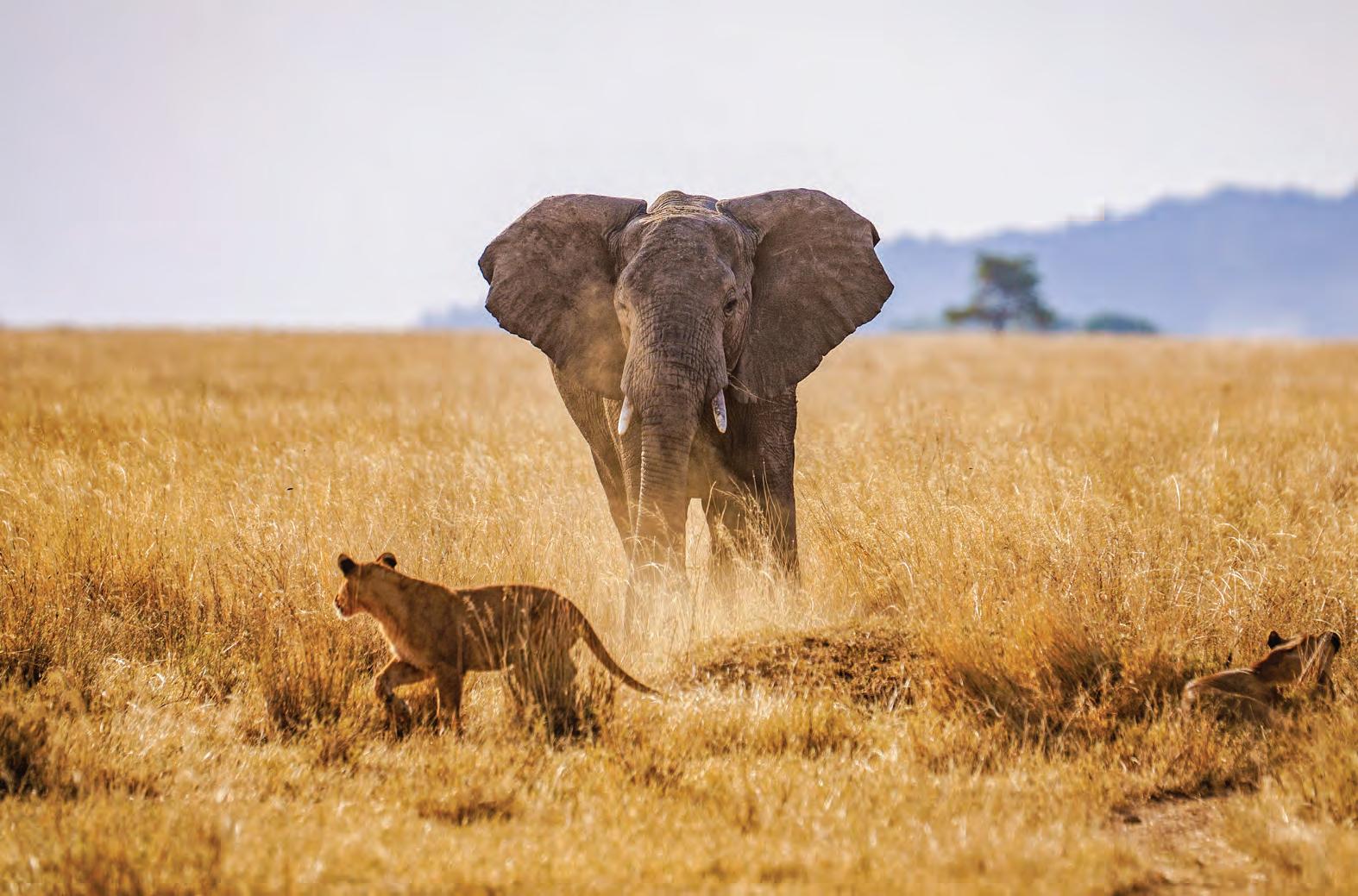

• Western corridor: Stretching to the west, almost to Lake Victoria, the Serengeti narrows into what’s known as the Western Corridor. The key feature of this area is the two rivers, the Grumeti and the Mbalageti, which run almost parallel, each supporting a band of moist, evergreen riparian forest. This area sustains a very good permanent game population, including plenty of zebras and wildebeest, all the predators and forest ‘specialists’ like colobus monkeys. The birdife is particularly varied. The migration passes through between about May and July – pausing to gather momentum before crossing the crocodile-rich waters of the Grumeti River, into the Grumeti Reserve.
• Northern Serengeti: The landscape is dominated by open woodlands (predominantly Commiphora) and

hills, ranging from Seronera in the South, to the Mara River on the border with Kenya. Apart from the migratory wildebeest and zebra (which occur from July to August, and in November), the bushy savannah is the best place to find elephants, giraffes and dik dik.
• Serengeti plains: The endless, almost treeless grassland of the south is the most emblematic scenery of the park. This is where the wildebeest breed, as they remain in the plains from December to May. Other hoofed animalszebra, gazelle, impala, hartebeest, topi, buffalo, and waterbuck- also occur in huge numbers during the wet season. Kopjes are granite formations which are very common in the region, and they are great observation posts for predators, as well as a refuge for hyrax and

pythons.
Today, the Serengeti National Park, the Ngorongoro Conservation Area, and the Maasai Mara Game Reserve across the border in Kenya, protect the greatest and most varied collection of terrestrial wildlife on earth, and one of the last great migratory systems still intact. The Serengeti is the jewel in the crown of Tanzania’s protected areas, which altogether make up some 14% of the country’s land area, a conservation record that few other countries can match.
Originally formed by volcanic activity, has been sculpted by the concerted action of wind, rain and sun. It now varies from open grass plains in the south, savannah with scattered acacia trees in the centre, hilly, wooded grassland


in the north, to extensive woodland and black clay plains to the west. Small rivers, lakes and swamps are scattered throughout. In the south-east rise the great volcanic massifs and craters of the Ngorongoro Highlands. Each area has its own particular atmosphere and wildlife.
It’s not all wild animals out on there: there are the people of the Serengeti: the Maasai. A striking people, tall, thin and clothed in their instantly recognisable red cloaks, the Maasai (also Masai, Masaai) have relied upon the Serengeti for more than two hundred years. The Maasai are an indigenous group of semi-nomadic people who have lived in East Africa for millennia. One of the most internationally recognised African ethnic groups, their traditional culture revolves around nomadic cattle

The Serengeti National Park is a large national park in Tanzania. Serengeti comes from the Maasai word “Siring” meaning “Endless Plain”, which really means hundreds of kilometers of flat surface land. The first understanding about Serengeti comes from its distinction of the ecosystem from the Serengeti National Park itself.
grazing and pastoralism. The Maasai rely heavily upon their herds of cows and goats for sustenance, in the form of milk and, occasionally, meat. They believe they were gifted all cattle by the rain god.
The Serengeti National Park is home

to over 500 different species of birds including 34 raptors, 6 vultures and aggregations of over 20,000 water birds. There are ostrich, marabou stork, lesser flamingo, African fish eagle, tawny eagle, lesser falcon (vulnerable), secretary bird, helmeted guineafowl, crowned crane, kori bustard, blackwinged pratincole, black-winged plover, Caspian plover, whitewinged black tern, Fischer’s lovebird, purpuratus, southern ground hornbill, grey crested helmet shrike, Karamoja apalis (vulnerable), red throated tit and several birds of restricted distribution such as rufous-tailed weaver.
Tanzania’s oldest and most popular national park, also a world heritage site and recently proclaimed a 7th worldwide wonder, this land is justifiably

famous for its huge concentrations of wildlife, especially when some six million hooves pound the open plains, as more than 200,000 zebra and 300,000 Thomson’s gazelle join the wildebeest’s trek for fresh grazing. Yet even when the migration is quiet, the Serengeti offers arguably the most scintillating game-viewing in Africa: great herds of buffalo, smaller groups of elephant and giraffe, and thousands upon thousands of elands, topi, kongoni, impala and Grant’s gazelle. The spectacle of predator versus prey dominates Tanzania’s greatest park. Golden-maned lion prides feast on the abundance of plain grazers. Solitary leopards haunt the acacia trees lining the Seronera River, while a high density of cheetahs prowls the south-eastern plains. Almost uniquely, all three African jackal species occur here, alongside the spotted hyena and a host of more elusive small predators, ranging from the insectivorous aardwolf to the beautiful serval cat. The park also supports many further species, including cheetah, Thomson’s and Grant’s gazelle, topi, eland, waterbuck, hyena, baboon, impala, African wild dog and giraffe. The park also boasts about 500 bird species, including ostrich, secretary bird, Kori bustard, crowned crane and marabou stork.
The wildebeest migration, like a discernible thread, embraces and connects the Serengeti’s ecosystem
much as it has done for at least two million years. Every year, with some seasonally dictated variations in timing and scale, one million wildebeest leave the southern Serengeti’s short grass plains in search of the grass and water they need to survive. During their annual pilgrimage they will travel some 2.000 miles devouring 4.000 tonnes of grass a day. A quarter of a million will be born, many will die.
The participants: White bearded Wildebeests, Burchell’s Zebras and Thompson’s Gazelles
• The highlight of the Serengeti ecosystem, not found anywhere in the world, is the migration of the animals thus the reason to visit Serengeti National Park and Masai Mara National Reserve.
• The migration of animals consists of White Bearded Wildebeests, Burchell’s Zebra and Thomson’s gazelles.
• The migration begins by the wildebeests, gazelles and zebra’s own innate biological triggers determined to search for water and greener pastures.
• The migration attracts diverse species of predators, some being: Hyenas, Lions, Leopards, Cheetahs, Crocodiles and Pythons etc.
• Over a million wildebeests begin their circumambulation of the Serengeti National Park and Masai Mara National Reserve. Over half a million Burchell’s Zebras and Thompson’s gazelles participate in
the traditions of the Serengeti.
By Plane - Scheduled and private charter flights are available from Arusha, Lake Manyara and Mwanza such as Auric Air, Coastal Aviation, Flight Link and Safari Air. By Road – you can drive from Arusha, Lake Manyara, Tarangire or Ngorongoro Crater.
Activities in Serengeti National Park You won’t be disappointed to have a few days for safari in Serengeti National Park. The park is ideal for a day tour, hot air balloon safaris, walking safari, picnicking, game drives, bush lunch/ dinner can be arranged with hotels/ tour operators. Maasai rock paintings and musical rocks. Visit neighbouring Ngorongoro Crater, Olduvai Gorge, Ol Doinyo Lengai volcano and Lake Natron’s flamingos.
The Serengeti is one of the very few places in Africa of which you can say the game viewing is outstanding at any time of year. April and May see the heaviest rains but even then, the lodges are ridiculously good value and the park is quiet. We believe the very best time of year to be in the park is either from January to March which includes the spectacle of the Great Migration calving, or alternatively from the middle of July all the way to the middle of November when the herds are crossing the Mara River to or from Kenya.



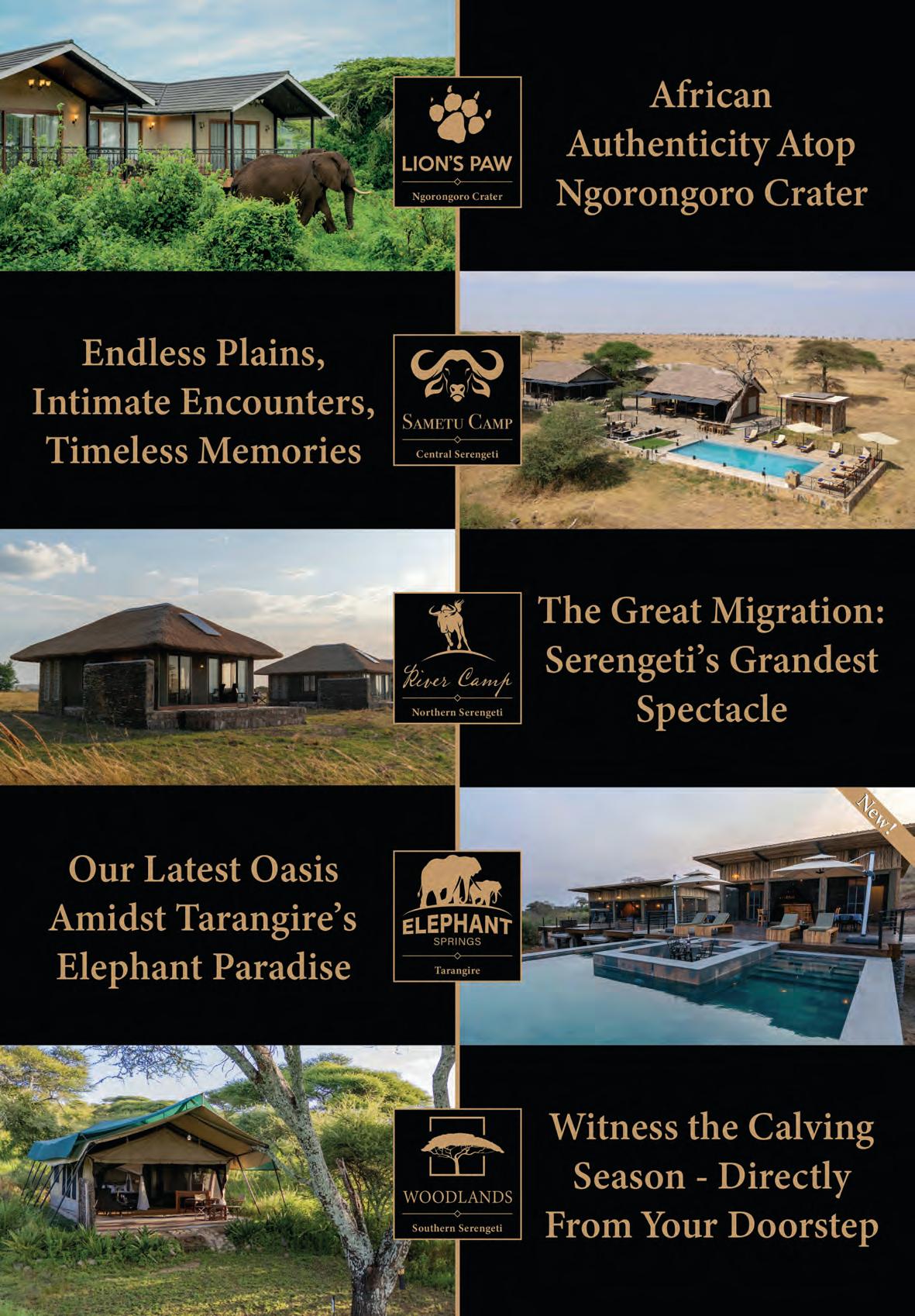
Nowhere else in Africa does such a varied cast of animals gather to graze, live, hunt and die. On one of Ngorongoro’s Crater you will encounter some of the 30,000 animals in the crater’s diverse range of habitats: swampy wetlands, open savannah, woodland and lake - all within the steep rock walls that climb through thick forest some 600m to the rim.
The Ngorongoro Crater, one of the eighth wonder of the world, is set in northern Tanzania, sharing part of the Serengeti plains to the north-west and with the towns of Arusha, Moshi and Mount Kilimanjaro, to the east, and
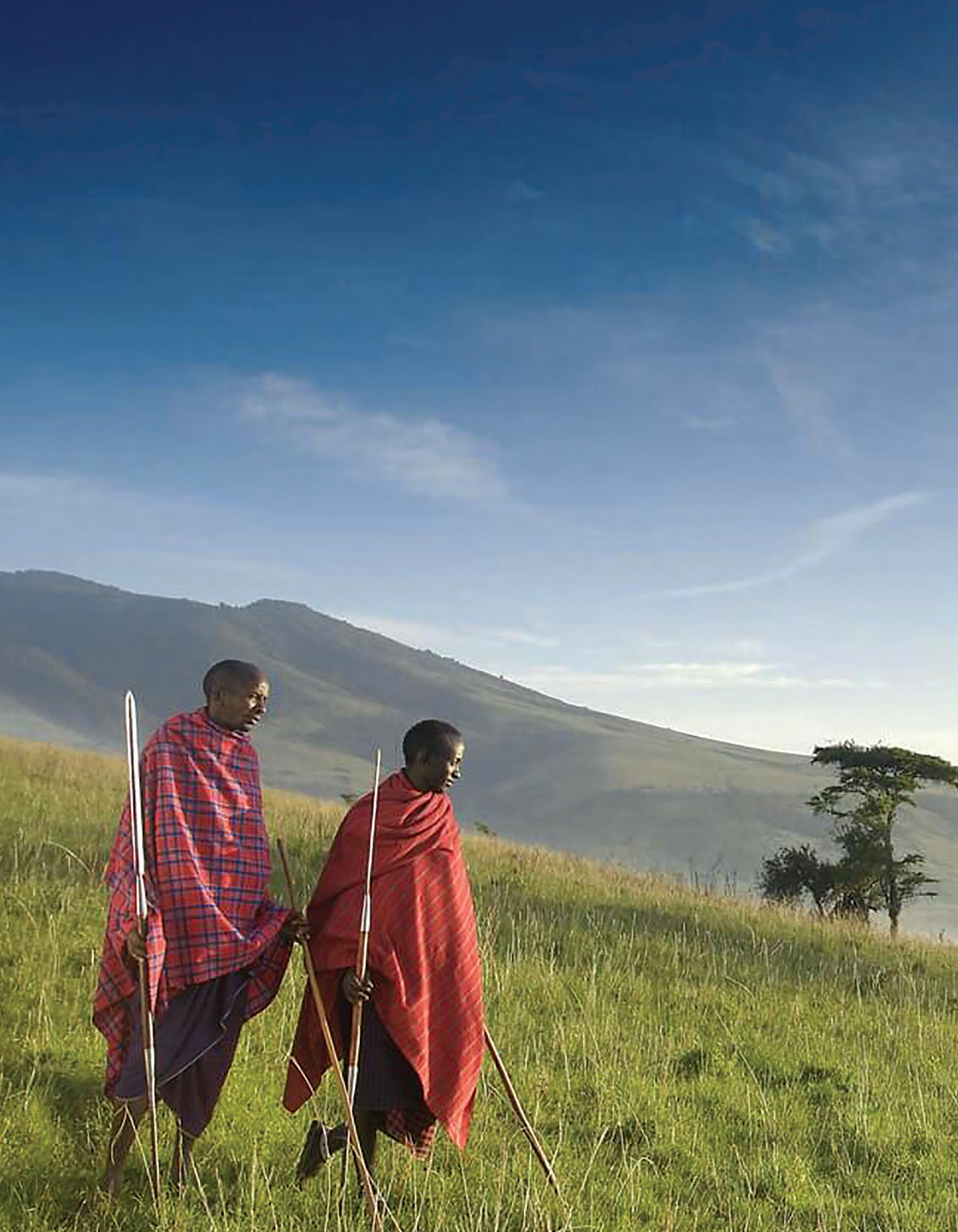
forms part of the unique Serengeti ecosystem. A major ecological survey of the Serengeti Reserve (which at the time included the Ngorongoro) by Dr. Bernhard Grizmek and his late son in the 1950’s resulted in the establishment of the Ngorongoro Conservation Area in 1959. At the moment the conservation area is administered by the Ngorongoro Conservation Area Authority, an arm of the Tanzanian government, and its boundaries follow the boundary of the Ngorongoro Division of Ngorongoro District. It has also been believed to have been taller than the famous Kilimanjaro before its inactive volcano collapsed and formed unbroken
caldera crater 610 meters deep, 13 mile (20km) wide about two million years ago.
The conservation area covers about 3185 sq miles (8250 sq km), the crater covers about 100 sq miles (260 sq km). It is also home to over 3000 different species including the endangered black rhinoceros; the crater has a forest and lake which support ecosystem in the park. Ngorongoro crater has been listed by UNESCO as world heritage site.
On Ngorongoro conservation area is where the world famous archaeological site of Oldupai George is allocated. The discoveries of fossil
footprints on lava rock as well as ancestral humans remain which are believed to be 3.8 million years old can be seen at the museum. Two main geological rifts run through the Ngorongoro area. Nine volcanoes in the Ngorongoro highlands were formed during the past four million years. One of these, Oldonyo Lengai (Mountain of God) is still active. Over millennia the ash and dust from each eruption has been carried by the winds to form the fertile soils of the Serengeti Plains. The earliest sign of mankind in the Ngorongoro is at Laetoli, where hominid footprints are preserved in volcanic rock 3.6 million years ago. Further north on the tourism circuit, Olduvai Gorge has yielded a wealth of hominid and animal remains.
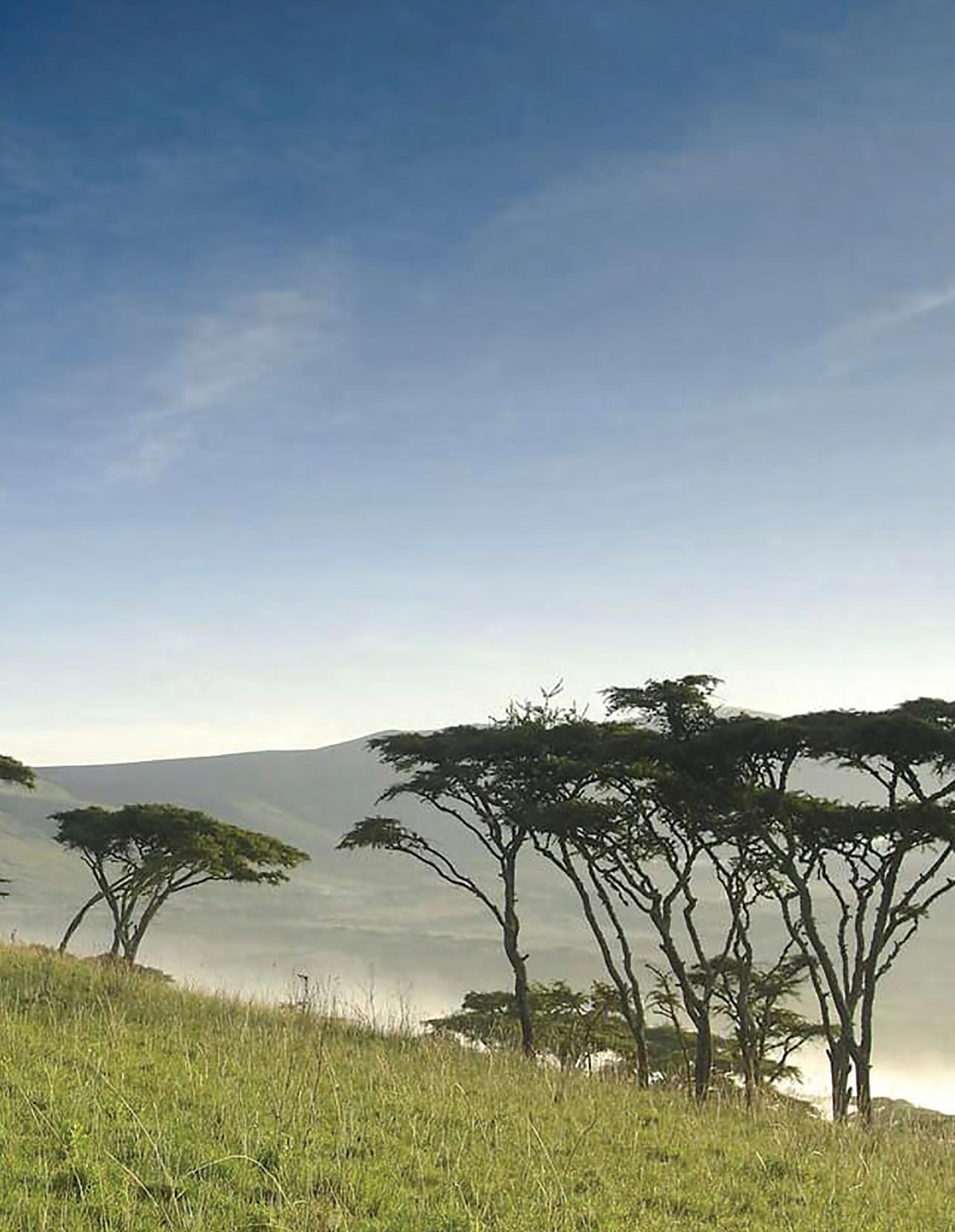


At Laetoli, west of Ngorongoro Crater, hominid footprints were preserved in volcanic rock 3.6 million years ago and represent some of the earliest signs of mankind in the world. Three separate tracks of a small-brained upright- walking early hominid, Australopithecus Afarensis, a creature about 1.2 to 1.4 meters high, were found. Imprints of these are displayed in the Olduvai museum. More advanced descendants of Laetoli’s hominids were found further north, buried in the layers of the I00 metres deep Olduvai Gorge.
Excavations, mainly by the archaeologists, Louis and Mary Leakey, yielded four different kinds of hominid, showing a gradual increase in brain size and in the complexity of their stone tools. The first skull of Zinjanthropus commonly known as ‘Nutcracker Man’, who lived about 1.7 million years ago, were found here. The excavation sites have been preserved for the public viewing and word continues during the dry season, coordinated by the Tanzania governments department of antiquities.


For thousands of years, a succession of cattle herding people moved into the Ngorongoro area, lived there for some time and then moved on, sometimes forced out by other tribes. About 200 years ago, the Maasai arrived and have since colonized the area in substantial numbers with their traditional way of life allowing them to live in harmony with the wildlife and the environment. The Maasai are allowed to take their animals into the Ngorongoro Crater for water and grazing but not to live or cultivate there. Elsewhere in the Ngorongoro, they have the right to roam freely. Visitors normally stop the Masaai cultural homestead, one on the road to the Serengeti National Park and another close to the Serengeti Sopa Lodge at the Irkeepusi Village.
The mixture of forest, canyons, grassland plains, lakes and marshes provide habitats for a wide range of birdlife. White storks, yellow wagtails and swallows mingle with the local inhabitants: stilts, saddle-bill storks, ibis, ruff and various species of ducks. Lesser flamingos fly in to feed from their breeding grounds at Lake Natron. Distinctive grassland birds –

Ngorongoro Crater, a deep volcanic crater is the jewel in Ngorongoro’s crown. It is the largest unflooded and unbroken caldera in the world. The Ngorongoro Crater is 19.2 kilometer in diameter, 610 meters in depth and 304 square kilometres in area. The rich pasture and permanent water of the Ngorongoro Crater floor supports a large resident population of wildlife of up to 25,000, predominantly grazing animals. These include wildebeest, Zebra, Gazelle, buffalo, eland, hartebeest and warthog. The swamps and forest provide additional resources for hippos, elephants, waterbucks, reedbucks, and bushbucks, baboons and vervet monkeys. Bull elephants of the Ngorongoro Crater regularly descend to the Ngorongoro Crater floor. The large breeding herds wander throughout the forest rim where they find the most suitable food. The steep inner slopes provide a habitat for dikdik and the rare mountain reedbuck. Jackals thrive in the crater and bat eared foxes live in the short grass areas. Predatory animals in the Ngorongoro Crater like leopards,
lions, cheetahs, serval cats, live off the abundant wildlife; large packs of hyenas roam the Ngorongoro crater, making their own kills and scavenging from others. Lions in particular are abundant in the Ngorongoro Crater. Thanks to the anti poaching patrols, the black rhino in the Ngorongoro Crater are relatively safe and the numbers are increasing with time. Ngorongoro Crater is one of the few places in East Africa where visitors can be certain of seeing the rhino in its natural environment. Birdlife in the Ngorongoro Crater is superb. The mixture of forest, canyons, grassland plains, lakes and marshes provided habitats for a wide range of birdlife. Things to be seen around Ngorongoro Crater are Laetoli and Olduvai Gorge, Lake Magadi, Lerai Forest, Gorigor Swamp, The Grassland, Oldonyo Lengai, Olmoti Crater and Embakaai Crate, Lake Natron, Gol Mountains (Oldonyo Gol Hills), Nasera Rock, Oldeani Mountain, Lake Eyasi and Serengeti Plains.
Best time to visit Ngorongoro Crater
Many people wonder when is the best time to go to the Ngorongoro Crater. The Crater is a year-round destination as most of the animals remain in the crater year round, ensuring great sightings no matter when you decide to visit the Ngorongoro Crater.


Tanzania is a beautiful country. Its landscape and people make it a unique location to undertake any sport. Whether it is early morning training runs past giraffes and zebra to the shores of Lake Manyara or on the slopes on Mount Kilimanjaro, a football match against a local village team, horse riding expeditions in West Kilimanjaro or treks in the Ngorongoro Highlands or from the sun-kissed islands of the Zanzibar Archipelago to the gentle shores of Lake Victoria, the country contains immense cultural and natural wealth.
As you can imagine, being on the tropical Indian ocean, and having Africa’s largest lakes, Tanzania has also a plenty of water sports, ranging from some of the world’s best diving (both in the ocean and freshwater lakes), yacht, dhow and boat trips, fishing, and adrenaline sports. Tanzania has some incredible sporting journeys to offer those who seek them out.
Flights by balloon take off as dawn breaks over the Serengeti, the perfect silence of the early morning plains broken only by the soft roar of the balloon. Far below, wildebeest scatter, looking everywhere but up at the silent visitor that floats over their world. Giraffe stand next to acacia trees, untroubled by the airborne visitors. After the thrill of landing, a champagne breakfast awaits, the air becoming
warmer as the sun climbs in the sky and curious zebra look up from their grazing at the chink of cutlery in the still, warm bush.
Scuba diving the coral reefs off Tanzania’s coast at Zanzibar and Mafia Island offer some of the world’s finest scuba diving. Diving is possible all year round, although the Kusi Monsoon (strongest June-Sept) is accompanied by choppy seas and strong currents that make the more exposed reefs inaccessible. There can also be strong winds in December and January. Visibility is best from November to march, before the long rains set in.
The water around Zanzibar and Pemba islands is considered by experts to offer some of the best fishing in the world, especially the Pemba Channel, between

Zanzibar and Pemba islands, or around Mafia Island, south of Zanzibar. Big game fish include barracuda, kingfish, sailfish, billfish, wahoo, Dorado and blue marlin.
There are some fabulous areas to paraglide. Very few people paraglide in Tanzania, therefore it is a novelty. Always seek permission from the local village, explain what you are doing and where you think you will land (it is illegal to fly over national parks). Just some of the areas to fly are the Usambara, the Rift valley and numerous hills around Mt. Meru. Microlight flights are now also available over Lake Manyara and the Great Rift Valley.
Although not a golfing destination,
there are numerous golf courses throughout the country, including Dar es Salaam and Arusha. The local clubs are always very welcoming to any visitor who may wish to swing the odd club. Contact your tour operator for details as to the nearest golf course to where you might be staying.
The perfect way to ease limbs after an exhilarating day’s game viewing or in preparation for the beach, there are now several hotels and lodges in Tanzania and Zanzibar offering world class spa facilities to keep you feeling relaxed and rejuvenated.
and relaxing way to watch wildlife. One of the best ways to see the Selous Game Reserve, up the huge muddy brown sweep of the Rufiji River, leopard whisking away from rocks at the boat’s approach. Sail into chimpanzee territory on a dhow, skimming over the Wami River in Saadani, surrounded by amazing birdlife, hippos and alligators.
Day rides are available from a few camps in Tanzania, for all standards of rider, and game animals are not afraid of horses in the same way that they are of cars or pedestrians, allowing visitors to approach the wildlife much more closely than usual.
For the fit and adventurous, mountain biking through the African landscape is truly an exciting experience. Avoid roads and traffic and ride through deserts and forests, up mountains and down valleys, through tiny villages and bustling market towns, then into the true wilderness past herds of antelope, giraffe and zebra.
Canoeing trips are available in the Arusha National Park and are a wonderful experience, drifting past herds of elephant, giraffe, hippo and buffalo as you cruise along the shores of the Lake surrounded by countless flocks of birds.
The soft chug of an outboard engine, or the whispering flap of a canvas sail; boat safaris in Tanzania are a tranquil
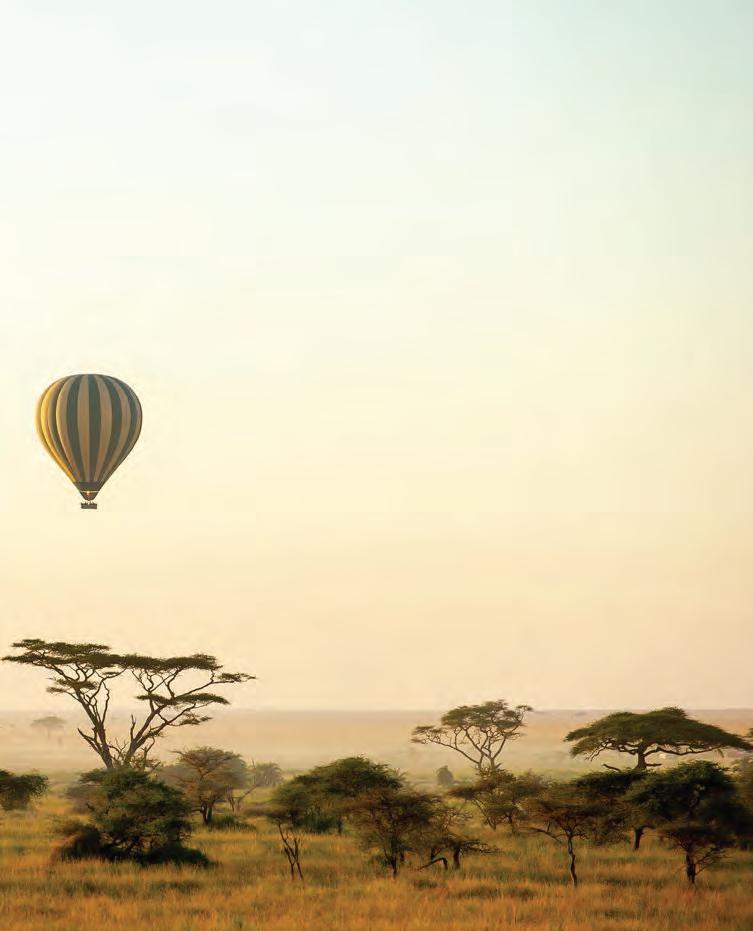
the 5,869m Kilimanjaro is the top prize. Mt Meru, another of Tanzania’s volcanic peaks, is also popular, with the varied animal and plant life to be found on its slopes a major draw. Meru is Africa’s fifth highest peak, with fabulous views of Mt Kilimanjaro and the Momela Lakes from the summit. The challenging ascent to the crater of Ol Donyo Lengai passes through some fantastic scenery, with panoramic views of the Rift Valley. The track to the top of Lengai is very steep, and a true challenge attempted only by hikers with a good level of fitness.
A walk through the African bush is a wonderful way to experience Africa intimately. Smells and sounds become distinct and varied, and smaller creatures gain significance. They are no longer simply rushed past in the race for the bigger game. When larger animals do appear, they are met at eye level; the land is truly shared between humans and animals. Safety is not an issue- all walks are accompanied by armed, experienced guides and game rangers. Walks can be from a few hours to a full day with picnic lunch. Many hotels and camps will offer guided walks in the national parks or community areas.
We believe that activities and sports is a language that helps peoples communicate throughout the world. Enjoy the activities and sporting of Tanzania and make your Holiday a life time enjoyable
For most climbers who visit Tanzania,



WHAT REASONS INSPIRE PEOPLE TO SCALE KILIMANJARO TODAY? WASN’T THE MOUNTAIN CONQUERED MANY YEARS AGO? OUR WRITER GERVASE TATAH EXPLORES THE MOTIVES THAT DRAW PEOPLE TO KILIMANJARO, RIGHT FROM THE DAYS OF HANS MEYER.
It is now one hundred and twenty-five years since the first successful expedition to the peak of Mount Kilimanjaro. The mountain was conquered in October 1889 after almost 40 years of attempts by western climbers to explore the mountain in difficult expeditions which included men like: Johannes Rebmann (1848), Baron von der Decken (1861 and 1862), Charles New (1871), Harry Johnston (1883) and Hans Meyer (18871889).
Mount Kilimanjaro is Africa’s highest mountain and one of the world’s most iconic peaks. Rising abruptly from the open plains, covered with snow and frequently fringed by clouds, it is one of Africa’s classic images and one that stunned the geographers and explorers of the 19th century: lying so close to the equator, how could the mountain contain snow?”
The presence of a snow-capped mountain in Africa, became known to Europeans in 1848 when the German missionary Johannes Rebmann explored this part of East Africa. However, reports from the explorer that there was a snowcapped mountain in Africa, so close to the Equator, was not believed until Hans Meyer and the Austrian mountaineer Ludwig Purtscheller climbed the mountain to the summit, ending a four- decade struggle among European explorers to reach the summit first and prove its snows.
Hans Meyer was a geology professor from Leipzig in Germany. He made four attempts to Kilimanjaro beginning in 1887 when the routes to the peak were not known, when the alpine forests round it was much thicker, and when its snow was much, much more prevalent on the slopes than it is today. Hans Meyer’s conquest indeed was difficult and historical.
Interestingly today, since Hans Meyer’s climb in 1889, the mountain still attracts climbers across the globe as if it is another beginning of discovery. Until today the attempt to climb Kilimanjaro is still the greatest challenge for adventurers wishing to reach the highest point on the African continent. But what really attracts people from every corner of the world, and from every age-set, to climb Kilimanjaro?
By and large, there are five good reasons that inspire people to climb Kilimanjaro:
Kilimanjaro is a natural wonder: it is


the highest mountain in Africa and the highest free-standing mountain in the world. It is a free-standing mountain because it is not a part of a mountain range; it just rises abruptly from the open plains to kiss the clouds with a snow-capped peak at an elevation of 5, 895m (19,340 feet).
1. Kilimanjaro is a dormant volcano but not an extinct one. The most recent activity was about 200 years ago; the last major eruption was 360,000 years ago. Ominous rumbles can sometimes be heard – and gases emerge from fume holes in the crater.
2. Almost every kind of ecological system in the world is found on the mountain, right from tropical crops on the cultivated slopes, to the lush alpine forest inhabited by wild animals. Above the forest lies the moorland zone where a cover of heather, giant lobelia and huge, cactus-like plants grow. Then there is an almost-lunar landscape, the
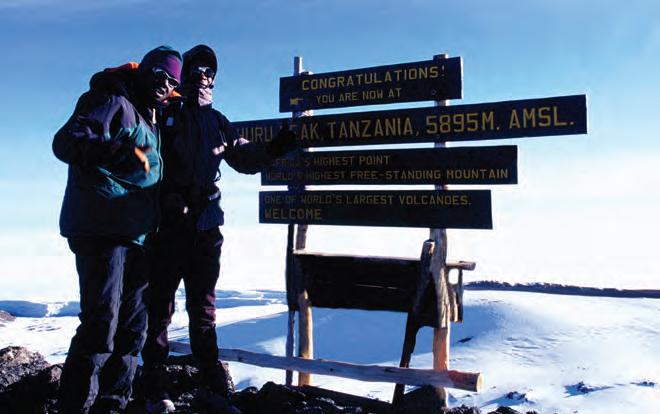
saddle, which stretches between the two peaks of Kibo and Mawezi. The saddle is just a desert vainly dotted with moss and lichen. Then, finally, the last vegetation gives way to a winter wonderland of ice and snow – the magnificent beauty of the roof of the continent.
3. Kilimanjaro is one of the world’s most accessible high summits: With the help of porters and a guide it is possible to walk all the way to the summit of Kibo without specialized mountaineering equipment, or experience, and Kilimanjaro can be conquered by any reasonably fit person. Most climbers reach the crater rim with little more than a walking stick, proper clothing and determination. The whole climb normally takes five or six days and involves four or five overnight stays in mountain huts or tents.
4. The highest point on the mountain, and indeed the whole of Africa, is Uhuru Peak on Kibo. The peak provides views of spectacular
Kilimanjaro is one of the Seven Natural Wonders of Africa. It is the tallest mountain in Africa, and the tallest free-standing mountain in the world. It is close to the equator but it features a snowtopped peak year round.
glaciers and a yawning wide crater. Also on Kibo is the slightly lower peak of Gillman’s Point. These are the goals for most climbers. And those who reach Uhuru, the actual summit, or Gillman’s Point on the lip of the crater, earn certificates at the end of their expedition for their brave endeavours to walk to the Roof of Africa.

THINGS YOU NEED TO KNOW AS YOU PLAN YOUR CLIMBING EXPEDITION
1WHO CAN CLIMB KILIMANJARO?
Kilimanjaro is the highest mountain in the world where climbers can walk from the bottom to the peak without specialized equipment. Ropes and other technical climbing gear are not necessary. Most climbers reach the crater rim with just a walking stick and determination. However, climbing Kilimanjaro is physically demanding. You should be in good shape before attempting the climb. Someone with a history of heart or lung problems must consult his or her physician before attempting to climb Kilimanjaro.
2WHAT KIND OF TRAINING AND EXERCISE DOES AN ASPIRING CLIMBER NEED?
He or she needs training by hiking at list three times a week carrying some weight in a backpack preferably 15 pounds, about 7 kilograms. If someone has an opportunity to do a hike in hilly areas, that is the best way to train. Mental preparation however, is the most important thing. The climber must be determined.
3HOW MANY ROUTES ARE THERE?
There are seven climbing routes and all head to the peak from different directions. The routes vary considerably in length, difficulty and scenery. They are Marangu Route, Machame Route, Rongai Route, Shira Route, Lemosho Route, Umbwe Route and Mweka Route It is possible to climb the mountain in five days, but more days on the mountain broadens the chances of summiting.

Climbing Routes: There are seven climbing routes and all head to the peak from different direction. The routes vary considerably in length, difficulty and scenery. They include Marangu Route, Machame Route, Rongai Route, Shira Route, Lemosho Route, Umbwe Route and Mweka Route.
4WHAT ESSENTIALS ARE REQUIRED TO ATTEMPT CLIMBING KILIMANJARO?
For a comfortable climb you need comfortable hiking boots. You need to dress in layers of cloth, a minimum of three layers. Bear in mind that cotton cloth is not good because when it gets wet it does not keep you warm. On top of your layers of cloth, a jacket and pants are necessary. The head must be well protected, for this you need a shade hat for the sun, a warm hat and a balaclava for cold. Sunglasses are very important too; bring a few pairs including glacier sunglasses. For sleeping bring a full size sleeping pad and a sleeping bag.
HEIGHT: TERMED THE ROOF OF AFRICA, KILIMANJARO HAS THREE VOLCANIC CONES: MAWENZI, SHIRA AND KIBO. KIBO IS THE HIGHEST, REACHING A HEIGHT OF 5895 METRES OR 19340 FT. THE OTHER PEAKS ARE MAWENZI 5,149 M OR 16,890 FT HIGH; AND SHIRA 3,962 M OR 13,000 FT HIGH.
5WHAT ABOUT TENTS?
The quality of tents is very important: high-quality tents will protect you from storms, snow, rains and keep you warm and safe on Kilimanjaro. Tents need to be specifically for high altitudes and wind resistance.
6DO CLIMBERS NEED THE SAME FOOD AT HIGH ALTITUDE?
On the lower altitudes as you begin to climb, full meals with protein will give you enough energy for the climb. As you get higher, your body cannot digest protein and thus little meat is served. All the way, the meals should contain vegetables and fruits for a proper diet. It is strongly advised you drink enough water every day; good hydration help acclimatization on the mountain.
7WHAT MEASURES DO YOU TAKE IN CASE OF AN ACCIDENT?
Kilimanjaro National Park has its well functioning rescue teams which work shoulder to shoulder with the company whose client has an accident. The rescue team can drive up to 12,000 feet above the sea level. Beyond that altitude they use different types of stretchers to carry the patient down the mountain depending on the severity of the problem. The patient is then taken by an ambulance to a hospital in Moshi town on the slopes of the mountain. Sometimes the patient is flown abroad for further care. For the case of highattitude sickness, the treatment is descend, descend, descend.


Mikumi National Park is only three to four hours’ drive from Dar es Salaam, lying astride the main highway to Zambia, and en route to the National Parks of Udzungwa Mountains, Ruaha and Kitulo. The main feature of the park is the Mikumi flood plain, along with the mountain ranges that border the park on two sides. Open grasslands dominate in the floodplain, eventually merging with the miombo woodland covering the lower hills. Mikumi National Park covers an area of 3,230 sq km, and is rich in wildlife including buffalo, wildebeest, zebra, lion, elephant, impala, hippos, baboon, giraffe, warthog, waterbuck and eland which can be viewed throughout the year. Reptiles including crocodile, monitor lizard and python are also resident in the park. Other animals that can be sighted although rare are the Sable Antelope resident in the southern part of the park bordering the Selous, the Greater Kudu, leopard, and the wild dog also known as the African Hunting Dog. More than 400 bird species have been recorded, including European migrants during the rainy season. Being close to Dar es Salaam on a good road, day trips are popular especially for those who have little time to spend an overnight
there. But it is recommended to spend at least a night in Mikumi to enjoy a fulfilling game drive in this beautiful park.
Udzungwa Mountains National Park is only a five-hour drive from Dar es Salaam. A conservation area of about 2,000 sq km. It lies in the Iringa and Morogoro regions of south-central Tanzania where it is bordered by the Great Ruaha River to the north and by the road between Mikumu and Ifakara to the east. The major attraction of the park is its biodiversity and unique rainforest where many rare plants, not found elsewhere in the world, have been identified. These range from a tiny African violet to 30-metre-high trees. For this reason, Udzungwa is being proposed as Tanzania’s eighth World Heritage Site. The park is home to eleven types of primates. Five of these are unique to Udzungwa, including the endangered Iringa red colobus monkey and the Sanje crested mangabey. The plateau also supports populations of elephant, buffalo, lion and leopard. Visitors should not expect to necessarily see these larger species however as they tend to be found in the less accessible area of the park. Bush
baby or galago, bush pig, civet, duiker, honey badger and three types of mongoose are more likely to be seen. The park is also home to a number of rare forest birds many only found in this area of Tanzania.
The other sanctuary of the chimpanzee, Mahale Mountains National Park, is only reached by charter flight or by boat from Kigoma. Covering an area of approximately 1,600 sq km, the park’s western boundary is the shore of Lake Tanganyika. The chimpanzee population is estimated at around 1,000 and may be observed in their natural habitat in groups of up to 30. Yellow baboons, red colobus, red-tailed and vervet monkeys also live in the park and are commonly seen as are bush-babies, bush-pigs, bushbuck, blue duiker, civet, hyrax and white-tailed mongoose. Buffalo, elephant, giraffe, leopard, lion, porcupine and other various types of antelope are also present but will prove more difficult to find. Lake Tanganyika is also home to more than 250 species of fish. Getting there: Between a four and a nine-hour boat trip, depending on the boat, from Kigoma. Or a two-hour flight from Arusha or Dar es Salaam.

The Southern Parks epitomizes Tanzania in her most pristine form, off the beaten track, away from the crowds of tourists and the sound of other safari vehicles. Here you will find prolific wildlife unscathed by human interaction, where the night sky dazzles with millions of stars, and a part of the continent which is untouched by time.

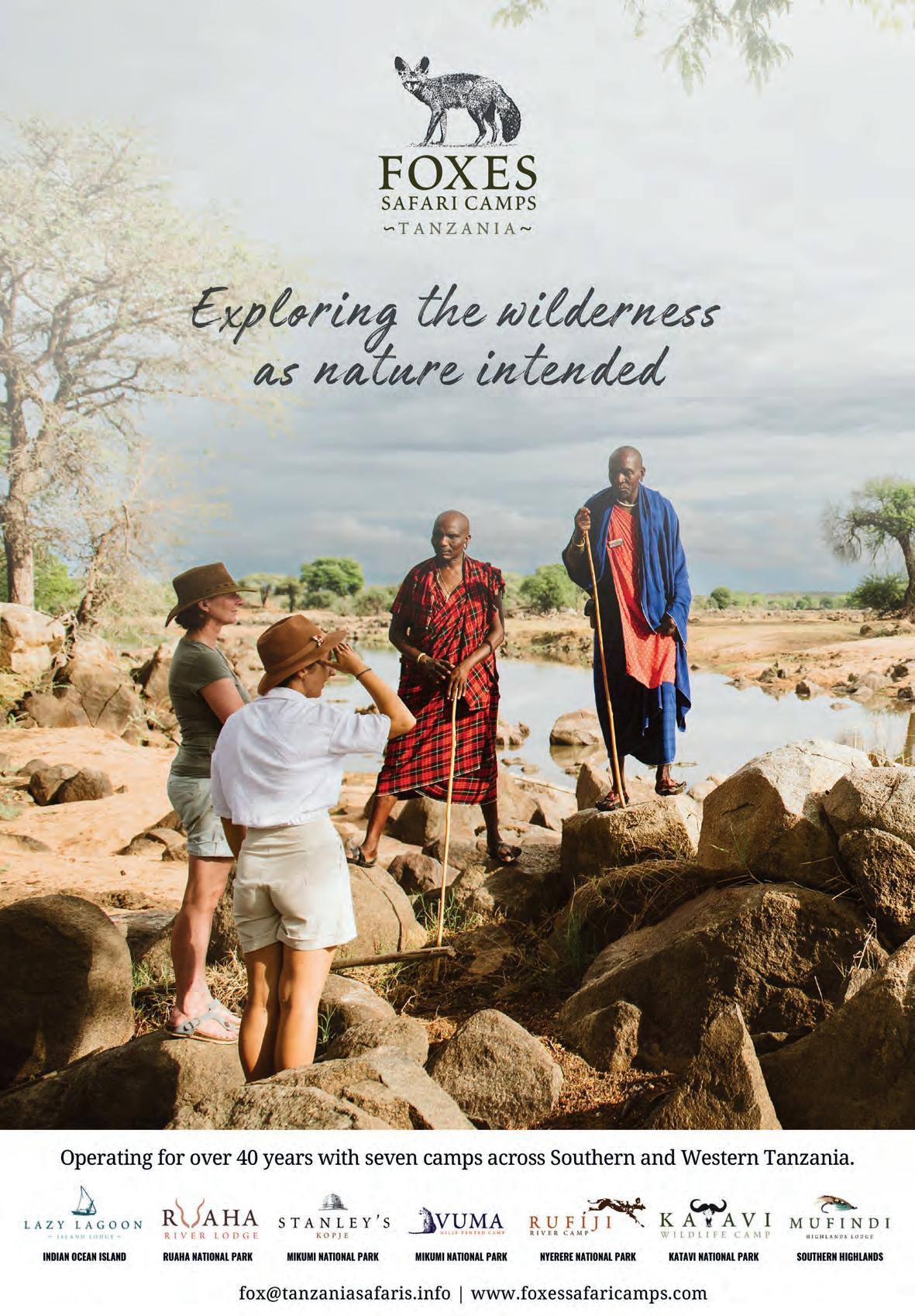

With its harsh and rocky landscape, no other park in Tanzania epitomises the definition of “wild Africa” quite like Ruaha National Park. After the annexation of two other major conservation areas, Ruaha is now the largest national park in Tanzania, covering a vast area of 23,000 square kilometres (substantially larger than Wales!). While few are familiar with the park, national park connoisseurs recognize it as one of the most spectacular in Africa.
For anyone seeking a true African wilderness experience, a visit to Ruaha National Park is essential. One of Tanzania’s wildest parks, Ruaha can only be described as a true, unspoiled, natural wilderness. Because of its distance from any major city, very few tourists visit the park each year. Yet those who do are treated to unsurpassable wilderness and complete isolation. Ruahas’ greatest secret lies in its extraordinary diversity of animals, plants and birds.
The vast majority of the park above the escarpment termed “Miombo Woodland ‘’ is rarely visited by tourists, as it is relatively difficult to reach and known for challenging game viewing and an abundance of tse-tse flies. The scenery in Miombo is quite dramatic, with tall Brachystegia trees forming continuous woodland housing for some specialist species of antelope, such as the magnificent sable, as well as several miombo-specializing birds. The low-altitude Ruaha Valley is the
more developed section of the park, which covers little more than a third of the park’s total size. The Ruaha Valley has a decent road network for game viewing and a variety of vegetation types, thus offering a diverse game drive experience without the annoyance of tse-tse flies. The Great Ruaha River, which is known as the park’s lifeline, attracts big herds of animals of all shapes and sizes and flows right through the Ruaha Valley. Some of Ruahas’ best features are found in the valley, from massive rocky hills and outcrops to dense, impenetrable bush and open grasslands in the east. The most striking features are numerous serpentine dry “sand rivers”, which crisscross the park and are lined with dense vegetation, where many animals take refuge.
For birdwatchers, Ruaha’s birdlife is sure to please. There are a recorded 530 different species of birds in the park, including giant herons, saddlebilled storks, white-headed plovers and white-backed night herons. There are six species of both vultures and hornbills, and raptors abound. The crested barbet, an attractive yellowand-black bird whose persistent trilling is a characteristic sound of the southern bush, can also be found in Ruaha alongside central Tanzanian endemics such as the yellow-collared lovebird and ashy starling. The park’s birds make their home among the branches of Ruaha’s 1600 species of trees, which is twice as many as the number of species in the great Selous Game Reserve, although Ruaha is only
half the size of Selous.
WILDLIFE IN RUAHA NATIONAL PARK
Only two words can define the wildlife at Ruaha National Park: wild and beautiful. The park holds an incredible array of animals. Among Tanzanian parks, Ruaha possesses one of the highest species counts of large mammals. The park holds an estimated 20,000 elephants alone, and it is not uncommon in the dry season to see well over 100 elephants in a single drive. Hippos rule the river, and vast quantities of these animals can also be seen sunning themselves along the stunning river sandbanks in the early morning. Massive herds of buffalo, with up to 500 animals plus seen in a single herd, coexist alongside giraffes, zebras, impalas, elands, crocodiles, lions and leopards.
Ruaha is also home to some very rare creatures. Sable antelope can occasionally be found in the Miombo areas as well as in the springs in the western part of the park. Roan antelope are also sometimes seen in the eastern area of the park. Lesser kudus and grant’s gazelle are intermittently spotted at the southernmost point of their geographical range. Dik-diks abound all over the park, and rarely does a drive return without having glimpsed the noble greater kudu. Ruaha is also home to the second largest population of wild dog in Africa. As the majority of the park’s wild dogs live in the inaccessible wilderness areas of the north, only a few lucky visitors spot them.

Located in south-western Tanzania, Ruaha sprawls within and along an ancient arm of the Great Rift Valley, covering a unique transition zone where the eastern and southern species of both fauna and flora meet against a dramatic topographical background. Because of its location on the rift and surrounding geological formations, Ruaha is extremely diverse, with access to several different habitat types.





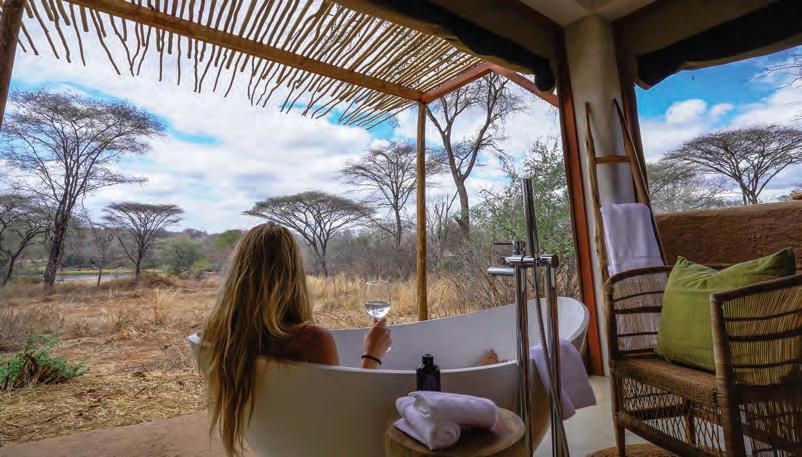

WHY VISIT RUAHA NATIONAL PARK?
• Untouched, Pristine Nature: Ruaha is one of the less frequented national parks in Tanzania, which means that the park’s wildlife has hardly been altered by human intervention.
• Personalized Wildlife Watching: Because Ruaha is expanding in size yearly, the chances of bumping into other vehicles that can startle an animal you may be already watching are limited.
• Lots to Discover: In areas where park authorities have formal tracks, there are no access restrictions, which allows visitors a great deal of freedom to explore undiscovered territory. Currently, Tanzanian park authorities are adding more routes while carefully monitoring the ecological impact,
thus ascertaining that the wildlife remains as undisturbed as possible. There are plans to add up to 1500 kilometers of road networks.
• Go by Foot: Ruaha is one of the few national parks in Tanzania where walking safari is permitted when accompanied by an armed ranger. This liberty gives nature enthusiasts an opportunity to receive an up-close and personal experience with wildlife in dense places where safari vehicles cannot penetrate.
GETTING TO RUAHA NATIONAL PARK
There are two ways guests can reach Ruaha National Park. One is by road, through Iringa from Dar es Salaam via Mikumi, or from Arusha via Dodoma. Ruaha is also accessible by

plane. Scheduled charter flights are available from Dar es Salaam, Selous, Serengeti, Arusha, Iringa and Mbeya through companies such as Safari Air Link, Flight Link and Coastal Aviation.
To see predators and large mammals, dry season (mid-May to December); to see birds, lush scenery and wildflowers, wet season (January to April). The male greater kudu is most visible in June, which is the breeding season.
For the more discerning safari lover who is looking for an ‘off the beaten track’ pure wilderness experience, a visit to Ruaha to view its large beasts, stunning vistas, numerous baobabs and unique birds and animals must not be missed!



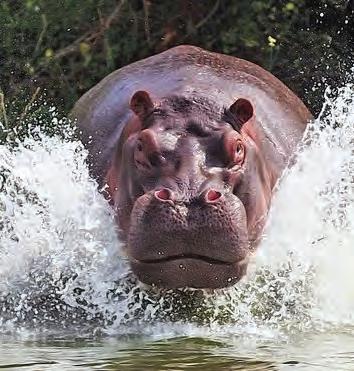
One of the most pristine and rugged nature reserves in Tanzania. The enormous grass landscape with thousands of buffalo and antelopes are a true highlight. In the beautiful forests and around the lakes you find many hippos, crocodiles and birds.A special and unique safari area with a rich flora and fauna, so remote that it only receives over a thousand visitors each year.
With an area of roughly 4,471km², Katavi National Park is the third largest park in Tanzania. It is also by far one of the least visited in the country, making it a truly untouched wildlife paradise. Located in the western part of Tanzania, about 40km south of Mpanda town. Found in the shortened arm of the Great Rift Valley ending in a shallow area of Lake Rukwa. Lies east of Lake Tanganyika.
The park is primarily fed by the Katuma River which in the rainy season – April and May – transforms the park into a wetland. Lake Chada and Lake Katavi are both seasonal lakes which are situated within the park boundaries. In terms of vegetation the park hosts a varied mix of bush land, Miombo forests, riverine forests as well as grasslands.

The characteristic feature of Katavi National Park is the Katisunga Plain, which is 425 km in size, a vast grassy plain in the heart of the park. The small rivers and swampy lakes such as Katavi and Chada support huge populations of hippos and crocodiles. When the floodplains dry up and wildlife gathers at the remaining water, the park comes to life. The hippos then gather by the hundreds for a bath in a muddy pool. Territory battles are the order of the day. A unique spectacle.
With over 400 species of birds, Katavi is a great place for birdwatchers. Large flocks of storks like saddle bills, openbilled and spoon bills as well as African fish eagles, Bateleurs, lilac breasted rollers, crested barbets and paradise flycatchers are but a few on the long list of birds in Katavi.
Home to an abundance of wildlife, including wildebeest, giraffes, elephants, zebras, African buffaloes, lions, leopards, and cheetahs. Crocodiles and hippos are frequently spotted on the banks of the Katuma River. During the dry season, hippos relax in mud-holes and cover themselves in mud sunscreen to protect their sensitive skin. Katavi is also a refuge for wild dogs, a critically endangered species.

The main activity in the park is game drives. These generally focus on the floodplains and watercourses, which tend to support the most wildlife and be free of the tsetse flies that haunt more densely wooded areas. Night drives and walking safaris are also available.
The best time to visit Katavi National Park is the dry season from June to October. In this period, you can see vast numbers of wildlife that congregate along the Katuma River. Enormous populations of hippo, crocodile, buffalo, elephant, and antelopes can be seen here. All of which guarantees superb predator action.
Travellers can get to Katavi National Park by road and air. By road, Katavi National Park is quite hard to access, with travellers travelling from Dar es Salaam to Mbeya being 1513km, Dar es Salaam via Tabora 1392km, Arusha to Tabora 1015km, all of which are long distances to drive. By air, there are several domestic airlines like safari air link and Auric Air which offer charter flights from Dar es Salaam Mwanza or Arusha to either Mpanda airport or Sitalike and Ikuu airstrips inside the park.

Kitulo, which has recently become a fully protected national park, is situated on the Kitulo Plateau, which forms a part of Tanzania’s Southern Highlands. It is situated in the remote southwest corner of Tanzania on the Zambian border. The area, which is known locally as ‘Bustani ya Mungu’ (The Garden of God), is also known as the Serengeti of Flowers. Kitulo hosts ‘one of the great floral spectacles of the world’.”
Perched at around 2,600 meters (8,500 feet), between the rugged peaks of the Kipengere, Poroto and Livingstone Mountains, the well-watered volcanic soils of Kitulo support the largest and most important grassland community in Tanzania.
Kitulo Attractions
The park consists of three main attractions. Primary, among these is the Ndumbi River Valley, the real jewel of the protected area. Small streams flow from gentle hills and unite in a broad valley to form Ndumbi River, which is one of the main tributaries of the Great Ruaha River.
Along the Ndumbi grows the about 40 m (131 feet) high East African juniper
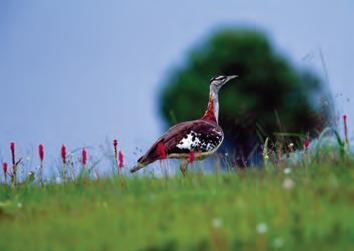

Orchids, irises, lilies, honeypeas, bellflowers, balsams and other wildflowers bloom as far as the eye can see. Kitulo hosts more than 350 species of vascular plants, including 45 varieties of terrestrial orchids, which erupt into a riotous wildflower display of breathtaking scale and diversity. Kitulo is a rare botanical marvel.
tree, a genus of the cypress family. The Ndumbi Valley opens onto the large Kitulo Plateau in a sea of flowers. During the winter months, this is a paradise for birds, including those from Europe and North Africa.
Kitulo - a botanist and hiker’s paradiseis also highly attractive to birdwatchers. Tanzania’s only population of the rare Denham’s bustard is resident, alongside a breeding colony of the endangered blue swallow and such range-restricted species as the Mountain marsh widow, Njombe cisticola and Kipengere seedeater.
The plateau is also home to important animal species including national and

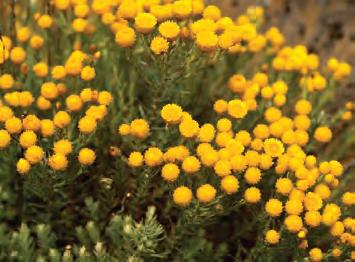
regional endemics. Breeding colonies of Blue Swallow (Hirundo atrocaerulea) and Denham’s Bustard (Neotis denhami), as well as species such as Lesser Kestrel (Falco naumanni), Pallid Harrier (Circus macrourus), Njombe Cisticola (Cisticola njombe), and Kipengere Seedeater (Serinus melanochrous), contribute to the plateau being an Important arid area. The Kitulo plateau holds the only remaining viable population of Ardeotis Denhami in the Southern Highlands of Tanzania.
Things to do in Kitulo Plateau
• Open walking across the grasslands to watch birds and wildflowers.
• Hill climbing on the neighbouring ranges.
• A half-day hike from the park across the Livingstone Mountains leads to the sumptuous Matema Beach on Lake Nyasa. (Good hiking trails exist and will soon be developed into a formal trail system.)
When to go
The best time to visit the park is December and April for wildflower displays. The sunnier months of September to November are more comfortable for hiking but less rewarding to botanists. Conditions are cold and foggy from June to August.


Size: 50,000sq km (21,000sq miles)
Location: southeast Tanzania
Scenery: Beautiful views of colorful African landscapes, diverse vegetation types, including rocky acacia-clad hills, gallery and ground water forests, swamps and lowland rain forest.
Features: Forests, rocky hills, mountains, waterfalls, rivers such as Rufiji, Great Ruaha and Kilombero River as well as sand rivers, which are one of the most unique features of the Selous landscape.
Wildlife Includes: Elephants, buffalo, leopards, African wild dogs , lions, hippo, crocodiles, plus a variety of bird life: fish eagles, African Skimmers, waders, herons, kingfisher and weavers. Antelopes, white bearded wildebeest and giraffes are also commonly seen north side of the river.
Now the Largest National Park in Africa, Nyerere National Park is a newly established Park which is part of what is known as the Selous Game Reserve. The name of the park is given in honor of the founder of the Tanzania Nation, the late Mwalimu Julius Kambarage Nyerere. The Park has been established in year 2019 and covers an area of over 30,893 sq km which a large area of the reserve is drained by the Rufiji River and the remaining 19,107 sq km as Selous Game Reserve.
Only 200 km west of Dar es Salaam lies the mighty Nyerere National Park, together with Selous, one of Africa’s least known yet wildest conservation areas. A World Heritage Site, Game Reserve and the largest expanse of National Park in Africa. The Nyerere National Park, together with Selous’ ecosystem as a whole is made up of a few conservation areas, namely Mikumi in the north and the Kilombero game-controlled area in the west, covering in total over 90,000 sq km of pristine wilderness devoid of human influence.
The greater part of the northern sector of Selous is earmarked for photographic tourism, and it is one of the most beautiful and game-rich areas in the whole ecosystem. Three quarters of the Reserve is woodland of various types, short grassy plains, and seasonally flooded pans. Impressive riverine forests and dense impenetrable thickets are important habitats within Selous. The wide, meandering Rufiji River is one of the largest water systems in East Africa. With its associated wetlands, lakes and swamps, it is one of the most outstanding ecological systems in the whole of East Africa.
The mighty Rufiji River is responsible for the huge variety of birds drawn to this area. This enormous river with its everchanging pattern of sandbanks, oxbow lakes, lagoons, islands and channels is a magnet for several rare species of birds. Pretty pink-backed pelicans are often seen here as are great white pelicans. When the water levels lower during the dry season, the fish become consecrated in this shrinking environment and waterfowl are attracted to feast on this easy prey. Egyptian Geese and Whitefaced Whistling Duck are common at these times. The White-backed Herron, an elusive the night birds are more prevalent along the river banks.
Nyerere National Park, together with Selous contains about one third of all the wild dogs (often called painted dogs) in the world. Their need to roam vast areas and their formidable hunting skills have caused many to be shot by farmers, but here in Nyerere National Park, together with Selous they have boundless woodlands and savannas in which to roam. Over 800,000 mammals, including lions, leopards, cheetahs, elephants, buffalos, zebras, impalas, gnus, hartebeests, waterbucks, giraffes, kudus, warthogs, grysbok, hyenas, jackals, wild dogs, bush babies, baboons, Vervet monkeys and mongooses are also present. And that’s without mentioning the reserve’s specialty – an abundance of hippopotamuses and crocodiles.
In the dry season, an ancient migration of elephants takes place between the Nyerere National Park Ex Selous and Mozambique's Niassa Game Reserves. This is one of the largest natural transboundary ecosystems in Africa and at the last consensus it was estimated that 64,400 elephants roam the two parks, with 84% on the Tanzanian side.



Unique
safari environment, combining the rarest of recipes – river, forest, and woodlands around the lagoons, sandbanks and lakes of the Rufiji River.
Visitors have two choices for their mode of transportation. ROAD - One would be undertaking a road safari from Dares-Salaam, where the normal circuit tour would include a visit to Mikumi National Park, leading to Ruaha National Park, and heading out to Nyerere National Park, together with Selous by using the Morogoro access road, which leads to the far left end of the Nyerere National Park Ex Selous, and entering the Matambwe Gate. AIR CHARTER – The second way one can get to the Nyerere National Park, together with Selous is by plane (Coastal Aviation, Flight Link, Safari Air Link & Auric Air) with departures from Arusha, Zanzibar and Dar-es-Salaam, landing at the various


accom modation or public access airstrips. This is the quickest but also the more expensive way to get to the game reserve.
The conservation area allows walking and boating safaris, unlike other national parks, and guiding standards are high. Many camps will arrange fantastic fly-camping nights in the bush, bookable in advance. It also facilitates encounters with rare and endangered wild dogs, boat game viewing, fishing, hiking safaris, and bird-walking safaris in addition to standard wildlife safaris.
Dry Season: The dry season sets in during June to November and is the best time for game viewing along the rivers. Elephants come out of the bush at that time and predators are more commonly seen. Rainy Season: January to April is wonderful for birdlife and lush scenery but many roads become impassable after heavy rains. December to February is still good for game viewing but can be rather hot and humid. The safari lodges are usually closed from March to May.
Nyerere National Park, together with Selous are one of the last untouched gems of the nation's parks, it offers the visitor a unique opportunity to see Africa the way the early explorers found it - pristine, alive with game, empty of tourists and utterly awe inspiring.

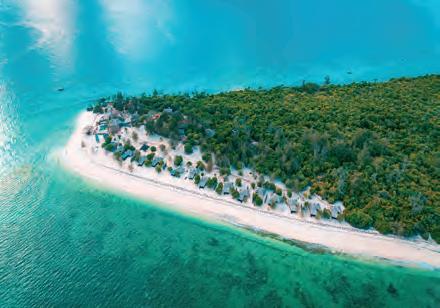

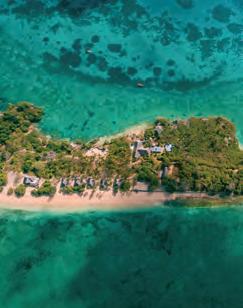
“Zanzibar’s coastline offers some of the best beaches in the world, but sand and surf vary depending on what side of the island you’re on. On the east coast, waves break over coral reefs and sand bars offshore, and low tide reveals small pools of starfish, small minnows, and anemones. Up north, ocean swimming is much less susceptible to the tides, and smooth beaches and white sand make for dazzling days in the sun.”
Zanzibar is the semi-autonomous part of Tanzania in East Africa. It is composed of the Zanzibar Archipelago in the Indian Ocean, 25–50 kilometres (16–31 mi) off the coast of the mainland, and consists of many small islands and two large ones: Unguja (the main island, referred to informally as Zanzibar) and Pemba. The capital is Zanzibar City, located on the island of Unguja. Its historic centre is Stone Town, which is a World Heritage Site.
Portuguese invasion and control of the
The famous spice island with exotic smells and outstanding beaches!



Swahili Coast in the late 16th century ended the golden age of the archipelago, although the Omani Arabs returned to power less than a century later. Today, many of the winding streets and high townhouses of old Stone Town remain unchanged and visitors can walk between the sultan’s palace, the House of Wonders, the Portuguese fort and gardens, the merchants’ houses, and the Turkish baths of the old city. Day-long spice tours to working plantations offer visitors the chance to observe the cultivation of cloves, vanilla, nutmeg, cinnamon, and other spices that have made the island famous.
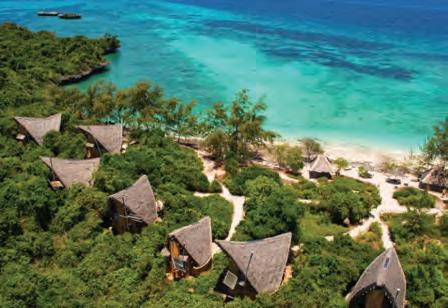
The port city of Stone Town dominates the west coast, and although the beaches of Mangapwani, where slave caves are visible at low tide and nearby Bububu are less than half an hour’s drive away, a night or two spent on the east or north cost is well worth the extra hour it takes to drive there. That said, the Chole Island Marine Park just off Stone Town – and nearby Prison, Grave, and Snake Islands – make a refreshing daytrip and a good break from exploring the winding passageways of the old city.
On the south coast of Zanzibar lies the Menai Bay Conservation Area, a sea turtle
protection area for the endangered species that come to breed on the island. Roads to the southeast coast take visitors through the Jozani Forest, home to Zanzibar’s rare Red Colobus monkeys and a number of other primate and small antelope species.
THE ISLANDS OF ZANZIBAR
Zanzibar has many offshore islands, which provide a stunning location for a day trip or a longer stay. Boats to any of the islands off Zanzibar or Pemba can be hired easily from local fishermen. In Stone Town, ask at the ‘big tree’ opposite Mercury’s restaurant on the seafront, or arrange a day trip with one

of the tour companies listed in this guide.
A slightly more upmarket choice than Prison Island, Chapwani, or Grave island, is the site of a luxury hotel, but day visitors who come to eat and drink in the bar and restaurant are permitted. Chapwani is the site of a British naval cemetery, the final resting place of sailors who perished while serving in Zanzibar. The victims of the World War One attack on the HMS Pegasus by the German warship Konigsberg are also buried here. It’s interesting to wander around the graveyard and decipher the ages and causes of death of the servicemen – many died from tropical disease, or were killed in skirmishes with local slavers. Chapwani also has a beautiful white sandy beach and a small population of duikers (a type of miniature antelope), as well as some interesting birdlife. Government of Zanzibar, which rules the country to this day.
Bawe Island has some of excellent snorkeling spots. Around a 30-minute boat ride and slightly more expensive than the boat to Prison Island, it is much less visited. In 1870, the island was used to anchor the first telegraph cables to Zanzibar linking it with Aden, South Africa and the Seychelles. A further line was run across to Stone Town, into the old Extelcoms building, now the Zanzibar Serena Inn. If complete isolation and privacy is what you are after, then Bawe Tropical Island is the perfect place to stay. There are 15 private cottages scattered along the beach front, all with breathtaking panormaic views of the ocean, and all tastefully decorated in soft colours to enhance the relaxed pace of life. The


“Known as the spice island, the beautiful island of zanzibar on africa’s east coast is bursting with culture and history, seemingly at odds with its idyllic geography of whitesand beaches with palms swaying lazily in the sea breeze. Together this makes zanzibar a fabulous place to explore as well as a dream to relax and unwind.”
beach is excellent at low tide, with unusual stone formations, and there is some good snorkelling to be had on the island’s reef.
PRISON ISLAND
Prison Island, also known as Changuu Island is one of the most popular destinations for day trips from Stone Town. Just a short boat ride away, the island offers excellent snorkeling, a nature trail, small beach and the unusual attraction of a sanctuary for giant tortoises. Despite its name, the closest the island has come to actually being used as a prison was by its first owner, a wealthy Arab who sent unruly slaves there for discipline. In 2006, many of the islands old buildings were restored, and Changuu Private Island Paradise was opened, offering 15 deluxe cottages all on the seafront, affording maximum seclusion and privacy. There are


also 12 standard rooms in the old quarantine area, with fantastic views back across to Stone Town. If swimming and snorkelling in the crystal blue waters gets too much, have a paddle in the freshwater swimming pool, or hit the ball around on the floodlit tennis court. Mathews’ restaurant offers excellent seafood lunches, and 4 course dinners, all overlooking the restored prison ruins.
CHUMBE ISLAND
Six kilometres south of Stone Town, surrounded by pristine coral reef, Chumbe Island Coral Park is one of the world’s most successful eco-tourism projects. In 1994 the reef surrounding Chumbe Island was named Tanzania’s first Marine National Park. The island itself, covered with lush mangrove forest, is a designated forest reserve. Visitors can come for the day to snorkel over the incredible coral reef, home to over 370 species of fish, turtles and dolphins. To experience Chumbe Island properly, stay the night in one of the seven ‘ecobandas’ that nestle in the forest. Each is a twostorey, private cottage constructed out of local materials and decorated with shells, driftwood and colourful local fabrics. Water and energy on Chumbe are self-sustaining and provided by nature - the roofs of the bandas and the education centre have been designed to catch and filter rainwater, which is then heated by solar power.
The magic of Zanzibar Island is that it is a multi-faceted destination, offering a unique blend of idyllic beaches, intriguing history, cultural diversity, tasty cuisine, exotic spices, and rich flora and fauna.




NOT ONLY IS TANZANIA THE NUMBER ONE DESTINATION FOR SAFARIS, ITS ENDLESS CORAL REEFS IN THE CRYSTALLINE WATERS OF THE INDIAN OCEAN OFFER SOME OF THE BEST DIVING AND SNORKELING IN THE WORLD.”
The archipelago of islands off the coast of Tanzania and Zanzibar are surrounded by coral reefs and are home to an amazing array of wildlife and unique ecosystems, as well as providing shelter, sustenance and employment for local people.
From Mafia Island Marine Park, an unspoiled, uncommercialised island, where local people go about their traditional businesses in a way (as far as one can tell) they have done for centuries, to Maziwe Island Marine Reserve, which only appears during low tide, Tanzania’s marine parks and reserves are exceptionally rich in their diversity of cultural, coral, fish, bird and plant life. In order to protect and manage these areas from over fishing, mangrove deforestation, and coral mining, the following marine parks and reserves have been established and can be visited for day trips and longer stays.
1 - DAR ES SALAAM, MARINE RESERVES
A group of marine wildlife reserves in Tanzania, situated off the coast of Dar es Salaam Region. The reserve system consists of Seven (7) islands of Bongoyo, Mbudya, Pangavini, Fungu Yasini, Makatobe, Sinda and Kendwa. The Dar es Salaam Marine Reserves are unique for many reasons – their proximity to the city, potential biodiversity and richness, good scenic diving and snorkelling sites, marine birds and dolphin viewing. Occasionally hunchback whales are also spotted in the deep waters around the reserves from May to August. The islands are open to visitors during the day and have bandas (to keep you out of the sun), information boards and nature trails. Drinks and freshly cooked fish can be purchased from local community members, who also serve as tour guides and rangers.
Located 120 km south of Dar es Salaam, is
surrounded by some of the richest reefs in the world, with over 50 types of corals and 400 species of fish identified so far. Mafia’s best diving is at depths less than 30m where you can see most kinds of tropical marine habitats, including exposed fringing reefs, rock walls, soft coral and algae dominated reefs. Large predatory fish and turtles are common and mostly unaffected by approaching divers. Chole Bay, Mafia’s deep-water anchorage, is part of the protected marine park. The diving here is amongst the most spectacular in the world and includes colourful coral gardens, walls at various levels and many shelves and coral heads.
“TANZANIA’S MARINE PARKS AND RESERVES ARE EXCEPTIONALLY RICH IN THEIR DIVERSITY OF CULTURAL, CORAL, FISH, BIRD AND PLANT LIFE.”
Chumbe offers some of the most pristine and colourful coral reefs in the world, with over 200 species of coral providing a sanctuary for more than 400 species of colourful fish. To protect these coral reefs, diving is not permitted in the marine park. The reef is shallow enough to see everything very clearly with a mask, snorkel and fins. There is also a coral-rag forest, which is home to the endangered Ader’s Duiker, giant Coconut Crabs, hermit crabs and a variety of bird species. Knowledgeable guides take guests on daily snorkelling and forest tours. Chumbe can be visited for day trips or longer, staying in ‘ecobungalows’ overlooking the Indian Ocean. Chumbe Island contains a lighthouse (which is still operational and was built by the British in 1904), a ruined mosque and the lighthouse keeper’s house, is now converted into a spectacular education centre and restaurant. All profits from tourism on Chumbe Island are reinvested into the conservation and education programs operating in the Park, and the island is staffed and managed by local Zanzibaris from the fishing community with voluntary support from overseas experts.
4 - MAZIWE ISLAND, MARINE RESERVE
One of the oldest Marine Reserve in Tanzania which located about 15 miles from the cost of Pangani, has over 350 fish species, 35 genera of coral and exceptional bird life. Maziwe Island was designated a reserve in the 1970s due to erosion caused from firewood collecting. The island now only emerges from the sea at low tide and is an ideal place for swimming, snorkelling, diving and sunbathing.
In the southwest of Zanzibar Island, near Fumba to the west and Unguja Ukuu to the east, Menai Bay is a sea-turtle breeding area and also encompasses several coral reefs, an

Dar Marine Reserve
Mafia Marine Park
Maziwe Island Marine Reserve
Mnazi bay Marine Park
Chumbe Island Marine Sanctuary
Menai Bay Conservation Area
Misali Island Conservation Area Mnemba Conservation Area
abundance of marine life and dense mangrove forests. It is also famous for its Humpback and Bottlenose Dolphins. It extends from the southwest corner of Zanzibar Island encompassing several small islands and sand banks each with its own spectacular coral reef. Traditional boats make regular trips for snorkelling on the reefs, picnics on the islands and the star attraction of swimming with dolphins and whales.
Located just west of Pemba, has some of the highest recorded coral cover, and high species diversity with 40 genera of coral and 350 fish species. The 1 square kilometer of terrestrial area supports endangered nesting turtles, and the dense coastal thickets harbour populations of green monkeys, the endangered and endemic Pemba Flying Fox, globally endangered Coconut Crabs and various species of birds. Economically, fishing at Misali provides direct livelihood support to 11,400 people. There is a nonextraction zone that
covers part of the total conservation area. Recreational activities such as diving and snorkelling, passage and scientific research are permitted within the non-extraction zone, but any type of activity that depletes the area’s natural resources is not allowed (such as fishing or shell and coral collecting).
7 - MNAZI BAY, MARINE PARK
Located in southern Tanzania, on the Mozambique border, is home to important populations of whales, dolphins, four species of turtle and numerous birds. The area is recognised as being internationally important for its biodiversity, with mangroves, sea grass beds and coral reefs inhabiting the island. There are 12 villages in the area and it is hoped that visitors to the marine park will help the local economy of this area, one of the poorest and least developed in Tanzania.
8 - MNEMBA, CONSERVATION AREA
Located about 4.5 km off the northeastern tip of Zanzibar Island. The island is 1.5 km in circumference and is surrounded by spectacular coral reefs. Turtles lay and hatch their eggs all year round and there is excellent diving and snorkelling. The only human inhabitants of the island are the staff and guests staying at the exclusive, luxury lodge. Whether you plan to dive, snorkel, kayak or take a boat ride through these Marine Parks you are sure to see some amazing sea-life!
MAFIA’S BEST DIVING IS AT DEPTHS LESS THAN 30 M WHERE YOU CAN SEE MOST KINDS OF TROPICAL MARINE HABITATS INCLUDING EXPOSED FRINGING REEFS, ROCK WALLS, SOFT CORAL AND ALGAE DOMINATED REEFS.”


Swahili means ‘coastal’ in Arabic, and the Swahili coast refers to Tanzania’s coastline and islands, a beautiful and historic region rich in history, natural beauty, art and culture. Ancient Greek manuscripts show that the east coast of Africa was visited by sailing vessels in classical times. They referred to the coast as Azania, hence the name Tanzania (Tan – Tanganyika; Zan –Zanzibar; and Azania).

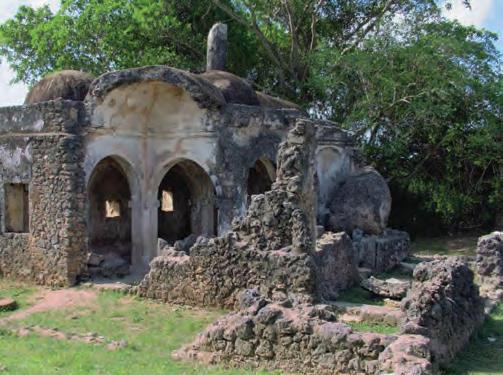

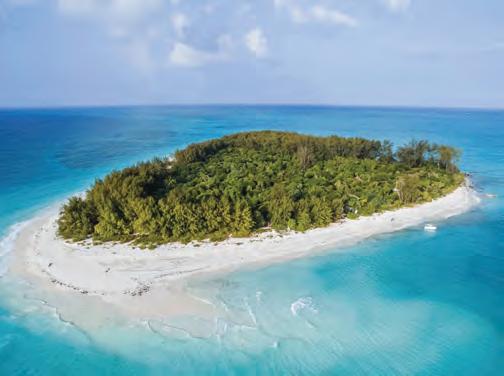
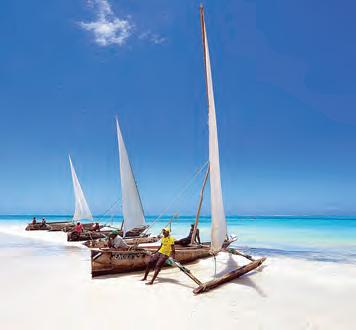
In the ninth or tenth centuries came Shirazi Persians from modern-day Iran, sailing their ancient dhows across the Indian Ocean. Chinese, Japanese, Russian and Indonesian merchants and pirates, traders and adventurers, all arrived over the centuries during which the Swahili coast was the centre of a thriving commercial civilisation, with its own language, economy and artistic traditions.
Today, reminders of the Swahili Coast’s magnificent post can be found up and down the length of Tanzania. The brassbound chests and heavy wooden doors of the Swahili Empire are found on a far island, imported originally by the Arabic slave traders who led caravans into the interior in search of fortune. On the coast itself, crumbling mosques nestle among palm trees by white beaches and Persian baths lie ruined in the remains of ancient villas.
BAGAMOYO
Bagamoyo was once the centre of slave and ivory trading. It was the last point reached by the caravans of slaves who arrived here for transportation to faraway places. Today this attractive coastal town still bears while waiting for transportation still stands, as does the tree under which they were bought and sold.
KILWA
Kilwa Kisiwani Island was once the trading centre of the Swahili Empire. The ruins of the settlement still remain and are considered to be one of the most important Swahili historical sites in East African. The famous traveller and chronicler lbn Battuta visited Kilwa in the 14th century, describing his admiration for the architecture and graceful situation of the capital city. Later the island became a trading

post for slaves travelling north from Mauritius and Mozambique. The end of the town supremacy as a trading port came when it was ransacked, ostensibly by “cannibals’’ in 1588.
from ancient Yemen who dominated the coast around archipelago, off beaten track and known to only the most discerning travellers. The island is surrounded by a barrier reef so rich in marine life it has been designated a marine park by the World Wide Fund for Nature. A tiny population of pygmy hippo lives in the remains of an old lagoon, cut off from the mainland centuries.
PEMBA
Pemba Island, rumored to have once been inhabited by a race of mythical giants, is an untouched beauty that offers an undiluted experience of island life in the Indian Ocean. The tiny number of visitors to Pemba every year means that the island has little in the way of tourist infrastructure – which for alternative travellers is the main attraction. Small guesthouses are dotted around the island, and there are a couple of upmarket diving hotels and resorts. There are many historical sites and ruins to explore on Pemba including a number of old mosques and tombs and the old town fort of Chake Chake. The Pujini ruins south-east of Chake Chake are the remnants of a fortified town built around the 13th century. There is also Ngezi Forest, a beautiful untouched rainforest and home to the Pemba Flying Fox, a giant bat!
TANGA AND PANGANI
Ruins close to the active port of Tanga attest to its importance as a trading post in the Swahili trading empire. The ruins, once a large mosque, include more than 40 tombs, Tanga
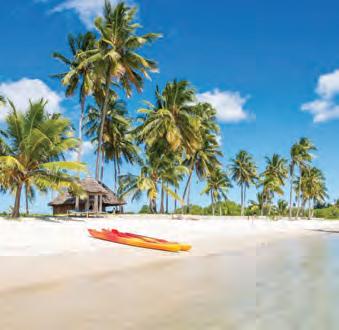
has pleasant beaches and is a convenient point from which to visit the spectacular Usambara Mountains. Just south of Tanga is Pangani, once the home of Arab slave traders, set on a lovely estuary of the Panani River.
For a small island in the southern waters of the Indian Ocean, Zanzibar has a long and unexpected history. For centuries the island has been a centre of slave and ivory trade, if not all trading, from central Africa to the rest of the world and was the world’s main producer of the highly valued clove spice. It is also the centre of Swahili language and culture. Zanzibar is the undisputed capital of the Swahili coast.
The first Europeans to encounter this vast trading network and culture around Zanzibar were the Portuguese, who arrived in the late 15th Century. The Portuguese were ousted with the help of Oman, in the mid- 16th Century, whose vast trade connections had been severed by the entrance of the Portuguese.
Zanzibar became the seat of the Omani empire, when Sultan Seyyid Said moved his capital from Muscat to Zanzibar in 1840, due largely to its economic importance in the empire and unrest at home. This was to last only 50 years until the British, keen on expanding their colonial reach, declared Zanzibar a British Protectorate. This, in turn, was to last until 1963, when the British handed power back to the Sultan in a constitutional monarchy which was itself overthrown in early 1964 in a violent revolution which established the Revolutionary Government of Zanzibar, which rules the country to this day.



Arusha National, Park, often overlooked in favour of its more famous neighbours is in fact a treasure, a rich tapestry of habitats, teeming with animals and birds. From the lush swamps of the Ngurdoto Crater to the tranquil beauty of the Momela Lakes and the rocky alpine heights of Mt Meru, the terrain of park is as varied as it is interesting. Zebras graze on the park’s red grasslands, and leopards lurk next to waterfalls in the shadowy forest. More than 400 species of bird, both migrant and resident, can be found in Arusha National Park alongside rare primates, such as the Black and White Colobus Monkey. The rewarding climb up Mt Meru passes through forests of dripping Spanish moss and rises to open health, spiked with giant lobelia plants. Delicate klipspringer antelope watch the progress of hikers from the top of huge boulders, and everlasting flower cling to the alpine desert underfoot. Once astride the craggy summit, the reward is a sight of neighbouring Mt Kilimanjaro, breathtaking at sunrise. The best time to visit Arusha National park is during the dry season from July to November, or after the short rains from December to March. The best months to the climb Mt Meru are June throughout to February, with the best views of Mt Kilimanjaro seen from December to February. The park lies just 25 km east of Arusha and is a rewarding day trip from Arusha or Moshi.
Each of Tanzania ‘s national parks offers something unique- from the alpine landscapes of Kilimanjaro to the bush meeting the sea in Saadani and with excellent transport links within Tanzania, it is easy to combine several national parks in one safari.

Each year more than six million hooves pound the legendary Serengeti’s endless plains. Triggered by the seasonal rains, more than a million wildebeest rutting season is a frenzied three week long bout of territorial conquests and mating, followed by survival of the fittest as the 40km long columns plunge through crocodile infested waters on the annual exodus north. Replenishing the species is the brief population explosion that produces more that 8,000 calves a day before the 1,000 km pilgrimage begins again. Tanzania’s first and most famous park, the Serengeti is renowned for is wealth of leopard and lion. The vast reaches of the park are a hiding place for the endangered black Rhino and place for the vulnerable cheetah, alongside the Serengeti’s thousands of other diverse species, from the 500 varieties of bird to 100 different types of dung beetle. After the rains, the Serengeti’s magical golden horizon is transformed into an endless green carpet, flocked with wild flowers, the famous plains are interspersed with wooded hills, towering termite mounds,monumental rocky kopjes, and rivers lined with elegant acacia trees. To search for the at- times elusive wildebeest migration, visit the Serengeti from December to July to see predators, June to October are the best months. For the best chance of finding the migration, allow a minimum of three days, longer if possible.

During Tarangire’s dry season, day after day of cloudless skies seem to suck all moisture from the landscape, turning the waving grasses to a platinum blonde, brittle as straw. The Tarangire river is a mere shadow of itself just a trickle of water choked with wildlife, thirsty antelope and elephant have wandered hundreds of parched kilometres to Tarangire’s permanent waters source, Herds of three hundred elephants dig in the damp earth of the riverbed in search of underground springs, while wildebeest, zebra, buffalo, and gazelle mingle with rare species such as eland and oryx around each shrinking lagoon. Python climb into the shade of the trees that line Tarangire’s massive southern swamps and hang there like giant malignant fruit, coils, neatly arranged over the branches in a perfect sphere. Tarangire in the dry season enjoys the greatest concentration of wildlife outside the Serengeti eco-sytems. Tarangire’s huge herds of elephant rival the parts gigantic, squat baobab trees as its most celebrated feature – ancient matriarchs, feisty young bulls and tin, stumbling calves are ever present to fascinate visitors with Tarangire for wildlife viewing or walking is the dry season, from June to October are recovering strongly from ivory poaching during the 1980s and remain the largest population in East Africa.

The Udzungwa Mountains are almost unearthly. An enchanted forest of leaf glades, freckled with sunshine, where fungus, lichen, moss and ferns ingratiate themselves into every damp crevice, it is at once both vivid detail and larger than life. A new variety of African violet was discovered in the shelter of a 30m high tree. It is a hothouse, nurturing species found nowhere else on earth, a secret. Of its six types of primate, two are endemic- the Iringa Red Colobus monkey and the Sanje Crested Mangabey, not discovered until 1979. Four previously unknown birds, including the Rufous- Winged Sunbird and a new species of the partridgelike francolin, make this Tanzania richest forest bird habitant bird conservation areas on the continent. One of East Africans great forest this undisturbed habitant undoubtedly has new treasures yet to reveal. A link in the chain of Africans eastern arc mountains, Udzungwa is made for hiking and climbing on trails through the rainforest and along the escarpments. The plateau is a natural tower top, with views of sugar plantations against a patchwork of grassland and mountain forest extending over 100km. But the center piece is the Sanje River, which reinvents itself into a spectacular waterfall, plunging 17m through the forest to land in a mist in the valley below. Visit Udzungwa year around, but be prepared for it to rain at any time.
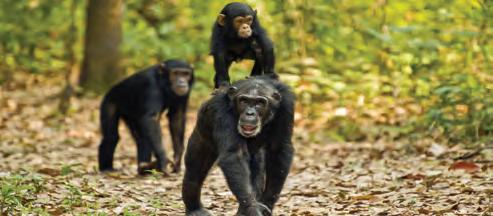
Gombe Stream is the smallest of Tanzania’s national parks a thin strip of ancient forest set amidst mountains and Tanganyika .Chimpanzee are Gombe Streams main attraction, they are the stars of the world’s chimpanzee community, made famous by the pioneering British researcher Jane Goodall, whose years of constant observation since 1960 have brought to light startling new facts about mankind’s closest cousins.
Chimps are as individually unique as humans and no scientific expertise is needed to distinguish the different characters in the cash. The majority of the park mammals are primates, most of them forest species and addition to the famous chimpanzees, visitors could be lucky enough to see blue or red- tail monkeys, carnivores are rarely seen in the forest, making safari, or a swim in one of the streams. The best time to find chimpanzees at Gombe is during the wet season from February to June and November to December. The dry months of July to October and December to January are better for photo opportunities.

Jozani Forest, a conservation project aimed at preserving some of the last indigenous forests on the island, lies at the heart of Jozani – Chwaka National Park, straddling a narrow belt of land linking the east and west coast of the island. It is the largest area of mature indigenous forest on Unguja (Zanzibar Island), and home to possibly the island’s most famous and photographed resident, the Zanzibar Red Colobus Monkey. The diverse range of natural habitats to be found in the national park supports a variety of rare, endangered and endemic species, including the Ader’s Duiker, as well as Monkeys, shrews, and chameleons as well as more than 100 species of brightly coloured butterflies and around 83 species of birds, South of the forest, a thin long creek juts in from the sea, and is lined with mangrove trees. A marvellous boardwalk has been constructed, so you can easily and harmlessly go deep into the mangrove to experience this unique ecosystem.
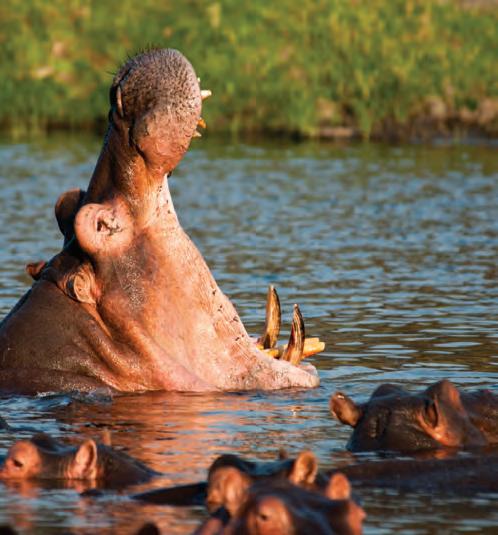
Katavi National Park in western Tanzania is remote and wild, a destination for the true safari aficionado. The name of the part immortalizes a legendary hunter, Kabati, whose spirit is believed to possess a tamarind tree ringed with offerings from local begging his blessings. Despite being Tanzania’s third – largest park, katavi sees relatively few visitors, meaning that those guests who arrive here can look forward to having this vast untouched wilderness to themselves. The park’s main features are the watery grass plain s to the north, the palm- fringed Lake Chada in the South-East, and the Katuma River River. Katavi boasts Tanzania’s greatest populations of both crocodile and hippopotamus. Lion and leopard find prey among the huge populations of herbivores at katavi impala, eland, Topi, zebra and herds of up to 1,600 buffalo wander the short grass plains. The rare, honey- coloured puku antelope is one of the park’s richest wildlife viewing rewards, A kaleidoscope of birds flit across the riverbanks swamps and palm groves while flotillas of pelican cruise the lakes and elephants graze waist – deep in the marshlands. Katavi is best visited in the dry season between May and October and December and February.
The great mountain of Kilimanjaro is a metaphor for the compelling beauty of East Africa. Rising in absolute isolation, at 5,895m(19,336ft), Kilimanjaro is one of the highest walk able summits on the planet and a beacon for visitors from around the world.just three degrees south of the equator, Kilimanjaro’s great peaks of kibo and Mawenzi are nonetheless covered all year round with snow and ice, Most reasonably fit and properly guided climbers can experiences the triumph of reaching the crater rim with little more than a walking stick, warm clothing and determination .Those who reach Uhuru point, the lip of the crater (Kilimanjaro) is a dormant, but not extract, volcano, will have earned their climbing certificates and their memories. There is however so much more to Kilimanjaro than the summit. A journey up the slopes takes visitors on a climatic world tour, from the tropics

to the arctic. The grassy and cultivated lower slopes turn into lush rainforest, inhabited by elusive elephant, leopard, buffalo and antelope, Higher still, health and moorland, covered with giant heather, becomes a surreal alpine desert and, finally, there is ice, snow and the biggest view on the continent. December to February is the warmest and clearest time to visit, with July to September being colder but also dry. It is wet in the rainforest from April to June and during November. Staying on the island, though the best time to go is in the dry season, from July to February, when there is little chance that the forest will be flooded.

Kitulo, which has only fairly recently become a fully protected national park, is situated on the Kitulo plateau, which forms part of Tanzania’s southern highlands. The area, with is known locally as the “Garden of God” provides a home for a wide variety of wildflowers such as balsams, bellflowers, honey- peas, irises, lilies and orchids.

Tucked below the majesty of the Rift Valley wall, Lake Manyara National Park consists of a thin green band of forest, flanked by the sheer 600m high red and brown cliffs of the escarpment on one side and by the white- hot shores of an ancient soda lake on the other. This wedge of surprisingly varied vegetation supports a wealth of wildlife, nourished by the streams flowing out of the escarpment base and waterfalls spilling over the cliffs. Acacia woodland shelters the park’s famous treeclimbing lions, lying languidly among the branches in the undergrowth or dozing in the dry riverbeds is the country dense populations of buffalo and elephant. Deep in the south of the park, hot springs bubble to the surface as hippo wallow near the lakes sedge lined borders. The part’s dazzling variety of birds includes thousands of red- Billed Quelea flitting over the water, pelicans, cormorants and the pink streaks of thousands of flamingos. Manyara is the perfect location for an active safari- canoeing on the lake or mountain biking and abseiling outside the park’s border. The dry season (July to October) is best for large mammals, while the wet season (November to June) is best for bird watching, waterfalls and canoeing.
MANYARA IS THE PERFECT LOCATION FOR AN ACTIVE SAFARI – CANOEING ON THE LAKE OR MOUNTAIN BIKING AND ABSEILING OUTSIDE THE PARK’S BORDERS.

Like its northerly neighbour Gambe, Mahale Mountains National Park is home to some of the last remaining wild chimpanzees in Africa. Around 1,000 of these fascinating animals roam the isolated rainforest of Mahale, a chain of dramatic peaks draped in lush vegetation falling to Lake Tanganyika’s beaches far below. Visitors are led on guided walks in search of the chimpanzees, following clues such as the previous night’s nets high in the trees, or scraps of half eaten fruit and fresh dung. Once found, the chimpanzees clean each other’s glossy coats in concentrated huddles, squabble nosily or bound effortlessly into the trees, swinging nonchalantly through the vines. In addition to a hike on the trail of the chimpanzee, visitors can trace the Tongwe people’s ancient pilgrimage to the mountain spirits, trekking through enclaves of rainforest to grassy ridges chequered with alpine bamboo. After a hot walk in the forest, the clear waters of the lake, home to 250 species of fish, beckon for a refreshing swim. The best time for forest walks in Mahale is during the dry season, from May to October. The light rains of October and November present no real obstacle to visitors.

Forming the northern borders of African biggest game reserve, Mikumi National Park is the most popular of Tanzania’s national parks, the most accessible part of a 75,000 square kilometer (47,000 square mile) wilderness that stretches almost to the shores of the Indian Ocean. The woodland is the favourite haunt of the lion, sometimes perching high in the trees to keep their feet dry from the sticky black mud of the wet season. Observation towers above the tree line allow panoramic views of the plain laid out below, home to formidable herds of buffalo. Mikumi’s elephants are more compact than those in the rest of the country, but still a formidable sight when viewed close up. The rains swell the park’s population of birds to more than 300 species as European migrants seek refuge in Mikumi, joining resident stars like the Lilac – Breasted Roller, Mikumi road network provides visitors with easy game viewing drives and there are hippo, zebra, giraffe, hartebeest and wildebeest are in abundance. The part is accessible all year round.

Set below the verdant slopes of the spectacular Usambara and pare Eastern Arc mountain ranges and overseen by the iconic snow –capped peak of Kilimanjaro, Mkomazi is a virgin breathtaking beauty exhibiting unique natural treasures and an immense sense of space. All this adds to the fulfilment of enjoyment visitors can expect at Mkomazi National Park. Everyday thousands of people pass within a few kilometres of Mkomazi on one of Tanzania’s busiest highways. These and northern circuit safari – goers are invited to discover the treasures of this wedge of hilly semi- arid savannah – home of large herds of giraffe, eland, hartebeest, zebra, buffalo and elephant. Mkomazi is a vital refuge for two highly endangered species, the charismatic Black Rhino and sociable African Wild Dog, both of which were successfully reintroduced in the 1990s. Nomardic by nature, African wild Dog might be seen almost anywhere in the part, but black rhino are restricted to a fenced sanctuary, ensuring their safe keeping for future generations enjoyment and prosperity.
Ruaha is a park where game viewing can begin the moment the plane touches down. A pair of giraffe may race beside the airstrip, with a line of zebra parading across the runway in their wake as nearby protective elephant mothers guard their young under the shade of a baobab tree. Wildlife in Ruaha is


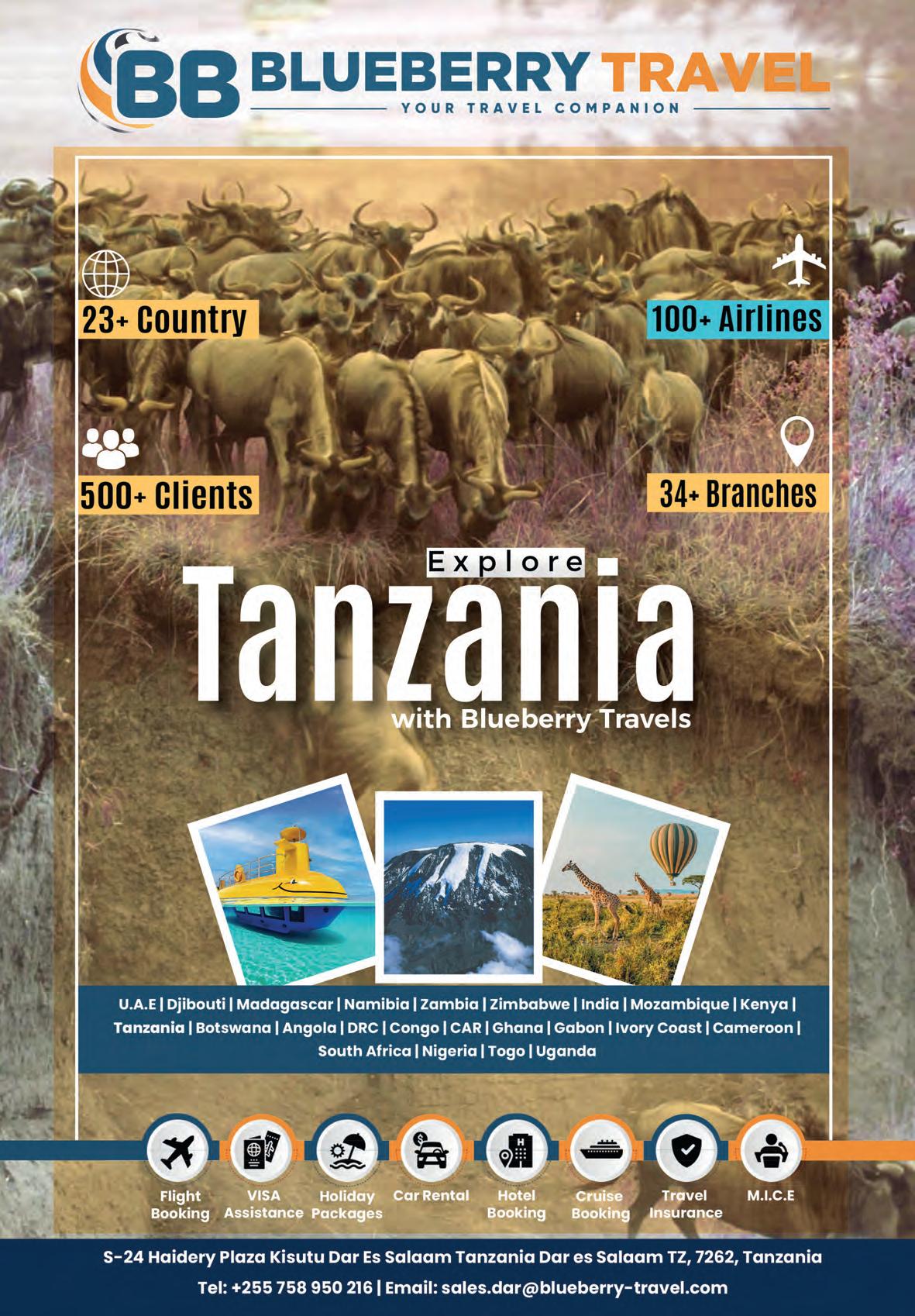

concentrated along the great Ruaha River that is the park’s lifeblood. The river is a torrent after the rains, dwindling to a few rivers that is the park’s lifeblood. The river is a torrent after the rains, dwindling to a few precious pools of water surrounded by a sweep of sand in the dry season. Waterbuck, Impala and the word’s most southerly Grants Gazelle risk their lives for a sip of water. The shores of the Ruaha are a permanent hunting ground for lion, leopard jackal, hyena and the rare and endangered African Wild Dog. Ruaha’s 8,000 elephants are recovering strongly from ivory poaching during the 1980s and remain the largest population in East Africa. Ruaha is the only protected area in which the flora and fauna of eastern and southern Africa overlap, leading to fascinating combinations of wildlife – both Greater and Lesser Kundu live here as do sable and Roan Antelope.

Rubondo Island is tucked into the corner of like Victoria, the words second largest lake, an inland sea sprawling between three countries. Rubondo provides protection for fish breeding grounds, while tilapia and the rapacious nile perch, some weighing more than 100kg, tempt
recreational fisher folk with challenging sports fishing and world record catches. But Rubondo is more than a water wonderland. Deserted sandy beaches nestle against a cloak of virgin forest. Papyrus swamps host the secretive sitatunga, a shaggy aquatic antelope, and the dappled bushbuck. “RUBONDO IS A BIRDER’S PARADISE, WITH THE MALACHITE KINGFISHER’S AZURE BRILLIANCE COMPETING WITH THE PARADISE FLYCATCHERS GLAMOROUS FLOWING TAIL” Rubondo is a bird watchers paradise, with the Malachite kingfisher’s azure brilliance competing with the paradise flycatchers glamorous flowing tail. Rubondo is home to African Fish Eagles and is a global stopover for hundreds of migratory birds, as well as a sanctuary for sweet smelling wild jasmine and 40 different species of orchid. Ninety percent of the island is covered with humid forest, the remainder ranges from coastal grassland to lakeside papyrus beds. A number of indigenous mammal species- hippo, bushbuck, genet, and mongoose – share their protected habitat with introduced species such as chimpanzee, elephant, and giraffe. Rubondo’s wild flowers are there from November to March. For migratory birds, visit December to February. The island’s climate is at its most pleasant from June to August.
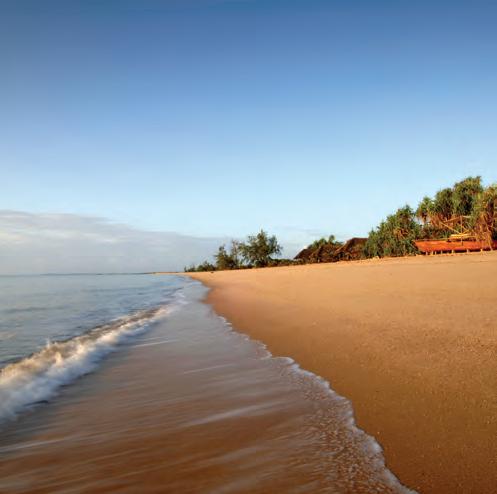
Sadaani National Park is the perfect union of beach and bush. Located just 70 km north of Bagamoyo and immediately accessible by paved road from Dar es salaam, Saadani has recently become a fully protected national park and is a popular day – trip from beach resort scattered along Tanzania’s northern coast. The Wami river, which passes through Saadani National park and empties into the Indian Ocean, hosts a large population of hippos, crocodiles, flamingos, and many other large bird spices. Elephants have been rumoured to be seen bathing and playing on Saadanis beach, especially in the early hours of the morning. A good choice for visitors in Dar es salaam or Zanzibar who don’t’ have time for longer safaris to visit more remote parks around the country, Saadani is easily visited for a day trip or over a weekend. There are hippo, zebra, giraffe, hartebeest and wildebeest and wildebeest in abundance. The park is accessible all year round.



THE LAKES OF TANZANIA ARE VARIED IN WHAT THEY OFFER TO THE POTENTIAL VISITORS. ON SODA LAKES LIKE LAKE MANYARA AND LAKE NATRON, WILDLIFE GATHER ON THE DESOLATE SALT FLATS AND SHIMMERING VIEWS REMINDS OF ONE OF A LUNAR LANDSCAPE WHICH AT SUNSET DESCENDS INTO SHADES OF VARIOUS PASTELS.”
The soda lakes are alkaline and brackish, home to large populations of flamingos, storks, and herons. Birdwatching and game viewing are popular activities, but must be done from a distance as the soda flats along the lake shore are difficult to walk or drive upon. Still, a visit to the soda lakes of Tanzania is an unforgettable experience. Game still thrives along their shores and the sheer
ethereal beauty of the water, coloured silver and white by the mineral deposits, is an unforgettable part of the African experience.
Towns and industry take full advantage of the freshwater lakes in the region, the largest of which is Lake Victoria in the northwest of the country. Fishing has long been a mainstay of residents who live around the natural resources, and transport across Tanzania’s many African borders is also an economically profitable activity. Because of the easy supply of freshwater irrigation, Tanzanians also farm the areas around freshwater lakes extensively, and both subsistence and cash crops are grown around their shores.
LAKE EYASI
A seasonal shallow endorheic salt lake on the floor of the Great Rift Valley at the base of the Serengeti Plateau,
the area around Lake Eyasi is home to the Hadzabe people, some of the last remaining hunter-gatherers on the continent. The Hadzabe have inhabited the acacia forests and scrubland around Eyasi for over 10,000 years and visits to nearby clans can be arranged through local guides in the area.
LAKE MANYARA
Situated inside Lake Manyara National Park, the lake is home to large numbers of flamingos, pelicans, storks and other plentiful bird life, as well as hippos that can be observed at close range. Hot springs trickle into the shallow waters and during the dry season the lakeshore retreats to leave striking white soda deposits in its wake.
LAKE NATRON
A soda lake at the base of the active Ol Donyo Lengai volcano, the area around Lake Natron is often described as having a desolate and almost lunar







beauty. Lake Natron is found in the northern part of Tanzania. Nearest towns to Lake Natron are Arusha in Tanzania and Magadi in Kenya. Walks around the lake, and to the streams and waterfalls along the nearby escarpment, make for a fantastic adventure off the beaten track. It is the most important breeding site for Lesser Flamingos in the world.
LAKE NYASA
Set against the stunning background of the Livingstone Mountains, and called the ‘Calendar Lake’ because it is 365 miles long and 52 miles wide, the lake shores form the border with Mozambique and Malawi where it is called Lake Malawi. The towns of Kyela, Itungi, and Matema make good bases from which to visit the lake, which contains almost a third of the known cichlids (a species of freshwater tropical fish) in the world.
LAKE TANGANYIKA
The waters of Lake Tanganyika, the
longest and, after Lake Baikal in Siberia, second deepest freshwater lake in the world, contains one of the richest concentrations of fish found anywhere. More than 300 different species live within it. Many are endemic to the lake but are more frequently seen, worldwide, in home aquariums. Gombe National Park and Mahale Mountains National Park both border the lake’s shores.
LAKE VICTORIA
By far the largest lake in Africa and, the second largest freshwater lake in the world. Lake Victoria’s fishing industries and the agricultural land around its shores has made the area an economic centre of Tanzania. Although fishing is a traditional mainstay of the region, coffee and cotton production are increasing the economic importance of the area, especially in Mwanza. For visitors, attractions include trips to Rubondo Island National Park and participating
in various cultural tourism programmes on offer around the area. The lake has some spectacular varieties of freshwater tropical fish, many of which are exported to aquariums all over the world. Its shores are peaceful and pristine, and offer a quiet alternative to the constant movement and bustle of a safari itinerary. Gently sloping hills lead to the soft blue waters of the lake, as fish eagles swoop at dawn and dusk eager for the small fish that swim in Victoria’s rich waters. Bird watching and fishing trips make popular excursions and boating trips and hikes can be arranged.
Visitors to the freshwater lakes can embark on fishing trips, hikes and go swimming, and enjoy the rich bird- and fish-life that surrounds the water. In many populated areas, cultural tourism programs are also popular.
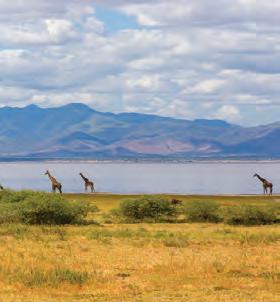

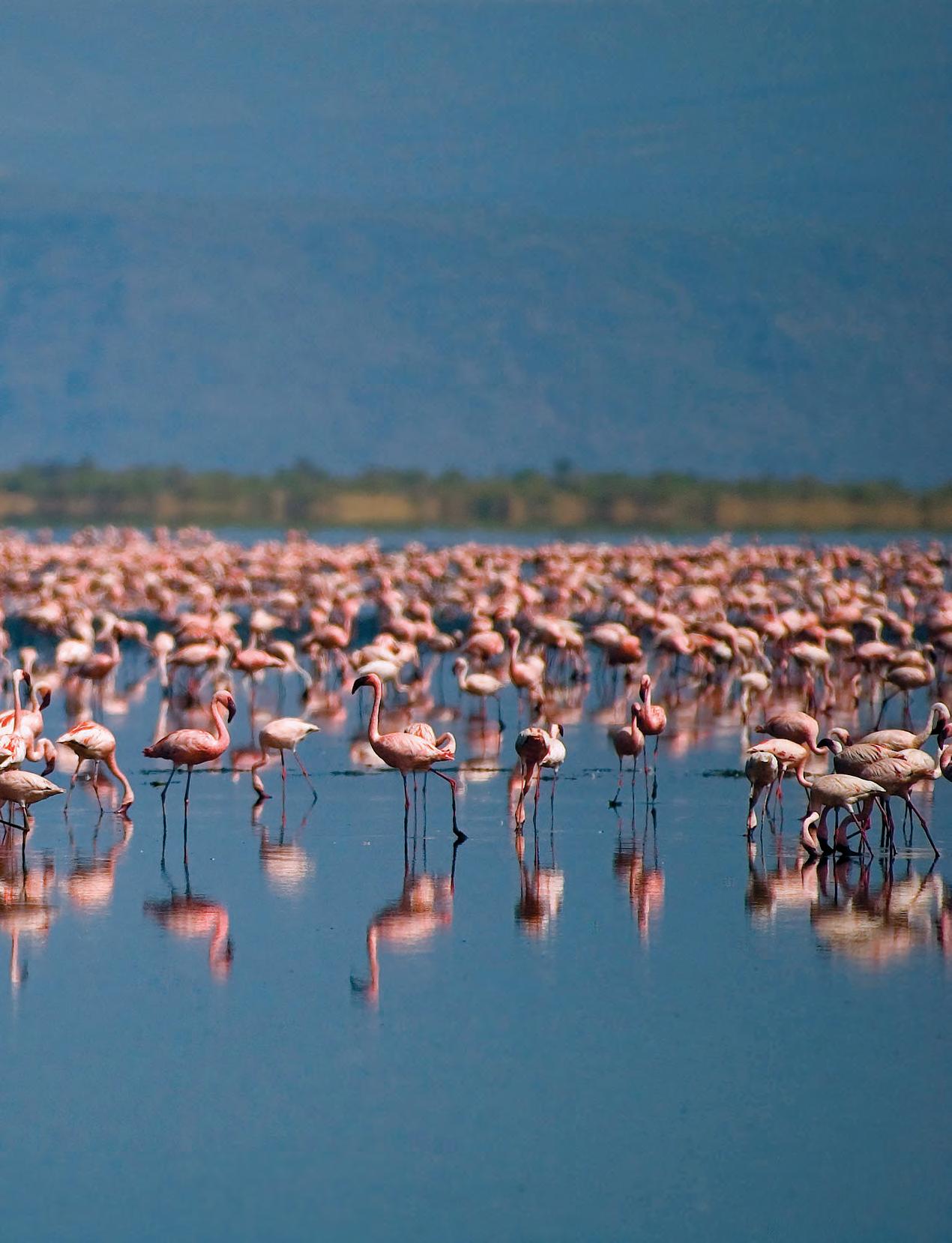





The first company to set a balloon aloft over the Serengeti, we have set the bar high for an exceptional adventure, delivered with safety and with our passengers’ experience as a priority. We take an active role in ensuring ballooning standards are rigorously maintained.
Contact Person : Pascal Kirigiti
Tel: +255 767 883 731
Email: pascal@balloonsafaris.co.tz
Website: www.balloonsafaris.com

Provides adventure tour services and over the years evolved into Tanzania's largest Kilimanjaro outfitter and safari operator. With well-maintained vehicles and 8 accommodation facilities under Zita Tanzania Wild Camps.
Contact Person: Nancy Ngotea
Tel: +255 784 451 000
Email: zainab@zaratours.com
Website: www.zaratours.com
AFRICAN ADVENTURE SPECIALISTS

A premier safari company in East Africa that curates and plans luxury trips for individuals, couples, families and small groups to see incredible wildlife and pristine sandy beaches of East Africa.
Contact Person: Andrew Kitema
Tel: +254 717 629 661
Email: safaris@africanadventure.co.ke
Website: www.africanadventure.co.ke

African’s Warm Heart, Malawi, is beating faster now and the legendary welcome is there for all who wish to experience the unrivalled combination of Lake, Landscape, Wildlife & Culture in one of Africa's most beautiful and compact countries.
Contact Person: Michael Chigaga
Tel: +99 956 8259
Email: michael.chigaga@visitmalawi.mw
Website: www.malawitourism.com

Located in a leafy suburb of Arusha, Tanzania’s safari capital! Over the years, this hotel has earned a reputation of excellence in service delivery and remains a favorite choice for guests on business or leisure travel.
Contact Person: Yustina Mallya
Tel: + 255 699 799 871
Email: info@theafricantulip.co.tz
Website: www.theafricantulip.co.tz

A nature-inspired paradise set on over 60 acres of land overlooking the Ngorongoro Forest. The lodge was developed with a great deal of passion for nature. Over 40,000 indigenous trees were planted to rejuvenate the land to its original green and lush history.
Contact Person: Yustina Mallya
Tel: + 255 699 799 871
Email: sm@theretreatatngorongoro.co.tz
Website: www.theretreatatngorongoro.co.tz

A chain of 4-star boutique tented camps. We have total of 5 camps in different location (Tarangire, Ngorongoro, Serengeti Central, Serengeti North). We aim at serving mid-range to high end clients and fulfill their memorable adventure across Northern Tanzania.
Contact Person : Gabriella Mambo
Tel : +255 765 496 237
Email: marketing@angatacamps.com Website: www.angatacamps.com

Offers unparalleled adventure in East African countries. Our meticulously crafted safaris and beach holidays blend wildlife encounters with stunning coastal getaways, creating unforgettable experiences.
Contact Person : Exaud Marandu
Tel : +255 783 714 288
Email Address: info@utopia-safaris.com Website: www.utopia-safaris.com/

Offers luxurious safari camps across Tanzania's most iconic wildlife destinations, With 6 tented camps and a lodge, we provide an immersive and unforgettable African experience, blending world-class comfort with Tanzania's stunning natural beauty and warm hospitality.
Contact name: Peter Robert
Email: info@acaciacollections.com
Tel: +255 710 823 384
Website: www.acaciacollections.com
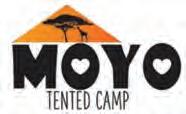
Nestled in the Seronera area in the Central Serengeti, 20kms from the Seronera Airstrip. We face the Warangi River which provides a water source for the best year around game viewing along with breathtaking sunsets.
Contact Person: Helen Nathan Laizer
Tel: +255 785 467 173
Email: Info@moyotentedcamp.com
Website: www.moyotentedcamp.com

Has become a premier provider of authentic African safari experiences in Tanzania. Our dedication to customer satisfaction and employee well-being has allowed us to create unforgettable journeys filled with happiness, learning, and cherished memories.
Contact name: Peter Robert Tel: +255 710 823 384
Email: info@goshenisafaris.com
Website: www.goshenisafaris.com
TALII NASI SAFARIS

A specialist and locally owned tour operator registered in Tanzania. We are proud to offer our clients with a very wide range of accommodation options and safari providers, from adventurous tented camps to luxurious safari lodges.
Contact Person: Victor Rogath
Tel: +255 715 525 371
Email: info@taliinasisafaris.com
Website: www.taliinasisafaris.com
Are carefully crafted to deliver a personalized adventure to exceed your expectations and our commitment to service, together with our knowledge and absolute passion for Africa especially Tanzania, We ensure that our clients have memorable, seamless and hassle-free holidays.
Contact name: Athumani Njiku
Email: info@soloadventure.co.tz
Tel: +255 710 823 384
Website: www.soloadventures.co.tz

Has continued to redefine odds by maintaining reliable and affordable services within the country and across the region. With 26+ years in the industry we have grown to become one of the most reputable airline in East Africa and Africa at large.
Contact Person: Hillary Mremi
Tel: 022 219 1000
E-mail : contactcentre@precisionairtz.com
Website: www.precisionairtz.com

A tour company based in Zanzibar. We are a reliable partner and a very flexible holiday organizer for both Safaris & Beach Holiday packages (accommodation, flights/ ferry tickets and all tours and ground transfers).
Contact Person: Pili Jumanne
Tel: +255 777 206 694
Email: info@suntoursznz.com
Website: www.suntoursznz.com

Official authority responsible for overseeing, promoting, developing, and marketing the vibrant tourism sector in the enchanting archipelago of Zanzibar.
Contact Person : Mauli Kh Foum
Tel: +255 659 379 618
Email: marketing@zanzibartourism.net
Website: www.ztite.zanzibartourism.go.tz
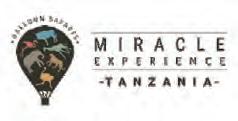
Experience a fantastic balloon safari over the Serengeti and Tarangire
National Parks and the private Grumeti Singita Reserve, enjoying breathtaking scenery and uninterrupted views as you embark on a magical journey.
Contact Person: Sammy Sandhu
Tel: +255 789 300 009
Email: balloon@miracleexperience.co.tz
Website: www.miracleexperience.co.tz/

Located at Northwest Serengeti (Banagi 8), 20Km from Seronera Air Strip and 600 Meters from Retima Hippo pool lies Sueños de África Luxury Camp, a perfect illustration of Wild Luxury Redefined.
Contact Person: Pasia Tsingay
Tel: +255 756 888 930
Email: info@suenosdeafricaluxurycamp.com Website: www.suenosdeafricaluxurycamp.com

Located at Gangilonga, Iringa – Tanzania, a serene retreat for travellers on business or leisure activities. Come, stay away from the hustle and bustle of the city. If you crave to elegance and comfort, be good to yourself.
Contact Person : Nico Balinda
Tel : +255 757 697 989
Email: info@mountroyalvilla.com Website: www.mountroyalvilla.com

Located on the outskirts of Karatu, an ecofriendly luxury lodge located next to the famous Ngorongoro Crater and aims to harmonize with the environment through its natural unobtrusive design and positioning.
Contact Person: Asheri Kiisay
Tel: +255 784 465 556
Email: info@pamojaafricatz.com Website: www.pamojaafricatz.com

A Schedule and Private Flying Safari Airline‚ with easily available connections for tourist to and through our hubs in Dar Es Salaam & Arusha to the safari circuits in the Serengeti and onwards to Zanzibar‚ Mombasa‚ Kenya.
Contact Person: Shabbir Evrahim
Tel: +255 782 354 450
Email: customerservice@flightlink.co.tz Website: www.flightlink.co.tz/en

A luxurious Boutique hotel in Stone Town, Kisiwa House is noted for its elegant blend of Zanzibar décor and gracious Swahili hospitality. Located on a quiet street in the heart of Zanzibar historical centre within easy walking distance of famous landmarks, museums, antique shops and restaurants.
Contact name: Miraji Ally Saidi
Email: info@kisiwahouse.com
Tel: +255 772 789 272 Website: www.kisiwahotelszanzibar.com
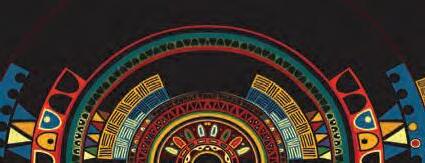

Nestles on the northernmost edge of Pemba Island, just 30 minutes flight from Zanzibar. A place where luxury meets true freedom, simplicity, acceptance and love. It is a place where you will connect with something larger than yourself, this is your vacation of purpose.
Contact Person: Bella Balkis Abdulla
Tel: +255 773 244 442
Email: info@theaiyana.com
Website: www.theaiyana.com

Offers a range of hospitality services and safari packages at affordable rates across Zanzibar and Tanzania. Our excellent relationship with all our Agents and Suppliers in tourism industry is what makes us to be “Your Perfect Ambassador”.
Contact Person: Nice Martha Mbowe
Tel: +255 658 000 076
Email: info@niceadventuresafari.com
Website: www.niceadventuresafari.com
CAMPS AND LODGES

A Collection of unique and luxury tented camps at Serengeti National Park. We provide all types of accommodation for anyone who needs to have the maximum relaxation during a hard day of wildlife exploration inside the park.
Contact Person: Julieth Ishengoma
Tel: +255 767 888 024
Email: sales@heritagecampsandlodges.com
Website: www.heritagecampsandlodges.com

A collection of two Camps, located in the renowned Serengeti National Park. Baobab Central Serengeti Camp in the heart of the park, and Baobab Mara Luxury Camp in northern part of Serengeti. The Camps offers comfortable and eco-friendly tented accommodations.
Contact person: Neema Kombe
Tel: +255 784 737 204
Email: sales@baobablodges.com
Website: www.baobablodges.com


Experience the pinnacle of helicopter services with us. Whether you seek breath-taking aerial views, luxurious travel, or swift emergency assistance, we deliver exceptional service across Tanzania and adjacent countries.
Contact Person : Nembris Shange
Tel: +255 745 618 648
Email: info@stateaviation.co.tz
Website: www.stateaviation.co.tz

We offer Safaris to the destinations of your choice across Tanzania and Zanzibar, Flight Booking and Air Ticketing, Hotel Reservations, Airport pickup & drop-off, Photographing and Safaris Documentation, Car Rental and Tour Guiding Services.
Contact Person: Dorosella Bishanga
Tel: +255 744 810 345
Email: info@skylinetours.co.tz
Website: booking@skylinetours.co.tz

Sunset Hotels are the Tanzanianowned hotel group, proudly presenting Iringa Sunset Hotel at Gangilonga Hills, offering serene highland views near Iringa, and Forest Sunset Hotel on the Uluguru Mountains in Morogoro.
Contact Person: Lilian Kilave
Tel: +255 679 240 552
Email: Info@Iringasunset.Com
Website: www.iringasunset.com

Offers personalized and immersive travel experiences in Tanzania. Specializing in adventure, cultural, and sustainable tours, we cater to families, solo travellers, and groups.
Contact Person: Amedeus Ndakidemi
Tel: +255 654 711 714
Email: info@t-smartafricantours.tz
Website: www.t-smartafricantours.tz

The one stop provider for all your travel needs and requirements. We label ourselves as leading, innovative, and highly efficient and look forward to demonstrate these qualities at the earliest possible chance.
Contact Person: Aliasgar Kakal
Tel: +255 788 531 121
Email: ali@bookandflytz.com
Website: www.bookandflytz.com
AFRICAN PRINTEMPS

We create a custom itinerary for you, wherever in Tanzania. Combine sightseeing, culture, history, shopping, and leisure with your meeting or incentive vacation overseas.
Contact Person : Hoza Mbura
Tel : +255 679 831 541
Email: info@africanprintemps.com
Website: www.africanprintemps.com

New property located on 15 acres of coffee farm sailing like an ark along with the primeval of the Ngorongoro Crater conservation area which is a world heritage site in volcanic high land of Tanzania.
Contact Person: Gerard Hhando
Tel: +255 627 835 009
Email: info@hhandocoffeelodge.com
Website: www.hhandocoffeelodge.com
HABITUS

set out to provide unique and best offers in tourism and transportation industry that is reliable and value for money services for wildlife tourism, Cultural tourism, excursion, car rental and lease services.
Contact Person: BUKE ZEGERA
Tel: +255 767 888 024
Email: info@habitus.tz
Website: www.habitus.co.tz

We offer diverse and customized travel services, prioritizing client satisfaction and quality. Having a quality supervision ensures exceptional experiences to our clients, hence making one among the best performing tour operator in Tanzania.
Contact Person: Blanca Adrian Shayo
Tel: +255 744 268 869
Email: marketing@maramatta.com
Website: www.maramatta.com

Passionate about showcasing the beauty and diversity of Tanzania's natural and cultural attractions. We offer a range of tours that cater to different interests and budgets, including wildlife safaris, cultural tours, mountain climbing, and beach vacations.
Contact Person : Irene Mathew Ndakidemi
Tel : +255 781 712 082
Email : papageisafari@gmail.com
Website : www.papageitours.com

In the heart of Morogoro region, nestled amidst natural habitat, our beautiful resort provides tranquillity away from the chaos of urban life. Indulge in relaxation with our expansive swimming pool and dedicated children’s area, ensuring a refreshing escape for all.
Contact Name: Edga Mwambene
Tel: +255 768 164 740
Email: ask@campatupele.com
Website: www.Campatupele.com
MASAILAND SAFARI AND LODGE

A four-star lodge situated at a hilltop in Arusha with 54 rooms. We are happy to introduce our new property
Masailand Coffee Lodge in karatu with 18 rooms a few kilometers away from Ngorongoro (18kms), Lake Manyara (27kms).
Contact Person: Upendo S. Molla
Tel: +255 769 042 033
Email: marketing@masailandsafari.com
Website: www.masailandsafari.com

Specializes in unforgettable adventures across East Africa, offering tailored tours that showcase the region's stunning landscapes, diverse wildlife and breath-taking beauty of Tanzania and beyond.
Contact Person: Adam Kawa
Tel: +255 672 723 100
Email: adam.kawa@velamsafaris.com
Website: www.Velamsafaris.Com




Located in Arusha, hosts meetings, conventions, exhibitions, weddings, gala dinners, concerts, featuring 28 flexible meeting halls up to 1350, and JNICC in Dar es Salaam with 18 meeting halls and capacities up to 1001 equipped with modern ICT facilities.
Contact Person: Linda Ernest Nyanda
Tel: +255 739 351 518
Email: Iinda.nyanda@aicc.co.tz
Website: www.aicc.co.tz

Marine Reserves encompass distinct areas within the ocean, rivers, natural ponds, and lakes that have been legally designated to establish robust management measures aimed at conserving, preserving, and restoring biodiversity and ecological systems.
Contact Person: Davis Mpotwa
Tel: +255 655 620 998
Email: davis.chrispin@klicl.co.tz
Website: www.marineparks.go.tz

We emphasize cultural experience, heritage, arts, and lifestyle of Maasai from Tanzania, East Africa. The event provides an opportunity for visitors to witness and experience the most prominent Africans’ traditional celebrations, performances, music, dance, rituals and offering insights into Maasai local customs, beliefs, and practices.
Contact person: Said Rukemo Tel: +255 714 363 751
Email: info@maasaiglobalfestival.com Website: www.maasaiglobalfestival.com



Consortium that brings together founders, coordinators and all major cultural tourism stakeholders to address challenges that face them and to tap all readily available opportunities that the latter can benefit and sustain cultural tourism for present and future generation while meeting visitors’ satisfaction.
Contact Person: Straton Ngoti
Tel: +255 679 011 151
Email:tanzaniasutainableculturaltourism@gmail.com Website: www.tanzaniasustainableculturaltourism.org
TLTO

A leading tourism trade association in Tanzania, representing over 200 of the most experienced and professional local Tour Operators. Our members are committed to providing the highest quality of services to their clients and adhere to a strict code of conduct.
Contact Person: Emmanuel Ambrose Tel: +255 754 373 948
Email: info@tlto.org Website: www.tlto.org
AHSANTE TOURS
A company, provided services in Home Design, building and thatching with over 20 years’ experience. Our works span throughout Central Africa as we have done works beyond Tanzania in countries such as, Congo DRC, Zimbabwe and Zambia.
Contact Person: Gerald Mlambo Tel: +255 784 648 085
Email: info@savannathatchers.com Website: www.savannathatchers.com
YANOLJA CLOUD SOLUTION

Yanolja Cloud Solution (YCS), is a global endto-end hospitality technology provider specialising in solutions for any and every accommodation type. We continuously enhance our solutions to meet property and guest needs, helping businesses worldwide improve efficiency and profitability.
Contact person: Thadeus Shirima Tel: +255 689 185 705
Email: thadeus.shirima@yanoljacloudsolution.com Website: www.yanoljacloudsolution.com

A local, familyowned tour operator specializing in adventure travel in Tanzania. For over the last 21 years, we have helped fellow travelers explore and experience some of the most amazing places and cultures in Tanzania.
Contact Person: Daniel James Mshingo Tel: +255 754 284 554
Email: daniel@ahsantetours.com Website: www.ahsantetours.com
PESAPAL TANZANIA LIMITED

We’re the leading payment services company with local know-how in building payments and business tools for Africa. Since 2009 we’ve empowered tens of thousands of African businesses and entrepreneurs to collect money online and in person via mobiles and cards.
Contact Person: Tecla Ngindo Tel: +255 714 069 596
Email: infotz@pesapal.com Website: www.pesapal.com

















